6 questions travelers need to ask before visiting Japan this year

Oct 5, 2022 • 5 min read
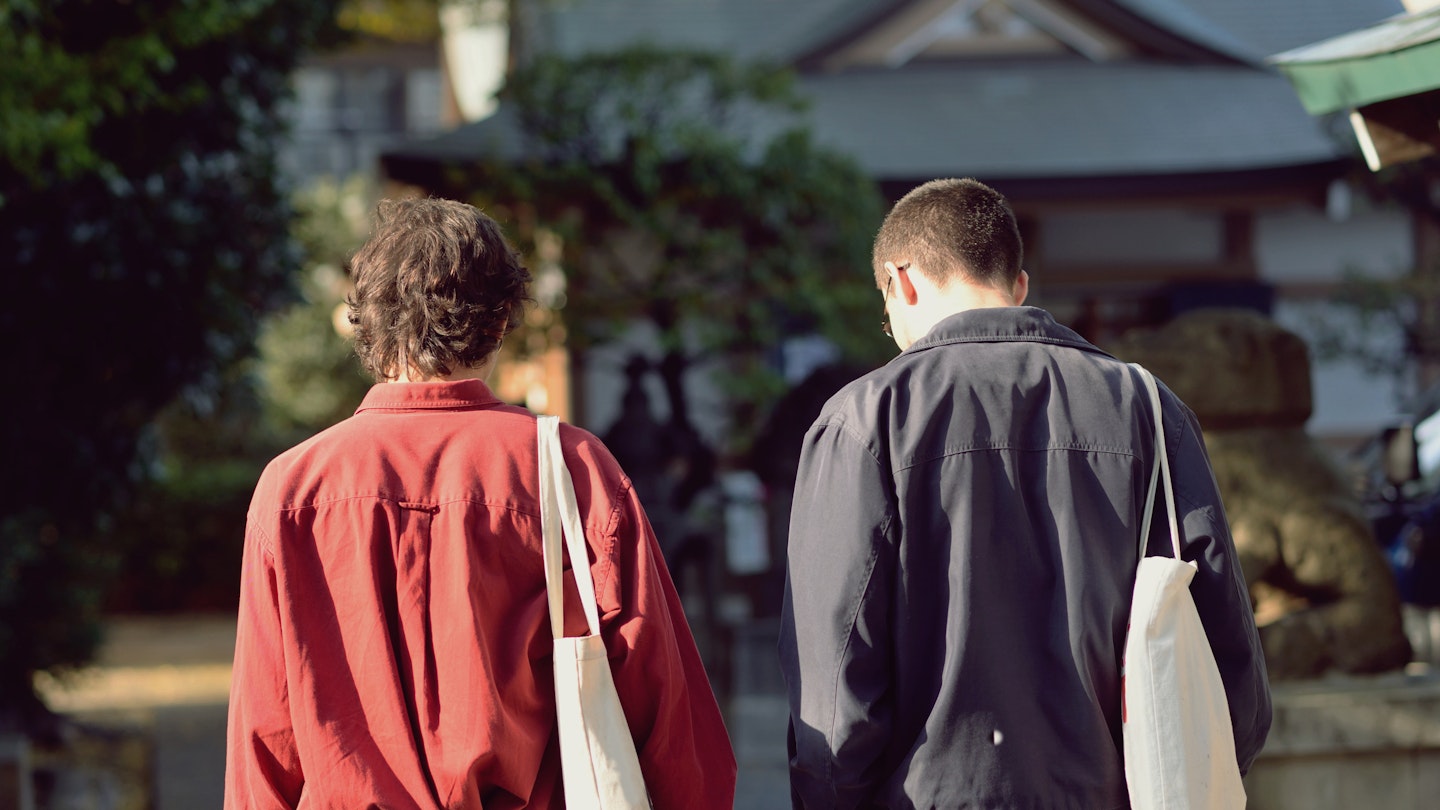
Unrestricted international tourism is returning to Japan on October 11 © Getty Images
On October 11, Japan will finally open its doors to independent travel following more than two years of some of the world’s toughest border restrictions. The country is also bringing back visa-free entry for visitors from more than 60 countries.
Does that mean it will be as easy to visit now as it was pre-pandemic? Sort of. There are still some pandemic-era rules in place, and you might find that locals are still taking many precautions against the virus compared to other nations. Yet at the same time, there’s much excitement on the ground about the return of international tourism, with Japan gearing up to welcome visitors back with exciting new attractions and events.
Eating on trains, embracing bidets and more tips for your Japan trip

1. Do I need to pack a mask?
Yes. Face masks have been a norm in Japan since before the pandemic. People often wear them year-round to protect their lungs from air pollution and to protect themselves and others from viruses, infections and allergens. While Japan has no official mask mandate in place, you’ll find that many businesses still require people to wear one indoors; you’ll also see people with a mask while on a bus, train or taxi, or in any sort of crowded indoor environment. They’re an everyday item for many, and it wouldn’t hurt to have one in your bag or pocket at all times. If you forget to pack one, it’s easy enough to find a surgical-style disposable face mask in airports and pharmacies all over Japan.

2. Have I checked which entry rules apply to me?
Japan has a color-coded classification entry scheme for all countries, which will continue even after travel rules ease on October 11. The system sets out distinct rules depending on what country you’re entering Japan from. Travelers coming from a “blue” country – a list that currently includes the United States, Canada, the UK, Australia, Mexico, Thailand and many EU nations – no longer have to quarantine and have the option to show proof of vaccination or negative test results before traveling. Travelers from “yellow” and “red” countries are subject to additional entry requirements, such as testing upon arrival and quarantine. You can view the complete list of countries and categories here .
The 10 most spectacular road trips in Japan
3. Have I downloaded the MySOS app?
MySOS is a smartphone app (available for Android and iOS ) that’s used to record your vaccine and health information for entry into Japan. It should help you get through airport security checks more quickly by being a one-stop shop for all of your essential documents. If you’re traveling with kids, their relevant information can be stored in your MySOS app, too.
4. Do I need to apply for a visa?
Japan will reinstate visa-free travel on October 11 for travelers from more than 68 countries, including the US, Canada, the UK, Ireland, Australia, Mexico, Argentina, Singapore, Thailand and more . If a passport holder a country on the visa-waiver list, you won’t need a visa to travel to Japan if you’re staying for less than 90 days.
The ultimate guide to karaoke in Japan

5. Should I reserve restaurants and museums in advance?
Japan has some of the most sophisticated, creative and celebrated restaurants on the planet. And for many travelers, its cuisine is one of Japan's biggest draws. Getting a table at the top spots has always been a challenge in the capital Tokyo (whether it's Kozue for seafood, Tamawarai for soba, or the two-star Michelin Den , you generally need to express your interest well before showing up), and in cities like Kyoto and Osaka – but since the pandemic, most restaurants across the country require advance reservation, a rule that hasn’t gone away even as the government relaxes its response to the pandemic.
Museums also have new entry systems in place as well, and you’ll likely need to book your spot before showing up. Check the website of the museum you wish to visit ahead of your trip to secure your preferred date and time.
8 unique places to stay in Tokyo
6. What new attractions can I add to my Japan itinerary?
Theme Parks
It feels like there’s always something exciting brewing in Japan. While the pandemic may have paused momentum, it’s now full speed ahead for the opening of some much-anticipated new attractions. After the world's first Super Nintendo World opened in Osaka during the pandemic, the next big thing is Ghibli Park , a theme park based on the works of animation legend Hayao Miyazaki set to open in Aichi Prefecture on November 1. Unlike traditional theme parks, you won’t find rides here: instead, you’ll walk through the dreamy, watercolor-style landscapes and architecture from Ghibli movies like My Neighbor Totoro and Howl's Moving Castle .
Earlier this year, Ishikawa’s New Prefectural Library opened, featuring 300,000 open stacks of books (and the capacity for two million). It’s quickly become a magnet for anyone who loves books, crafts, art and history, and anyone with even a passing interest in cutting-edge architecture. The building’s exterior resembles the pages of a book being turned, while inside you’ll find craftworks by Ishikawa’s master artisans.
Trying the traditional crafts of Ishikawa prefecture
Now that borders are open you can visit a new UNESCO site in northern Japan, open since May 2021. The Jomon Prehistoric Sites collectively form a Cultural Heritage Site, at which you’ll learn about the culture of the indigenous Jōmon people across 17 archaeological areas.
Bullet Trains
Japan’s public transport system is among the best in the world, its jewel the high-tech, high-speed bullet-train network, which is continuously expanding. If you want to test a new route on your travels, the Nishi- Kyūshū line opened in September, taking passengers on a 41-mile journey between the famous hot spring town of Takeo Onsen in the northwest and the city of Nagasaki (gateway to the Gotō Islands) in just 23 minutes.
Japan's best food and drink experiences
If you’re in Tokyo, check out Okushibu, the Japanese nickname for “Deep Shibuya.” This once well-kept secret within the shopping district of Shibuya has now become a go-to zone for late-night cafe culture, as well as some really unique and creative restaurants. Okushibu runs parallel to the new rooftop Miyashita Park , and you can stay in the heart of the action when the new Trunk Hotel Yoyogi Park opens in 2023. Expect a rooftop infinity pool with views across the park – and the city.
Explore related stories
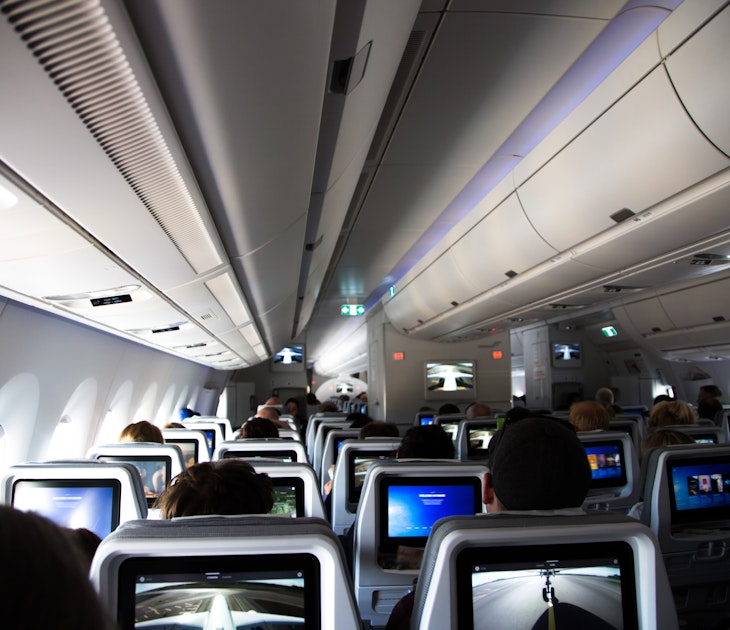
Oct 25, 2019 • 6 min read
From blockbusters to Bollywood, here's how that movie makes it onto your plane.

Apr 14, 2024 • 6 min read

Apr 3, 2024 • 17 min read

Apr 2, 2024 • 10 min read

Mar 31, 2024 • 7 min read

Mar 28, 2024 • 7 min read

Mar 28, 2024 • 6 min read

Mar 28, 2024 • 11 min read

Mar 26, 2024 • 8 min read
- Tours & Experiences
- Tailor-made Trips
- Bahasa Indonesia
Create a Japan Travel account
Email reset password link.
- Travel Alerts
Coronavirus in Japan: Travel Updates
Last updated: Oct 15th 2022
Follow our latest updates on the coronavirus (Covid-19) situation in Japan.
Since October 11th 2022 , Japan has fully reopened its borders to tourists, allowing visa-free, independent travel to Japan once again 🙌
- A visa is no longer required for short stays (up to 90 days).
- It's not necessary to book through a travel agency.
- Daily entry caps have been phased out entirely.
Table of contents
- Travel updates
- Staying safe in Japan: Covid FAQ
- Travel Advisories
- Official resources
As borders re-open, we'll no longer be updating this page regularly. Always check official venue websites for their latest updates.
Travel Updates
- Share on Facebook
- Share on Twitter
- Copy link to share
Borders set to Reopen to Independent Travel
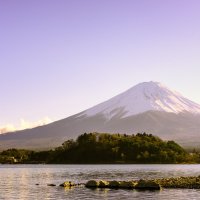
Japan will allow visa-free, independent tourism and abolish daily arrival caps from Oct 11th, announces Prime Minister Kishida. Via Japan Times
Borders open for Tour Groups
Japan's cautious reopening to overseas tourists coincides with strict infection-prevention measures and rules for those hoping to visit Japan. Via Nippon
Temporarily Closed Places in Japan: A-Z Directory

Mazda Museum
The Mazda Museum is currently closed. Tour reservations are also temporarily unavailable. Further updates will be posted to the Mazda Museum official..

Naeba Ski Resort

Robot Restaurant
Temporarily closed until further notice due to coronavirus measures

Toei Animation Museum
Closed temporarily until further notice, as part of nationwide anti-coronavirus measures.
Cancelled events
Covid in japan faq, what precautions work best against coronavirus.
The World Health Organization's advice is as follows:
- Wash your hands regularly – with soap and warm water, or alcohol-based hand sanitizers (at least 60% alcohol)
- Maintain social distancing – avoid those who are coughing or sneezing (at least 1m). Some countries are implementing lockdowns and recommending keeping 2m from strangers.
- Avoid touching eyes, nose and mouth – potential points of entry for coronavirus particles
- Practice respiratory hygiene – covering your mouth when you cough, and disposing of tissues promptly followed by washing hands.
- Wear a mask – wearing a face covering can help prevent the spread of infection. See their dedicated guidance here on face masks .
Should I wear a mask?
Summary : The WHO recommends wearing face masks as of June 2020.
If you are travelling in Japan, wearing a face mask in certain contexts (e.g. riding public transport, crowded areas) can be an effective measure as part of a wider strategy against infection/transmission, as per WHO guidelines .
Do I need travel insurance?
Whether you are already in Japan, preparing for a trip, or are planning ahead, we recommend taking out comprehensive travel insurance. This is both to insure against the prospect of unforeseen medical expenses if the need arise, but also against changing travel plans as the situation develops.
Note that it is essential to check your home country travel advice if you plan to travel to Japan. This is to ensure there is no impact on your insurance coverage.
What should I do if concerned by coronavirus in Japan?
Contact JNTO's Visitor Hotline. Japan National Tourism Organization (JNTO) operate a 24/7 visitor hotline service, available in English, Chinese, Korean and Japanese. It can be called for assistance in case of accidents or emergencies relating to the coronavirus:
- From Japan 050-3816-2787
- From Overseas +81-50-3816-2787
What should I do if I feel sick?
If you are feeling unwell, please consult the following:
- List of medical institutions with foreign-language services (English),
- The JNTO Hotline: 050-3816-2787
Can tourists enter Japan?
As of Oct 11th 2022, visitors can now enter Japan visa-free for short-term stays (up to 90 days).
Official Japan travel advisories
Please consult these official advisories from countries overseas to gauge the current advice on travelling overseas at this time.
Official resources
Let us know how we can help.
Update April 12, 2024
Information for u.s. citizens in the middle east.
- Travel Advisories |
- Contact Us |
- MyTravelGov |
Find U.S. Embassies & Consulates
Travel.state.gov, congressional liaison, special issuance agency, u.s. passports, international travel, intercountry adoption, international parental child abduction, records and authentications, popular links, travel advisories, mytravelgov, stay connected, legal resources, legal information, info for u.s. law enforcement, replace or certify documents.
Share this page:
Japan Travel Advisory
Travel advisory january 8, 2024, japan - level 1: exercise normal precautions.
Japan – Level 1: Exercise Normal Precautions
Reissued after periodic review without changes.
Exercise normal precautions in Japan.
Read the country information page for additional information on travel to Japan.
If you decide to travel to Japan:
- Enroll in the Smart Traveler Enrollment Program (STEP) to receive Alerts and make it easier to locate you in an emergency.
- Follow the Department of State on Facebook and Twitter .
- Follow Embassy Tokyo’s American Citizen Services section on Facebook and Twitter .
- Review the Country Security Report for Japan.
- Visit the CDC page for the latest Travel Health Information related to your travel.
- Prepare a contingency plan for emergency situations. Review the Traveler’s Checklist .
Travel Advisory Levels
Assistance for u.s. citizens, search for travel advisories, external link.
You are about to leave travel.state.gov for an external website that is not maintained by the U.S. Department of State.
Links to external websites are provided as a convenience and should not be construed as an endorsement by the U.S. Department of State of the views or products contained therein. If you wish to remain on travel.state.gov, click the "cancel" message.
You are about to visit:
- KAYAK for Business NEW
Japan Travel Restrictions
Traveler's COVID-19 vaccination status
Traveling from the United States to Japan
Open for vaccinated visitors
COVID-19 testing
Not required
Not required for vaccinated visitors
Restaurants
Recommended in public spaces.
Japan entry details and exceptions
Documents & additional resources, ready to travel, find flights to japan, find stays in japan, explore more countries on travel restrictions map, destinations you can travel to now, dominican republic, netherlands, philippines, puerto rico, switzerland, united arab emirates, united kingdom, know when to go.
Sign up for email alerts as countries begin to open - choose the destinations you're interested in so you're in the know.
Can I travel to Japan from the United States?
Most visitors from the United States, regardless of vaccination status, can enter Japan.
Can I travel to Japan if I am vaccinated?
Fully vaccinated visitors from the United States can enter Japan without restrictions.
Can I travel to Japan without being vaccinated?
Unvaccinated visitors from the United States can enter Japan without restrictions.
Do I need a COVID test to enter Japan?
Visitors from the United States are not required to present a negative COVID-19 PCR test or antigen result upon entering Japan.
Can I travel to Japan without quarantine?
Travelers from the United States are not required to quarantine.
Do I need to wear a mask in Japan?
Mask usage in Japan is recommended in public spaces.
Are the restaurants and bars open in Japan?
Restaurants in Japan are open. Bars in Japan are .

Japan travel requirements 2024: What travelers need to know
We aim to keep this post updated about Japan travel in 2024 with official Japan travel restrictions, requirements, and health and safety guidance. Our goal is to help you make informed decisions so you can travel confidently, safely, and responsibly in this new post-pandemic world of ours.
Since travel restrictions can vary by citizenship, we will be focusing our post on rules that affect U.S. citizens.
Last update: April 6, 2024. Originally published: July 2022.
Disclosure: This post contains some affiliate links. If you make a purchase through one of our links, we may receive a small commission, at no additional cost to you.
* Get our free Post-Pandemic Travel Checklist *
April 2024: “Tourism is really popular in Japan these days, and crowds can be difficult to avoid. T here are no more travel restrictions for Japan, so it’s a much simpler arrival process than last year. However, we still highly recommend filling out the Immigration and Customs form online for quicker arrival (see instructions below). We showed our passports and QR code at immigration and customs, did fingerprints, and had no questions asked. Wifi in both Tokyo airports can be frustratingly slow, so it’s important to screenshot/download the QR code before departure so you can access it offline. Just as it was pre-Covid, there is a percentage of Japanese people who wear masks out and about in public.” – Michelle & Jedd, Intentional Travelers
At the end of the post, we share more on-the-ground perspectives from local residents and travelers to Japan so you can get a sense of what it’s really like.
Table of Contents
Is Japan open for travel? Can I travel to Japan right now?
As of October 2022 , Japan is open for tourism for independent travelers. Visa-free travel for selected countries, including the US, has been resumed.
Tourists with U.S. passports can stay in Japan visa-free for up to three months. Find details and rules for entering Japan from other countries here .
Japan travel restrictions have been eased but travelers are asked to follow guidelines with regard to masks, social distancing, dining etiquette, and more.
As of April 2023 , a proof of vaccination or a negative Covid-19 test are no longer required for all travelers arriving in Japan.
To facilitate the arrival process, it’s highly recommended to submit your information online through Visit Japan Web before travel.
Steps for Traveling to Japan: What to Know (2024)
For a smoother arrival, travelers to Japan can pre-register for airport Immigration and Customs to receive the QR codes used for “Fast Track” at major airports across Japan.
We completed the Japan entry process in late March 2023 and again in early April 2024. It was admittedly a bit confusing, so I thought I’d share our experience and tips, as the process is still the same (apart from step 2).
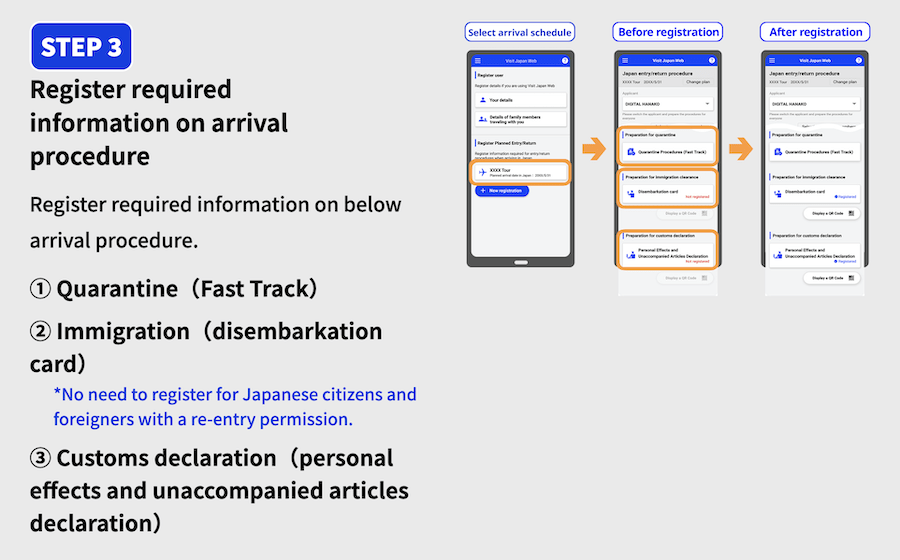
1. Register at Visit Japan Web
While the Fast Track/Quarantine procedures are no longer mandatory to complete in advance, I was glad I followed advice to pre-register through the Visit Japan Web site.
The latest they say you can register is at least 6 hours ahead of your flight to Japan .
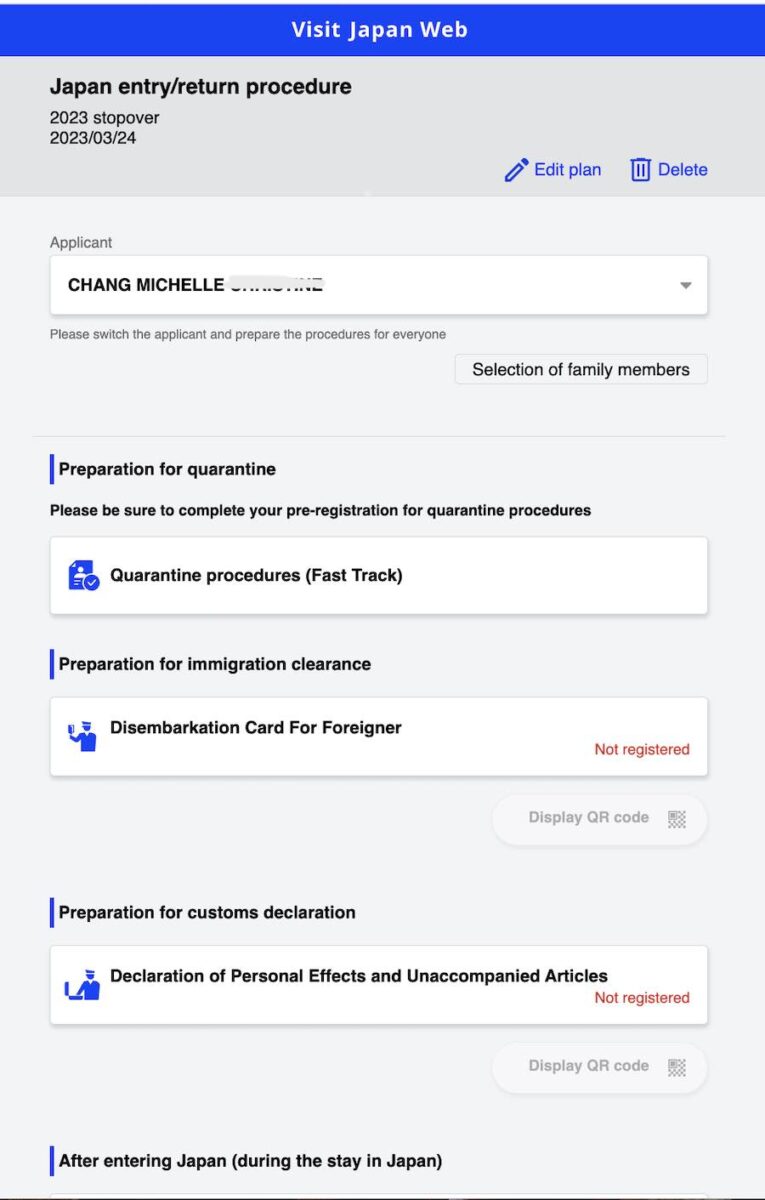
2. Submit your Covid documents in advance – NO LONGER REQUIRED
3. Register for immigration QR code
Returning to the main registration dashboard on the website, select the next module “Disembarkation Card for Foreginer,” which says it’s required for landing in Japan.
Some details pre-populated from from my profile. I selected Tourism for purpose of visit. Then there are three ways to report length of stay: year, month, day; as well as a few questions about any criminal background in Japan.
Once completed, a button “Display QR code” appears below the appropriate section.
Take a screenshot of the Immigration QR code and save it to your phone . It will have a yellow line above it.
If you don’t have the QR code , there are immigration cards available to fill out at standing desks located before entering the lines. Some people got all the way up to the immigration agent and were asked to step aside to fill out a card, which are also available next to each immigration stall.
The immigration line at Narita moved steadily but took about 25 minutes since several flights had arrived at once.
When I showed the QR code, the immigration officer simply took a headshot picture and fingerprint scans, then stuck a “landing permission” stamp in my passport for 90 days. No questions asked.
4. Register for Customs QR code
Returning again to the main dashboard, finally select “Preparation for customs declaration.” This registration allows travelers to go through an electronic declaration gate, which wasn’t super clear once we were at the airport.
I entered my flight origination (Hanoi) and number of family members with me (1). Then there’s the usual customs questions – type of goods, prohibited items, monetary funds, alcohol, cigarettes, souvenirs over 200,000y.
Again, take a screenshot of the Customs QR code and save it to your phone . It will have a blue line above it.
At Narita, the customs line for QR codes are labeled “electronic declaration” in blue. There are also kiosks that allow QR code, card, and duty free, as well as those that are for physical customs card only. The lines weren’t too long so it didn’t matter much which line we chose.
The customs officer had us scan our QR code and we could see our entered data displayed on an over-sized tablet-like device at the desk. No questions asked, we proceeded to exit the airport.
5. Sign up for travel insurance
It’s recommended to obtain insurance to cover medical costs related to COVID-19 in Japan. For travel insurance that covers Covid, we use Nomad Insurance by Safety Wing.
Quarantine rules in Japan: What happens if I get Covid?
Travelers are not required to quarantine upon arrival in Japan, provided that they are not suspected of having Covid-19. See details here .
Residents report that quarantine rules for testing positive may no longer be enforced anymore.
Previously, foreign tourists who tested positive for Covid while in Japan had to contact a local consultation center . A 7-10 days quarantine at a government-designated accommodation facility was required with all costs covered by the visitor.
The quarantine period could end within 7-10 days depending on the symptoms and/or negative COVID-19 test result. See details here .
Can I travel to Japan in April? Can I travel to Japan this Spring?
Travel to Japan in April is open . See details above and check back for updates.
Is it safe to fly to NRT Narita or HND Haneda International Airport ? Health screenings and body temperature checks are no longer in place at the airport. Wearing of masks is no longer required on flights or in the airports, though masking is still widely practiced.
Stringent cleaning and seating limits are implemented.
What is it like to fly to Japan right now? All Nippon Airways reports that masks are now optional. Additional procedures are in place at Immigration – please see details above.
Do Americans have to quarantine when traveling to Japan? No . See quarantine details above.
Does Japan check COVID-19 symptoms of incoming travelers? Health screening procedures such as temperature checks and simple symptom questionnaires are typically not in place at ports of entry anymore.
Does Japan require a negative Covid 19 test for travelers? A negative test is no longer required to enter Japan as of April 2023.
Does Japan require a proof of Coronavirus vaccine for travelers? A proof of Coronavirus vaccine is no longer required to enter Japan as of April 2023.
Do I still need to provide a negative Covid test or quarantine if I have been vaccinated? No. A negative Covid test, quarantine, or proof of vaccination are no longer required to enter Japan.
Is a booster shot required for travel to Japan? No. A booster shot is no longer required to enter Japan.
What Covid testing options are available for travelers? PCR and/or antigen tests are available for travelers in Japan. Travelers should contact the local consultation center to determine the location of testing facilities within Japan. A non-comprehensive list of some COVID-19 testing facilities can be found here .
Test results are available within 24 to 72 hours but many labs can return results in a matter of hours. PCR test costs vary from ¥2,500 to ¥16,500.
What healthcare options are available to travelers in Japan who get the virus? Japan hospitals and clinics are open. Foreign visitors are required to secure a medical insurance which that will cover medical costs in case they contract COVID-19 in Japan.
For travel insurance that covers Covid, check out Nomad Insurance by Safety Wing >
What service businesses and restaurants are open in Japan ? Businesses and restaurants in Japan are open. Some businesses may require their own mask rules or capacity limits.
What public gatherings are allowed in Japan? Public gatherings are allowed in Japan subject to safety guidelines.
Are face masks required in Japan? As of March 2023, wearing of face masks in Japan is recommended but no longer required.
Face masks are almost universally worn in public, especially in urban areas, indoors and on public transportation. The Consulate website states that failure to adhere to mask-wearing norms reflects poorly on foreign visitors.
Are buses running in Japan? Trains, buses and taxis are running as usual in Japan.
How has the Coronavirus impacted Japan?
Japan managed impressively well compared to most countries in the early days of the pandemic. Although Japan has been previously in a State of Emergency, the lockdowns were less disruptive on Japanese daily life.
However, Japan’s inbound tourism business lay dormant for years. Japan finally began easing restrictions in 2022 and reopened to travelers in June with strict entry requirements.
Japan finally eased entry requirements for travelers in October 2022 making it easier for travelers to visit the country. Visa-free travel has also been resumed for select countries.
Vaccination in Japan started later than some other countries. Around 80% of the population has been vaccinated and 64% had received a booster shot.
Tourism is now back with record numbers of visitors, however, staffing shortages have not fully recovered.
For the current situation in Japan, including: total COVID-19 positive cases; total cases in Japan; and COVID-19 testing in Japan, please see the Japan Ministry of Health site .
What should you pack for safely traveling in Japan?
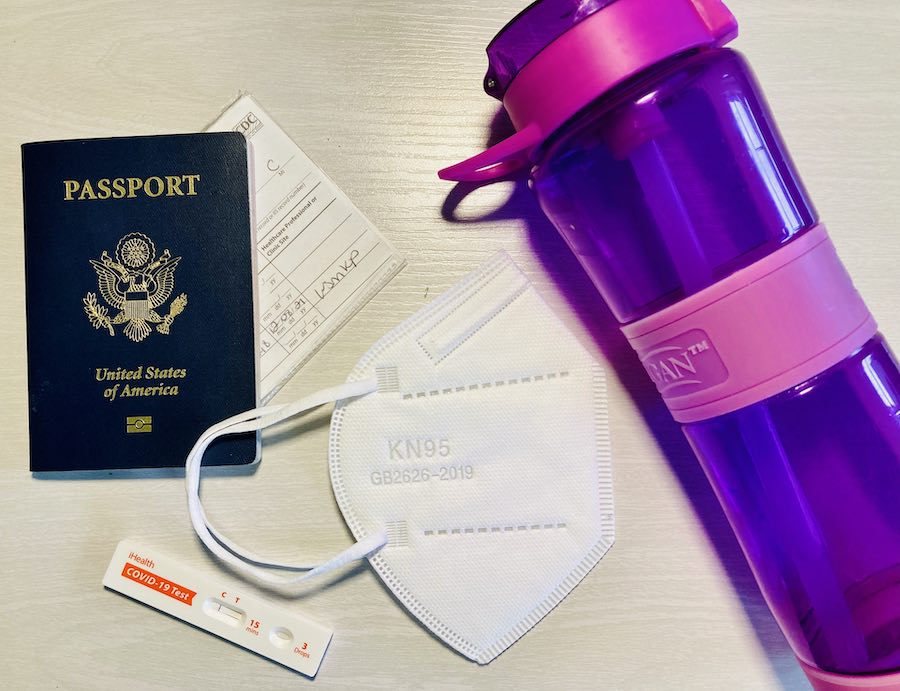
😷 Face Masks -Face coverings are recommended and widely used in public places. Find N95 masks at Bona Fide > or designer options at Vida >
💊 Medicine – Bring enough prescription and over-the-counter medication for your entire trip to avoid trips to the clinic.
💳 Vaccine Card Holder – Protect that paper CDC card when traveling abroad (if your country doesn’t offer a digital version). Get a simple plastic protector > or Vegan leather clippable > or Leather passport + card combo holder >
👃 Covid self-test – The most studied rapid antigen self-test with FDA emergency authorization. NOT valid to enter countries. Use for your own peace of mind. Order from CVS > or Walmart >
💧 Sealed water bottle – Make sure your reusable water bottle has a lid that’s not exposed to the air. We use one of each of the following: Shop insulated water bottles with protective lid > Shop water bottles with purification filter and protective lid >
✈️ Travel insurance that covers Covid – We’ve started using Nomad Insurance by Safety Wing for affordable evacuation, international medical, and trip coverage.
What do Japan locals and recent travelers say about visiting Japan now?
What is it like to visit Japan right now? It’s our goal to provide regular updates here from real people on the ground, to help potential visitors know what to expect. The following are subjective opinions only. Official travel guidance can be found above.
January 2024 – Brandon of Zimminaroundtheworld , expat living in Japan: “Japan is seeing an increase in tourism now that the country is open to visitors. Many visitors are traveling to Tokyo and Kyoto but some towns and cities like Nikko, Fukuoka, Hiroshima, and Naha are also seeing rises in tourism.
Currently there are no travel restrictions within Japan unless it is due to environmental catastrophes like the earthquake that occurred in Ishikawa Prefecture recently. Access to healthcare in Japan is easily available and affordable. Although foreigners can sometimes pay up to 200% more for healthcare it is still cheap.
Many attractions and famous sites around Japan especially in Kyoto and Tokyo are crowded with lines that are longer then expected. In general, restaurants in Japan are smaller and can only able to accommodate up to ten people or fewer and the space can feel cramped. Like anywhere else, keep an open mind and be flexible and there will be no problems while traveling around Japan.”
September 2023 – Jackie Szeto of Life of Doing , American traveler: “My husband and I traveled to Tokyo and Nikko, Japan for vacation in September 2023. Expect large crowds at major attractions, restaurants, and trains in major cities such as Tokyo and Kyoto. Visiting other destinations such as Nikko is a nice change of pace with fewer crowds, especially on the weekdays.
It’s recommended to complete the Immigration and Customs declaration on the Visit Japan Web to expedite arrival, but it’s not required. When landing at international airports, the QR codes for Immigration and Customs are still accepted. Otherwise, all COVID protocols have been dropped in the cities. Antibacterial hand sanitizer is still provided at entrances of hotels, restaurants, and shopping centers. Some people still wear masks in crowded areas and on trains, but most go mask-free.”
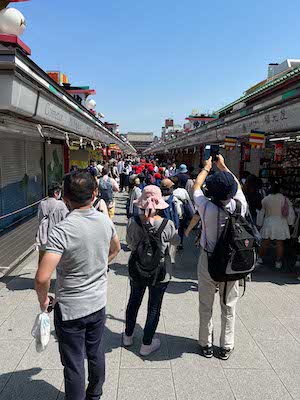
May 2023 – Sophie Pham of Delightful Travel Notes , traveler: “My husband and I were traveling in Japan for 11 days from May 11-21, 2023 for our vacation. I found that Japan had already welcomed visitors with open arms, free of earlier restrictions. The return of both domestic travelers and international tourists created a lively atmosphere, and crowds could be seen in a lot of places.
In May, it took us 45 minutes to clear immigration at Kansai International Airport after landing at around 7:45am.
All attractions and food venues were fully open, with no social distancing measures or mandatory mask rules, although some restaurant servers, locals, and taxi drivers still chose to wear masks. Some famous restaurants had long lines again, and popular attractions like Fushimi Inari, Kiyomizu-dera, and Senso-ji-ji could get crowded during the day. If there’s a particular popular restaurant you want to try, it may be best to make your dinner reservation in advance, especially for weekend. Overall, everything is lively again and we had a great time.”
March 2023 – Michelle, Intentional Travelers, American visitor: “We enjoyed a two day layover in Japan. The online procedures and QR codes were a bit confusing but I highly recommended doing them in advance of travel to make your arrival smoother.”
February 2023 – Joel, US traveler: “For the most part the Japanese are wearing masks. I’d say mask wearing is at about 99%. Despite the crowds in the city and packed trains and subways, it honestly feels way safer than generally any place in America where mask wearing is far from the majority. ANA enforces a mask wearing requirement whereas United is pretty much a free for all.
One key thing that is good to know is at the ticketing counter they need to know your return flight info when initially checking in. We had all the other Japan travel docs as far as the gov mandated requirements but this one kinda caught us off guard. The immigration line may seem staggering but it moves. ”
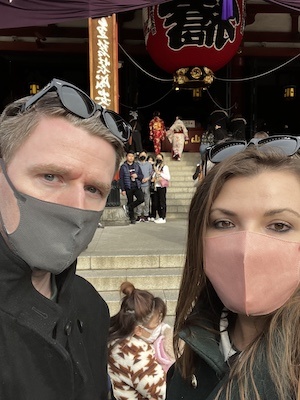
January 2023 – Lizzie of Wanderlust & Life , UK traveler: “I flew to Tokyo in January 2023 for 3 days as part of a stopover between Australia and the UK. For us it felt like the country is so happy to welcome tourists again. We were slightly worried about visiting or entry restrictions changing last minute but the airline kept us up to date and apart from filling out a lot of forms on arrival it felt quite normal being there.
As Japan only opened recently there weren’t as many tourists as we were expecting which was a plus really. We were made to feel so welcome in the country.
Masks are mandatory indoors and everyone seemed to be following this. The vast majority of people were also wearing masks outdoors too. Sanitiser is readily available in restaurants and tourist attractions. We didn’t encounter any contact tracing or even requests to show covid passes. The only frustration we had was that we flew JAL and we had to wear masks our whole flight which was about 14 hours in one go and this was enforced by cabin crew.”
November 2022 – Darryl H., New Zealand traveler: “My visit to Japan involved a return to the sort of measures that, in my home country of New Zealand, had been abandoned some time ago. The first action on arriving at Tokyo’s Narita Airport, with my mask firmly in place, was to allow officials to check and confirm I had complied with mandatory online registration of evidence of my vaccination status. Once this had been done, the arrivals process was pretty much standard.
During my 10-day stay, I experienced no restrictions on my movements or activities. The differences were in the roles of masks, sanitiser and – in some instances – distancing. The wearing of masks indoors and on public transport is close to one hundred percent, whether or not they are demanded. Outdoors, in most situations, they appear to be worn by at least 98 percent of people, although in some areas later in the evening there is an obvious relaxation in standards – especially among younger people. While most tourists appear happy to comply with the standards followed by locals, the proportion of non-mask use by non-Japanese is clearly larger than by Japanese. At no stage did I see any visitor reproached for this.
There is sanitiser on hand (pun intended) everywhere. It is probably accessed by about a third of people. There are many locals who are fastidious about sanitising.
While I observed no enforced distancing on public transport or in the street, it is definitely in place in cafes and other eateries. Most places I visited had plastic partitioning between patrons, and crosses to discourage the use of every second seat. Groups or couples are, of course, welcome to sit together.
The buffet breakfast in my hotel illustrates all three of the above differences. When I arrived at breakfast each morning, masked of course, the attendant ensured that I first sanitised my hands and then put on plastic gloves. Only then could I approach the serving implements and food. I would then sit on one of two seats (the second having a cross on it), both of which were partitioned off from the next pair of seats. Seats with another seat opposite were separated by another plastic partition. If I wanted to return to the buffet for more food, I first had to remask and re-glove. Once I forgot the gloves, and was politely turned back before I could touch the serving implements.
It is not uncommon for Japanese hospitality venues to give high priority to cleanliness, but there seems to be super-high priority now. Where in New Zealand I might expect a quick wipe over of a table between customers, in Tokyo it now appears to be a thorough and sometimes deep clean.
The precautions in no way reduced my pleasure in revisiting Tokyo. And they increased at least my perception of being protected.”
September 2022 – Jackson, American visitor: “Traveling to Japan reminded me of the COVID situation in Hawaii a year ago. People go about their day with a medical mask. Every store front has hand sanitizers and thermo cameras. COIVD testing and vaccination clinics are common place. Despite these COVID precautions, Japanese residents and businesses continue to welcome visitors with refreshing grace and hospitality. Japan’s omotenashi , beautiful scenery, and extraordinary delicacies are worth exploring and appreciating, but can tempt visitors into overlooking the uncertainty that underlines Japan. I hope visitors will take the time to learn about the challenges of the Japanese people and reciprocate Japan’s hospitality with a gracious thank you.”
Aug 21 2022 – Y., American Japanese dual citizen: “ I returned from visiting family in Japan two days ago. Travel is still tough. The plane was empty – only 20 passengers on a big airplane. My pre-travel Covid test was 10 minutes earlier than the required 72 hours so I was turned away at the airport. I scrambled to find a last minute PCR test with rapid results and rush back to the airport.”
August 2022 – Christine, American visitor: “Japan isn’t currently open to tourists. I was there for a school conference, and had to get a conference visa. One has to get a visa for Japan in advance and you can only get one with an EFRS form filled out from someone in Japan.
I had to have a negative PCR test from within 72 hours of departure time. There’s eased quarantine procedures, which depend on the countries you’ve been to in the previous 2 weeks. And you have to have the MySOS app on your phone because they might check up on you. It also expedites your entry because you can upload all the necessary forms/COVID test/questionnaire ahead of time.
Everyone wears a mask everywhere, and they’re available for cheap at convenience stores. Because I was on a university’s campus most of the time, I had to report my temperature and if I was having any symptoms to the University every day.”
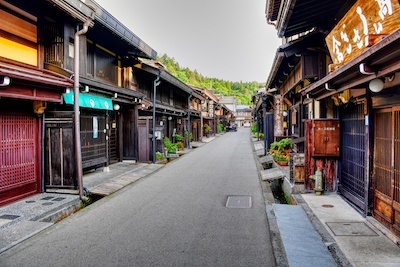
July 2022 – Brandon of https://zimminaroundtheworld.com , Expat in Japan: “Currently Japan is only doing guided tours for international tourism. Travel entry for normal tourism is not an option at the moment. I recently took a trip around central Japan and visited a variety of cities and saw hardly any tourists. It’s nice to get great photos of popular attractions without crowds of people in the photos. But at the same time, it is taking a toll on the economy. I’ve seen shops and restaurants struggle to survive here and locals begging for tourism to come back.
Masks have been worn in Japan even before Covid. To this day, the majority of the population wears masks and obeys the rules, this includes both foreigners and locals. I wear a mask when leaving my apartment and only take it off when social distancing can be achieved or while eating at a restaurant. The positive aspect about Covid is that there are no long lines to enter attractions or eating establishments. I feel public transportation is safe here as the Japanese are very good and sanitizing everything.”
Planning a trip to Japan?
Check out our other Japan travel resources: – Great Things To Do Around Iwakuni, Japan
If you have questions or updates about travel to Japan during the Coronavirus crisis or post-pandemic, please let us know in the comments below.
~ Pin this post for later or share with friends ~
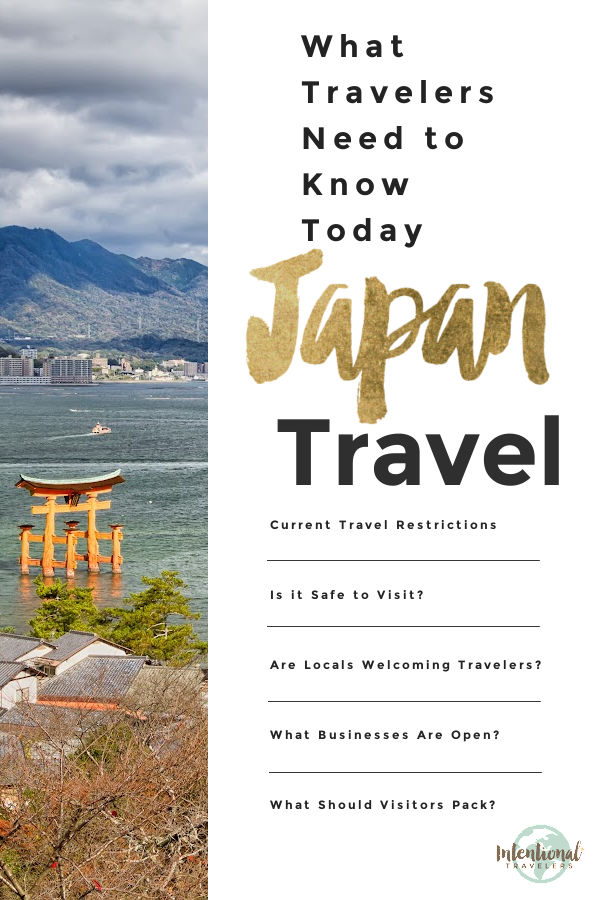
Disclaimer: Please note, travel restrictions change frequently. Readers must take responsibility for verifying information through official sources like the State Department and CDC, in respect to their specific situations. No responsibility can be accepted by Intentional Travelers for action or inaction as a result of information provided through IntentionalTravelers.com. Any information provided here is issued as general information only.
Similar Posts

Suggested Vietnam Itinerary: 10 Days, 2 Weeks, or 1 Month
Vietnam has become one of our favorite travel destinations. This post will help you create the best Vietnam itinerary for your own trip, whether it’s for 10 days, 2 weeks, or 1 month. We had the good fortune of having friends who were living in Vietnam for several years. They showed us around Hanoi and…
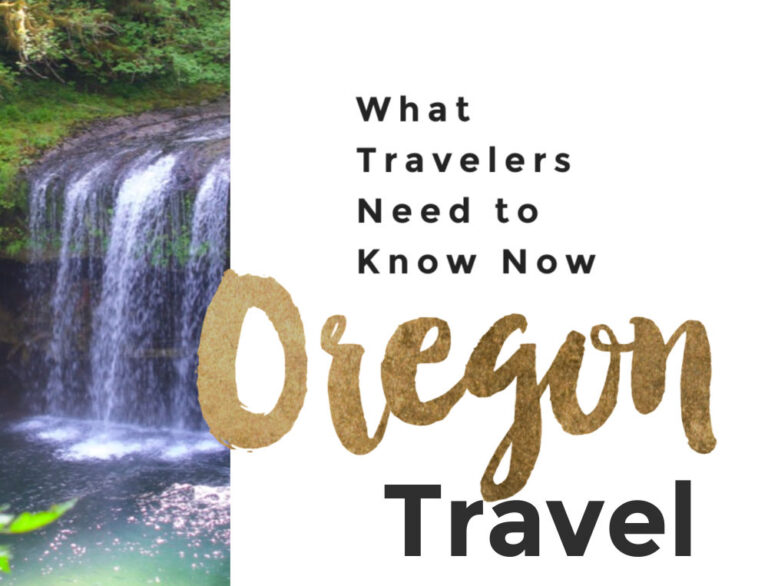
Oregon travel requirements 2024: What travelers need to know
We aim to keep this post updated about Oregon travel in 2024 with official Oregon travel restrictions, requirements, and health and safety guidance. Our goal is to help you make informed decisions so you can travel confidently, safely, and responsibly in this new post-pandemic world of ours. We are Oregonians so this destination is very…

Best things about Georgetown Penang (Plus street art + street food map)
George Town, Penang, Malaysia was recommended to us by fellow nomads. Now that we’ve been, we think Georgetown is the best place to visit in Southeast Asia for first time backpackers, couples, and new nomads. In this post we’ll share: – 6 Reasons why George Town is where to go in Southeast Asia for the…
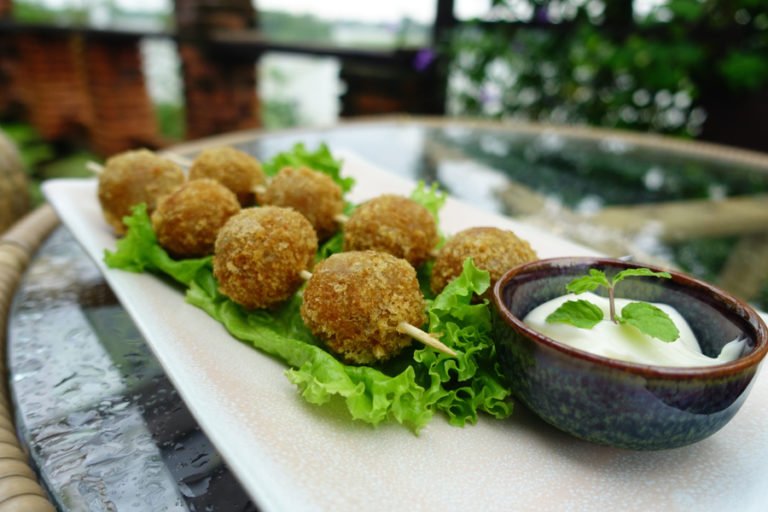
Best Food in Hoi An: Our Favorite Hoi An Restaurants
If you’re wondering where to eat in Hoi An, allow us to point you to the best food and the best restaurants in Hoi An, Vietnam. With so many affordable food options in Vietnam, we’ve had the opportunity to eat out nearly every day for lunch and dinner. Since we’ve stayed in Hoi An for…
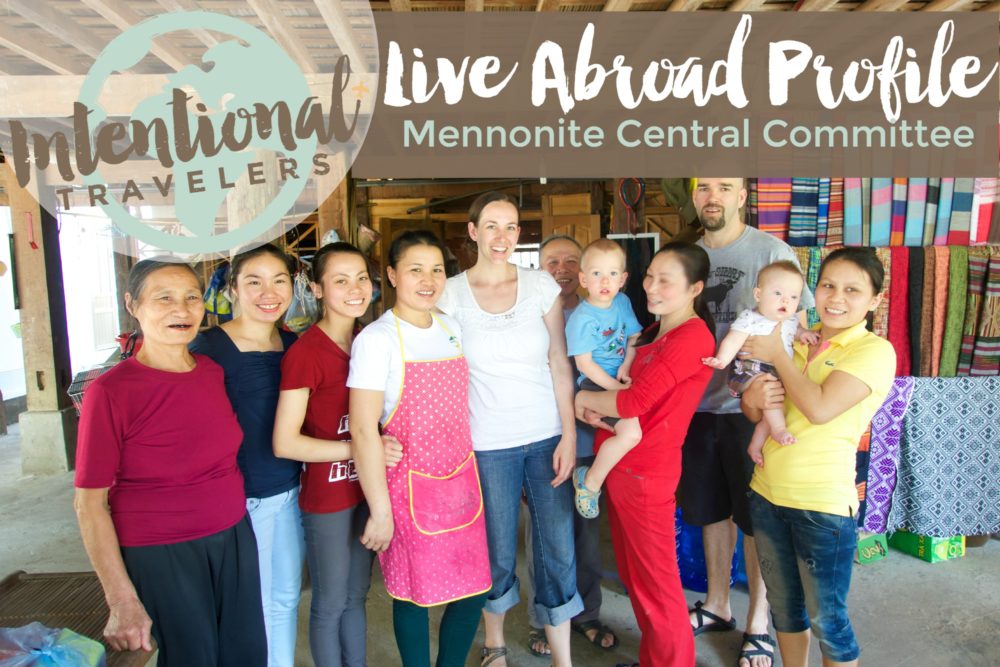
Volunteer Abroad Profile: MCC International
What if you could do meaningful work abroad and not have to worry about money? In our series of Live Abroad Profiles, we share stories and examples of great opportunities and the people who are pursuing them. Our first profile features our dear friends… Updated: 2023. Originally published: June 2015. Volunteer Profile: The Treadway Family In Spring…
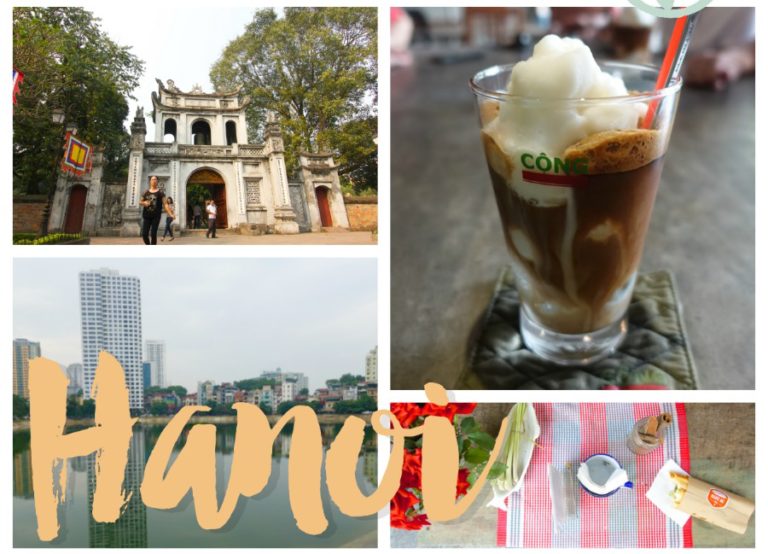
Things to Do in Hanoi, Vietnam on a Budget
Vietnam’s capitol, Hanoi, is a bustling city with a lot to explore. Cost of living is fairly cheap so there are many things to do in Hanoi on a budget. Despite not loving big cities and traffic, we have really enjoyed our past two visits to Hanoi where we have expat friends who graciously host us…
Hi Great article ! I noticed you have been vaccinated once with JJ (same here) . You mentioned the requirements for boosters but it sounds like you haven’t had a booster? I tried to sort through the link page but couldn’t find any further info. So my question is I’m planning to travel after May 8th with 1 JJ vaccination, I’m Canadian, but will be coming from Indonesia. Thanks for any insight you might have
Hi and thanks for visiting our blog. While we had the single JJ vaccination, we also had boosters. I mentioned it because the Japan entry form allows you to essentially count JJ as two shots out of the three that are required. In other words, at least one booster is currently required for entry to Japan. That said, vaccine documentation will no longer be required after May 8 so you shouldn’t have to worry about it.
I am travelling to the US from Australia via Japan in September. I fly with JAL, from Melbourne (MEL) arriving at Haneda International Airport (HND), but need to fly out of Narita International Airport (NRT) to New York (JFK).
I would like to know if I will be allowed to travel, via Japan, in September.
Australia is in Blue Category and I have had 3rd dose of Covid vaccination.
I look forward to your reply soon.
Thank you for your question. Unfortunately, it’s difficult to say what will be possible in September, as we do expect the rules to change over time. Currently, foreign travelers are limited to package tours and may not use public transit. To find out if any exceptions can be made for transit between airports, you can try the Japan visitor hotline .
Leave a Reply Cancel reply
Your email address will not be published. Required fields are marked *
This site uses Akismet to reduce spam. Learn how your comment data is processed .
You are using an outdated browser. Upgrade your browser today or install Google Chrome Frame to better experience this site.
Japan Traveler View
Travel health notices, vaccines and medicines, non-vaccine-preventable diseases, stay healthy and safe.
- Packing List
After Your Trip
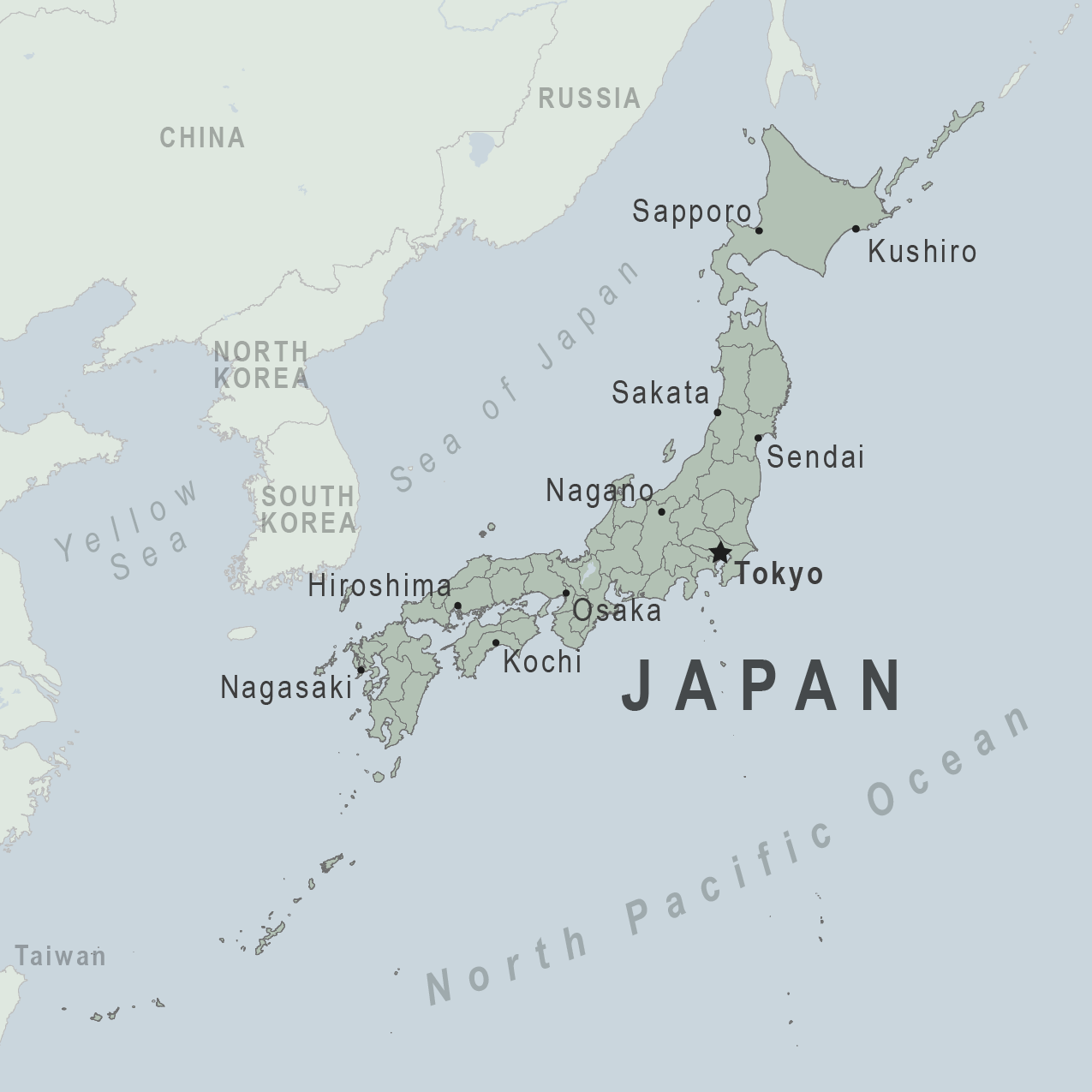
There are no notices currently in effect for Japan.
⇧ Top
Check the vaccines and medicines list and visit your doctor at least a month before your trip to get vaccines or medicines you may need. If you or your doctor need help finding a location that provides certain vaccines or medicines, visit the Find a Clinic page.
Routine vaccines
Recommendations.
Make sure you are up-to-date on all routine vaccines before every trip. Some of these vaccines include
- Chickenpox (Varicella)
- Diphtheria-Tetanus-Pertussis
- Flu (influenza)
- Measles-Mumps-Rubella (MMR)
Immunization schedules
All eligible travelers should be up to date with their COVID-19 vaccines. Please see Your COVID-19 Vaccination for more information.
COVID-19 vaccine
Hepatitis A
Consider hepatitis A vaccination for most travelers. It is recommended for travelers who will be doing higher risk activities, such as visiting smaller cities, villages, or rural areas where a traveler might get infected through food or water. It is recommended for travelers who plan on eating street food.
Hepatitis A - CDC Yellow Book
Dosing info - Hep A
Hepatitis B
Recommended for unvaccinated travelers younger than 60 years old traveling to Japan. Unvaccinated travelers 60 years and older may get vaccinated before traveling to Japan.
Hepatitis B - CDC Yellow Book
Dosing info - Hep B
Japanese Encephalitis
Recommended for travelers who
- Are moving to an area with Japanese encephalitis to live
- Spend long periods of time, such as a month or more, in areas with Japanese encephalitis
- Frequently travel to areas with Japanese encephalitis
Consider vaccination for travelers
- Spending less than a month in areas with Japanese encephalitis but will be doing activities that increase risk of infection, such as visiting rural areas, hiking or camping, or staying in places without air conditioning, screens, or bed nets
- Going to areas with Japanese encephalitis who are uncertain of their activities or how long they will be there
Not recommended for travelers planning short-term travel to urban areas or travel to areas with no clear Japanese encephalitis season.
Japanese encephalitis - CDC Yellow Book
Japanese Encephalitis Vaccine for US Children
Cases of measles are on the rise worldwide. Travelers are at risk of measles if they have not been fully vaccinated at least two weeks prior to departure, or have not had measles in the past, and travel internationally to areas where measles is spreading.
All international travelers should be fully vaccinated against measles with the measles-mumps-rubella (MMR) vaccine, including an early dose for infants 6–11 months, according to CDC’s measles vaccination recommendations for international travel .
Measles (Rubeola) - CDC Yellow Book
Japan is free of dog rabies. However, rabies may still be present in wildlife species, particularly bats. CDC recommends rabies vaccination before travel only for people working directly with wildlife. These people may include veterinarians, animal handlers, field biologists, or laboratory workers working with specimens from mammalian species.
Rabies - CDC Yellow Book
Tick-borne Encephalitis
Avoid bug bites
Learn more about tick-borne encephalitis at your destination .
Tick-borne Encephalitis - CDC Yellow Book
Avoid contaminated water
Leptospirosis
How most people get sick (most common modes of transmission)
- Touching urine or other body fluids from an animal infected with leptospirosis
- Swimming or wading in urine-contaminated fresh water, or contact with urine-contaminated mud
- Drinking water or eating food contaminated with animal urine
- Avoid contaminated water and soil
Clinical Guidance
Airborne & droplet, avian/bird flu.
- Being around, touching, or working with infected poultry, such as visiting poultry farms or live-animal markets
- Avoid domestic and wild poultry
- Breathing in air or accidentally eating food contaminated with the urine, droppings, or saliva of infected rodents
- Bite from an infected rodent
- Less commonly, being around someone sick with hantavirus (only occurs with Andes virus)
- Avoid rodents and areas where they live
- Avoid sick people
Tuberculosis (TB)
- Breathe in TB bacteria that is in the air from an infected and contagious person coughing, speaking, or singing.
Learn actions you can take to stay healthy and safe on your trip. Vaccines cannot protect you from many diseases in Japan, so your behaviors are important.
Eat and drink safely
Food and water standards around the world vary based on the destination. Standards may also differ within a country and risk may change depending on activity type (e.g., hiking versus business trip). You can learn more about safe food and drink choices when traveling by accessing the resources below.
- Choose Safe Food and Drinks When Traveling
- Water Treatment Options When Hiking, Camping or Traveling
- Global Water, Sanitation and Hygiene | Healthy Water
- Avoid Contaminated Water During Travel
You can also visit the Department of State Country Information Pages for additional information about food and water safety.
Prevent bug bites
Although Japan is an industrialized country, bug bites here can still spread diseases. Just as you would in the United States, try to avoid bug bites while spending time outside or in wooded areas.
What can I do to prevent bug bites?
- Cover exposed skin by wearing long-sleeved shirts, long pants, and hats.
- Use an appropriate insect repellent (see below).
- Consider using permethrin-treated clothing and gear if spending a lot of time outside. Do not use permethrin directly on skin.
What type of insect repellent should I use?
- FOR PROTECTION AGAINST TICKS AND MOSQUITOES: Use a repellent that contains 20% or more DEET for protection that lasts up to several hours.
- Picaridin (also known as KBR 3023, Bayrepel, and icaridin)
- Oil of lemon eucalyptus (OLE) or para-menthane-diol (PMD)
- 2-undecanone
- Always use insect repellent as directed.
What should I do if I am bitten by bugs?
- Avoid scratching bug bites, and apply hydrocortisone cream or calamine lotion to reduce the itching.
- Check your entire body for ticks after outdoor activity. Be sure to remove ticks properly.
What can I do to avoid bed bugs?
Although bed bugs do not carry disease, they are an annoyance. See our information page about avoiding bug bites for some easy tips to avoid them. For more information on bed bugs, see Bed Bugs .
For more detailed information on avoiding bug bites, see Avoid Bug Bites .
Stay safe outdoors
If your travel plans in Japan include outdoor activities, take these steps to stay safe and healthy during your trip:
- Stay alert to changing weather conditions and adjust your plans if conditions become unsafe.
- Prepare for activities by wearing the right clothes and packing protective items, such as bug spray, sunscreen, and a basic first aid kit.
- Consider learning basic first aid and CPR before travel. Bring a travel health kit with items appropriate for your activities.
- If you are outside for many hours in the heat, eat salty snacks and drink water to stay hydrated and replace salt lost through sweating.
- Protect yourself from UV radiation : use sunscreen with an SPF of at least 15, wear protective clothing, and seek shade during the hottest time of day (10 a.m.–4 p.m.).
- Be especially careful during summer months and at high elevation. Because sunlight reflects off snow, sand, and water, sun exposure may be increased during activities like skiing, swimming, and sailing.
- Very cold temperatures can be dangerous. Dress in layers and cover heads, hands, and feet properly if you are visiting a cold location.
Stay safe around water
- Swim only in designated swimming areas. Obey lifeguards and warning flags on beaches.
- Do not dive into shallow water.
- Avoid swallowing water when swimming. Untreated water can carry germs that make you sick.
- Practice safe boating—follow all boating safety laws, do not drink alcohol if you are driving a boat, and always wear a life jacket.
Keep away from animals
Most animals avoid people, but they may attack if they feel threatened, are protecting their young or territory, or if they are injured or ill. Animal bites and scratches can lead to serious diseases such as rabies.
Follow these tips to protect yourself:
- Do not touch or feed any animals you do not know.
- Do not allow animals to lick open wounds, and do not get animal saliva in your eyes or mouth.
- Avoid rodents and their urine and feces.
- Traveling pets should be supervised closely and not allowed to come in contact with local animals.
- If you wake in a room with a bat, seek medical care immediately. Bat bites may be hard to see.
All animals can pose a threat, but be extra careful around dogs, bats, monkeys, sea animals such as jellyfish, and snakes. If you are bitten or scratched by an animal, immediately:
- Wash the wound with soap and clean water.
- Go to a doctor right away.
- Tell your doctor about your injury when you get back to the United States.
Reduce your exposure to germs
Follow these tips to avoid getting sick or spreading illness to others while traveling:
- Wash your hands often, especially before eating.
- If soap and water aren’t available, clean hands with hand sanitizer (containing at least 60% alcohol).
- Don’t touch your eyes, nose, or mouth. If you need to touch your face, make sure your hands are clean.
- Cover your mouth and nose with a tissue or your sleeve (not your hands) when coughing or sneezing.
- Try to avoid contact with people who are sick.
- If you are sick, stay home or in your hotel room, unless you need medical care.
Avoid sharing body fluids
Diseases can be spread through body fluids, such as saliva, blood, vomit, and semen.
Protect yourself:
- Use latex condoms correctly.
- Do not inject drugs.
- Limit alcohol consumption. People take more risks when intoxicated.
- Do not share needles or any devices that can break the skin. That includes needles for tattoos, piercings, and acupuncture.
- If you receive medical or dental care, make sure the equipment is disinfected or sanitized.
Know how to get medical care while traveling
Plan for how you will get health care during your trip, should the need arise:
- Carry a list of local doctors and hospitals at your destination.
- Review your health insurance plan to determine what medical services it would cover during your trip. Consider purchasing travel health and medical evacuation insurance for things your regular insurance will not cover.
- Carry a card that identifies, in the local language, your blood type, chronic conditions or serious allergies, and the generic names of any medicines you take.
- Bring copies of your prescriptions for medicine and for eye glasses and contact lenses.
- Some prescription drugs may be illegal in other countries. Call Japan’s embassy to verify that all of your prescription(s) are legal to bring with you.
- Bring all the medicines (including over-the-counter medicines) you think you might need during your trip, including extra in case of travel delays. Ask your doctor to help you get prescriptions filled early if you need to.
Many foreign hospitals and clinics are accredited by the Joint Commission International. A list of accredited facilities is available at their website ( www.jointcommissioninternational.org ).
Select safe transportation
Motor vehicle crashes are the #1 killer of healthy US citizens in foreign countries.
Be smart when you are traveling on foot.
- Use sidewalks and marked crosswalks.
- Pay attention to the traffic around you, especially in crowded areas.
- Remember, people on foot do not always have the right of way in other countries.
Riding/Driving
Choose a safe vehicle.
- Choose official taxis or public transportation, such as trains and buses.
- Make sure there are seatbelts.
- Avoid overcrowded, overloaded, top-heavy buses and minivans.
- Avoid riding on motorcycles or motorbikes, especially motorbike taxis. (Many crashes are caused by inexperienced motorbike drivers.)
- Choose newer vehicles—they may have more safety features, such as airbags, and be more reliable.
- Choose larger vehicles, which may provide more protection in crashes.
Think about the driver.
- Do not drive after drinking alcohol or ride with someone who has been drinking.
- Consider hiring a licensed, trained driver familiar with the area.
- Arrange payment before departing.
Follow basic safety tips.
- Wear a seatbelt at all times.
- Sit in the back seat of cars and taxis.
- When on motorbikes or bicycles, always wear a helmet. (Bring a helmet from home, if needed.)
- Do not use a cell phone or text while driving (illegal in many countries).
- Travel during daylight hours only, especially in rural areas.
- If you choose to drive a vehicle in Japan, learn the local traffic laws and have the proper paperwork.
- Get any driving permits and insurance you may need. Get an International Driving Permit (IDP). Carry the IDP and a US-issued driver's license at all times.
- Check with your auto insurance policy's international coverage, and get more coverage if needed. Make sure you have liability insurance.
- Avoid using local, unscheduled aircraft.
- If possible, fly on larger planes (more than 30 seats); larger airplanes are more likely to have regular safety inspections.
- Try to schedule flights during daylight hours and in good weather.
Helpful Resources
Road Safety Overseas (Information from the US Department of State): Includes tips on driving in other countries, International Driving Permits, auto insurance, and other resources.
The Association for International Road Travel has country-specific Road Travel Reports available for most countries for a minimal fee.
Traffic flows on the left side of the road in Japan.
- Always pay close attention to the flow of traffic, especially when crossing the street.
- LOOK RIGHT for approaching traffic.
Maintain personal security
Use the same common sense traveling overseas that you would at home, and always stay alert and aware of your surroundings.
Before you leave
- Research your destination(s), including local laws, customs, and culture.
- Monitor travel advisories and alerts and read travel tips from the US Department of State.
- Enroll in the Smart Traveler Enrollment Program (STEP) .
- Leave a copy of your itinerary, contact information, credit cards, and passport with someone at home.
- Pack as light as possible, and leave at home any item you could not replace.
While at your destination(s)
- Carry contact information for the nearest US embassy or consulate .
- Carry a photocopy of your passport and entry stamp; leave the actual passport securely in your hotel.
- Follow all local laws and social customs.
- Do not wear expensive clothing or jewelry.
- Always keep hotel doors locked, and store valuables in secure areas.
- If possible, choose hotel rooms between the 2nd and 6th floors.
Healthy Travel Packing List
Use the Healthy Travel Packing List for Japan for a list of health-related items to consider packing for your trip. Talk to your doctor about which items are most important for you.
Why does CDC recommend packing these health-related items?
It’s best to be prepared to prevent and treat common illnesses and injuries. Some supplies and medicines may be difficult to find at your destination, may have different names, or may have different ingredients than what you normally use.
If you are not feeling well after your trip, you may need to see a doctor. If you need help finding a travel medicine specialist, see Find a Clinic . Be sure to tell your doctor about your travel, including where you went and what you did on your trip. Also tell your doctor if you were bitten or scratched by an animal while traveling.
For more information on what to do if you are sick after your trip, see Getting Sick after Travel .
Map Disclaimer - The boundaries and names shown and the designations used on maps do not imply the expression of any opinion whatsoever on the part of the Centers for Disease Control and Prevention concerning the legal status of any country, territory, city or area or of its authorities, or concerning the delimitation of its frontiers or boundaries. Approximate border lines for which there may not yet be full agreement are generally marked.
Other Destinations
If you need help finding travel information:
Message & data rates may apply. CDC Privacy Policy
File Formats Help:
- Adobe PDF file
- Microsoft PowerPoint file
- Microsoft Word file
- Microsoft Excel file
- Audio/Video file
- Apple Quicktime file
- RealPlayer file
- Zip Archive file
Exit Notification / Disclaimer Policy
- The Centers for Disease Control and Prevention (CDC) cannot attest to the accuracy of a non-federal website.
- Linking to a non-federal website does not constitute an endorsement by CDC or any of its employees of the sponsors or the information and products presented on the website.
- You will be subject to the destination website's privacy policy when you follow the link.
- CDC is not responsible for Section 508 compliance (accessibility) on other federal or private website.
- Subscribe Digital Print

- Semiconductors
- Latest News
- Deep Dive Podcast
Today's print edition
Home Delivery
- Crime & Legal
- Science & Health
- More sports
- CLIMATE CHANGE
- SUSTAINABILITY
- EARTH SCIENCE
- Food & Drink
- Style & Design
- TV & Streaming
- Entertainment news
Golden Week travel plans near pre-pandemic levels as overseas bookings surge
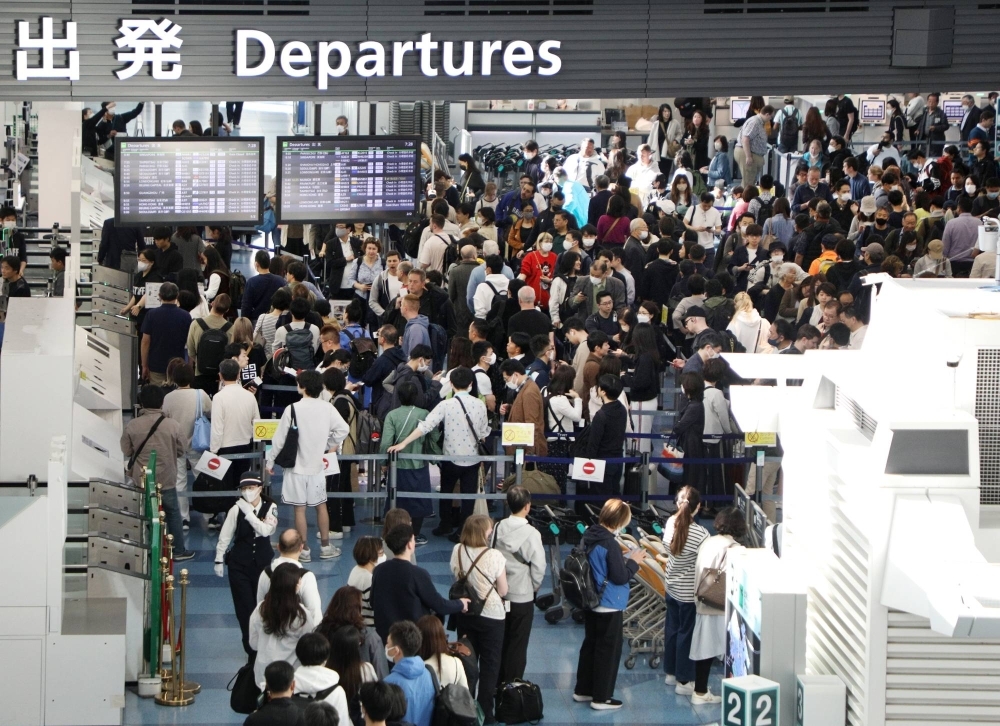
An estimated 23.3 million people in Japan are expected to travel during the Golden Week holidays, marking a robust resurgence to 90% of pre-pandemic levels, according to survey results from travel agency JTB.
Conducted online in early March, JTB's preliminary survey reached 10,000 respondents nationwide, spanning ages 15 to 79.
Among the findings, 2,060 respondents expressed an intent to travel, with a total of 23.32 million people traveling for stays of one night or longer between April 25 and May 5 either domestically or internationally, a 1.8% increase from the same period a year before.
Overseas travel is poised to witness a surge, with an estimated 520,000 travelers, reflecting a 67.7% increase from 2023. JTB reports international travel bookings soaring to 225% of 2023 figures.
Proximity plays a pivotal role for international traveler’s destination choices, with South Korea, Taiwan, and Southeast Asia seeing heightened popularity. JTB attributes this pattern to the yen's depreciation.
The average cost of overseas travel stands at ¥269,000, marking a 4.7% increase from 2023. Exchange rate anxieties were voiced by 44% of international travelers.
A total of 22.8 million individuals are expected to travel domestically, mirroring figures from the prior year. Travel destination preferences were more varied compared to 2023, with a rise in rail and air travel. Nonetheless, 55.3% of respondents cited their primary mode of transport for their trip to be their own car, indicating a penchant for more local travel spots.
Rising prices have cast a shadow over domestic travel expenses, with the average planned expenditure at ¥36,100, marking a 3.7% upturn from 2023. Concerns over high prices were voiced by 36.1% of respondents, while 31.8%, particularly among older demographics, expressed apprehension toward overcrowding of tourist areas, fueled by an influx of overseas visitors.
For many respondents, Golden Week journeys symbolize opportunities for family time (31.7%), relaxation (28.9%), and culinary exploration (28.5%).
For those against traveling during Golden Week, 47.2% of respondents cited overcrowding, a 4.7-point surge from 2023. Economic concerns were also highlighted in the survey, with 33.7% deeming Golden Week travel too expensive, while 24% faced constraints due to family budgets.
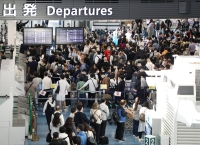
In a time of both misinformation and too much information, quality journalism is more crucial than ever. By subscribing, you can help us get the story right.
Japan's Travel Restrictions: What You Need To Know About The Current Guidelines For International Travelers
- Last updated Aug 26, 2023
- Difficulty Beginner
- Category United States
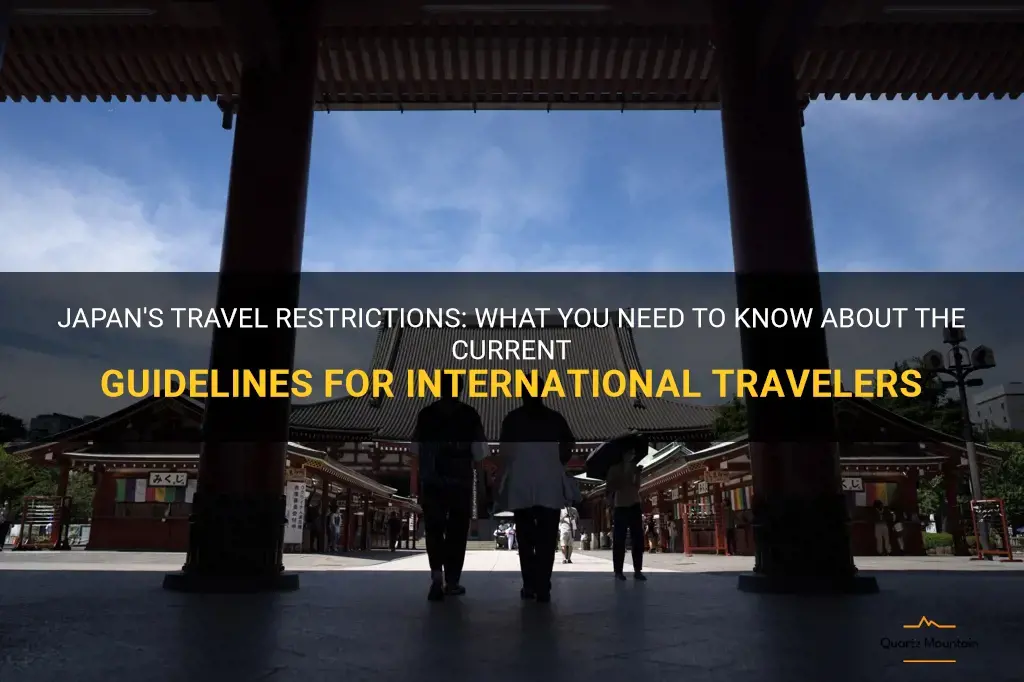
As the world gradually recovers from the devastating impacts of the COVID-19 pandemic, travel restrictions continue to shape the way we explore the globe. One country that has garnered significant attention in recent months is Japan, known for its vibrant culture, rich history, and breathtaking landscapes. However, like many nations, Japan has implemented various travel restrictions in response to the pandemic, making it a fascinating case study for the changing dynamics of international travel. In this article, we will delve into the current Japanese travel restrictions, exploring their implications, challenges, and potential future developments.
What You'll Learn
What are the current travel restrictions in japan due to the covid-19 pandemic, are foreigners allowed to enter japan at the moment, and if so, what are the conditions, what are the quarantine requirements for travelers arriving in japan, are there any specific countries that are exempt from travel restrictions or have different rules, are there any updates or changes expected in the near future regarding japanese travel restrictions.

As the COVID-19 pandemic continues to affect countries around the world, including Japan, travel restrictions have been put in place to control the spread of the virus. These restrictions vary depending on the country of origin and the purpose of travel.
For international travelers, Japan has currently imposed entry restrictions on visitors from over 150 countries and regions. This includes tourists, business travelers, and even those with valid visas or resident status. The restrictions aim to limit the entry of potential COVID-19 cases from abroad and prevent the spread of the virus within Japan.
Japan has categorized countries and regions into different levels based on the current COVID-19 situation. Countries with Level 3 designations, which include many parts of Asia, Europe, and the Americas, are subject to the strictest travel restrictions. Residents of these countries are currently not permitted to enter Japan unless they have exceptional circumstances or obtain special permission. Countries with Level 2 designations face slightly less restrictive measures, while those with Level 1 designation have relatively fewer restrictions.
For those allowed to enter Japan, there are still several requirements to be met. All travelers, regardless of their country of origin, must provide proof of a negative COVID-19 test taken within 72 hours before departure. They are also required to observe a 14-day self-quarantine upon arrival, during which they are not permitted to use public transportation or leave their designated quarantine location.
In addition to these measures, Japan has also suspended the validity of certain types of visas, such as tourist and short-term business visas, until further notice. Visa exemptions for eligible countries and regions have also been temporarily suspended. These measures aim to limit non-essential travel and reduce the potential for imported cases of COVID-19.
The situation for domestic travel within Japan is relatively less restrictive but still subject to certain guidelines. Japan's government has urged residents to avoid non-essential travel to and from designated high-risk areas within the country. Travelers are encouraged to check with local authorities and follow any specific guidelines or restrictions in place for their destination.
It is important to note that the above restrictions and guidelines are subject to change as the situation evolves. Travelers are advised to closely monitor official sources of information for the latest updates and to check with their airlines, travel agents, or local embassies before making any travel arrangements.
In conclusion, Japan has implemented strict travel restrictions for international visitors in an effort to control the spread of COVID-19. Entry restrictions vary based on the country of origin and the current COVID-19 situation. All travelers are required to provide a negative COVID-19 test result and observe a 14-day self-quarantine upon arrival. Visa suspensions and exemptions have also been implemented. Domestic travel within Japan is subject to guidelines and recommendations from local authorities. It is crucial to stay informed about the latest travel restrictions and guidelines to ensure a safe and smooth travel experience.
The Latest Updates on Travel Restrictions to Punta Cana: What You Need to Know
You may want to see also
As of September 2021, foreigners are allowed to enter Japan under certain conditions. Due to the ongoing COVID-19 pandemic, Japan has implemented strict entry restrictions and requirements to ensure the safety and well-being of its citizens and residents. Here are the current conditions for foreigners entering Japan:
Travel Restrictions:
Japan has banned the entry of foreign nationals who have been to designated countries within 14 days before their arrival in Japan. These designated countries are subject to change based on the prevalent COVID-19 situation.
Visa Requirements:
Foreign nationals need to have a valid visa to enter Japan. However, certain visa categories that were previously permitted, such as tourist visas, have been temporarily suspended. It is advisable to check with the nearest Japanese embassy or consulate for the latest information regarding visa requirements.
COVID-19 Testing:
Before boarding the flight to Japan, all foreign nationals, including those with residency status, are required to take a COVID-19 test within 72 hours of departure. The test must be a polymerase chain reaction (PCR) or antigen test, and the negative test result certificate must be presented upon arrival.
Quarantine Measures:
Upon arrival in Japan, all foreign nationals, regardless of their residency status, are required to undergo a mandatory 14-day quarantine. During this period, travelers are not allowed to use public transportation, including taxis and trains, and are expected to stay at a designated location, such as their accommodation or a government-designated facility.
Health Monitoring:
Foreign nationals must agree to download and activate a health monitoring app provided by the Japanese government. This app requires users to report their health condition and location daily during the quarantine period.
Immigration Procedures:
Foreign nationals entering Japan may be subject to additional immigration procedures upon arrival, such as fingerprinting and a photograph of their face. It is essential to comply with these procedures to ensure a smooth entry into the country.
It is important to note that the entry conditions and requirements are subject to change based on the evolving COVID-19 situation. Therefore, it is crucial to stay updated with the latest information from reliable sources, such as the Japanese embassy or consulate, before planning a trip to Japan. Additionally, travelers must also adhere to local health and safety guidelines, such as wearing masks and practicing social distancing, to prevent the spread of COVID-19.
Exploring Guatemala: Understanding the Current Travel Restrictions and Guidelines
Traveling to Japan during the COVID-19 pandemic requires advance preparation, including being aware of the quarantine requirements for incoming travelers. As the situation is continuously evolving, it is crucial to stay informed and follow the latest guidelines.
Entry Restrictions for Travelers to Japan:
Japan has implemented entry restrictions and quarantine measures to control the spread of COVID-19. As of now, the following requirements are in place:
Travelers arriving from most countries, including the United States and European countries, are required to provide a negative COVID-19 test result conducted within 72 hours before departure. The test must be a polymerase chain reaction (PCR) or nucleic acid amplification test (NAAT). Some specific countries may have additional testing requirements, so it is important to check the latest guidelines before traveling.
Quarantine Period:
Upon arrival in Japan, all travelers, including Japanese citizens, are required to undergo a 14-day quarantine period. This means that individuals must stay in a designated location, such as a hotel or their residence, and avoid contact with other people. It is essential to have a detailed plan and make arrangements for accommodation before arriving in Japan.
During the quarantine period, travelers must closely monitor their health and report any symptoms to the local health authorities. This includes daily temperature checks and self-assessment for the presence of symptoms related to COVID-19. It is also recommended to install a contact-tracing app and provide accurate contact information for tracking purposes.
Restrictions on Activities:
Throughout the quarantine period, individuals are prohibited from using public transportation, including buses, trains, and taxis. It is important to plan for essential supplies and groceries in advance. Additionally, social activities, such as gatherings or going out for non-essential purposes, are not allowed during the quarantine period.
COVID-19 Testing in Japan:
In some cases, travelers may be required to undergo another COVID-19 test upon arrival in Japan. The decision to conduct a test is made by the quarantine authorities based on the country of departure and specific circumstances. It is advisable to stay informed about the latest requirements and be prepared for possible testing.
Failure to comply with the quarantine requirements and guidelines can result in penalties, including fines and denial of entry into Japan. It is crucial to strictly follow the instructions provided by the Japanese government and health authorities.
Before traveling, it is recommended to regularly check the official websites of the Japanese Ministry of Foreign Affairs and the Embassy or Consulate of Japan in your country for the latest updates on travel restrictions and quarantine measures. Additionally, consult with your airline or travel agent for any specific requirements or instructions.
Navigating the Travel Restrictions to Ohio: What You Need to Know
As the COVID-19 pandemic continues to affect travel globally, many countries have implemented travel restrictions and specific rules to help control the spread of the virus. However, there are also certain countries that have different regulations or exemptions in place. Here are some examples:
- Europe: The European Union has created a system called the EU Digital COVID Certificate, which allows for free movement within the EU for individuals who are fully vaccinated, have recovered from the virus, or have received a negative test result. This applies to all EU member states, as well as Iceland, Liechtenstein, Norway, and Switzerland. However, each country may still have additional requirements or restrictions in place.
- United States: The United States has implemented travel bans on certain countries that have high COVID-19 infection rates. However, there are exceptions for U.S. citizens, permanent residents, and their immediate family members. Additionally, there are separate rules for travelers coming from Mexico and Canada.
- Australia: Australia has implemented strict travel restrictions, including a ban on non-citizens and non-residents entering the country. However, there are exemptions in place for certain groups of people, such as immediate family members of Australian citizens or permanent residents, diplomats, and some essential workers.
- South Korea: South Korea has implemented a system where travelers from certain countries can enter without quarantine if they meet specific requirements. These countries are currently deemed as low-risk, and travelers must provide a negative test result and proof of health insurance.
- New Zealand: New Zealand has closed its borders to most travelers, with only citizens and permanent residents allowed to enter. However, there are limited exceptions for critical workers and certain groups of people who have a critical purpose for their visit.
It is important to note that travel restrictions and exemptions can change frequently, depending on the evolving COVID-19 situation. Before planning any travel, it is essential to check the latest updates and regulations from the relevant government authorities or consult with a trusted travel agent.
Navigating the Alberta-BC Travel Restrictions: What You Need to Know
Since the outbreak of the COVID-19 pandemic, many countries including Japan have implemented travel restrictions to curb the spread of the virus. These restrictions have had a significant impact on international travel, with many travelers unable to visit their desired destinations.
As of now, Japan has implemented several travel restrictions to control the spread of the virus and protect its citizens. These restrictions include the ban on entry for non-resident foreign nationals from over 150 countries and regions. However, there are some exceptions to this ban, such as for Japanese nationals, permanent residents, and certain categories of foreign nationals, including business travelers and students.
Despite these restrictions, the Japanese government has been closely monitoring the situation and regularly reviewing its travel policies. As the pandemic evolves and global vaccination efforts progress, there may be updates or changes regarding travel restrictions in the near future.
One potential change that could occur is the relaxation of entry restrictions for vaccinated travelers. Japan has recently announced its plan to introduce a vaccine passport system that would allow vaccinated individuals to travel more easily. This system would involve verifying vaccination certificates and allowing those with recognized vaccines to enter the country without the need for quarantine or additional testing. However, no specific timeline has been provided for the implementation of this system.
Another potential change could be the expansion of the list of exceptions to the entry ban. Currently, only certain categories of foreign nationals are allowed to enter Japan, but this may be expanded to include more individuals, such as tourists and short-term visitors, as the situation improves. However, any such changes would likely be implemented gradually and depend on the overall state of the pandemic and vaccination efforts.
It is important to note that any updates or changes in travel restrictions will be based on the advice and guidance of public health experts and will prioritize the safety and well-being of the population. The Japanese government will continue to assess the situation and make adjustments accordingly.
It is advisable for anyone planning to travel to Japan to closely monitor official government sources, such as the Japanese Ministry of Foreign Affairs and the Embassy or Consulate of Japan in their respective countries, for the latest information and updates regarding travel restrictions. Additionally, travelers should stay informed about the current COVID-19 situation in their own countries and adhere to all necessary precautions and requirements before and during their trip to ensure a safe and smooth travel experience.
Can You Travel to Different States with a Restricted License? Exploring the Limitations and Guidelines
Frequently asked questions.
As of now, Japan has imposed a ban on entry for foreign nationals from most countries in order to prevent the spread of COVID-19. Only certain categories of people, including Japanese nationals, residents with valid re-entry permit, and certain essential workers, are allowed to enter the country. This restriction is subject to change, so it's important to stay updated with the latest information.
Currently, being fully vaccinated does not exempt foreign nationals from the travel ban in Japan. Even if you have received all the required doses of a COVID-19 vaccine, you will still need to meet the necessary requirements and fall into one of the exempted categories to be allowed entry into the country.
Yes, there are quarantine requirements for those who are allowed entry into Japan. As of now, all travelers, including Japanese nationals and residents, are required to undergo a 14-day quarantine at a designated location, such as a hotel or a designated facility. This is to ensure that any potential COVID-19 cases are identified and contained.
Travel within Japan is generally allowed for those who have completed their 14-day quarantine period and have tested negative for COVID-19. However, it's important to note that there may be additional regional restrictions or guidelines in place, depending on the current situation in each prefecture or city. It's advisable to check with local authorities and follow their instructions to ensure a safe and smooth travel experience within Japan.
The timing for the lifting of travel restrictions in Japan is uncertain and depends on various factors, including the COVID-19 situation both within the country and globally. The Japanese government continues to monitor and assess the situation, and any changes to the travel restrictions will be announced accordingly. It's recommended to stay informed through official government sources and to consider travel plans after the restrictions have been lifted or eased to ensure a hassle-free trip to Japan.

- Kryms Kaya Author Traveller

- Cagri Burak Author Reviewer Traveller
It is awesome. Thank you for your feedback!
We are sorry. Plesae let us know what went wrong?
We will update our content. Thank you for your feedback!
Leave a comment
United states photos, related posts.
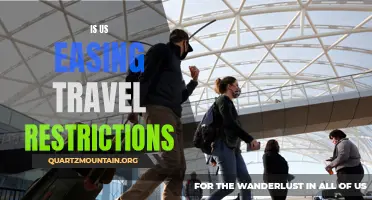
Exploring the Potential Relaxation of Travel Restrictions in the United States
- Sep 18, 2023
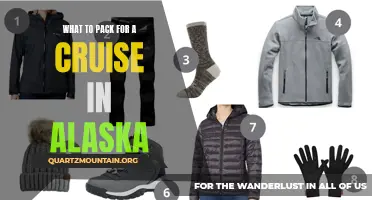
Essential Items to Pack for a Cruise Adventure in Alaska
- Dec 20, 2023

11 Fun-Filled Activities to Experience in Naples FL with Kids
- Jun 08, 2023

Essential Items to Pack for a 5-Day Trip to Costa Rica
- Jan 05, 2024

Travel Restrictions for Women with Placenta Previa: What You Need to Know
- Oct 05, 2023
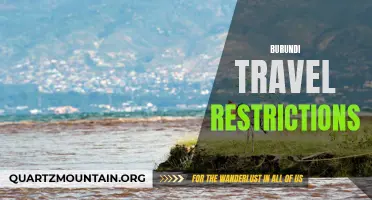
Exploring the Latest Burundi Travel Restrictions: What You Need to Know
- Aug 16, 2023
- Itineraries
- Tours and Activities
- Travel Guides
- Best of Japan
JRailPass.com » Japan Travel Blog » Japan travel restrictions and requirements for 2023
Japan travel restrictions and requirements for 2023
May 15, 2023
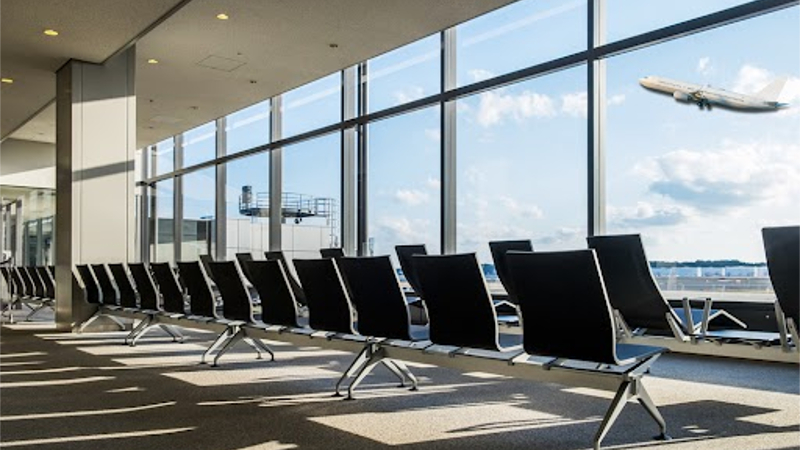
When planning a trip to Japan, make sure you know if there are any travel restrictions in place and any entry requirements you need to follow.
Japan has now completely removed all COVID-19 entry restrictions . Immigration rules have returned to normal from May 8, 2023 .
If you are thinking about traveling to Japan, you can check this regularly updated page and find out what you need to visit the country.
Below you’ll find information about the reinstatement of visa exemptions , vaccine and testing requirements, and other coronavirus measures in Japan.

Can I Travel to Japan Now?
Yes , Japan’s borders are now open to all international tourist travel.
You can easily travel to Japan by air or by sea as long as you meet the standard entry requirements.
Japan has completely removed the entry cap on daily foreign arrivals. All the usual visa exemptions currently apply to eligible visitors. This means that citizens of around 70 countries, including Australia, the United States and all European Union nations, can once again visit Japan for 90 days visa-free simply by using a valid passport.
Once in the country, train services are running as normal. You can use your Japan Rail Pass to travel around the nation at your leisure.
Japan Standard Entry Requirements
If you’re not a national of a visa-exempt country , you’ll need a visa to travel to Japan.
You should also make sure you have a valid passport , and other necessary documentation to enter the country.
If you have an e-Passport, you can use the Electronic Customs Declaration Gates (e-Gates) when arriving in Japan to clear border control.
Public transportation restrictions within Japan
Public transport, including trains, is operating in Japan. Travelers are advised to refer to Japanese train status updates issued by each individual operator to check if a service they plan to use remains affected by temporary Shinkansen COVID-19 restrictions.
Face masks are no longer required on JR trains or in most other places. They are still common and recommended, but are ultimately optional .
Who can travel to Japan now?
Anyone who meets the normal entry requirements can now travel to Japan.
All travelers should ensure they have a valid relevant visa for Japan (unless visa-exempt), a valid passport, and other necessary documentation to enter the country.
North Koreans cannot currently enter Japan due to sanctions. Apart from this, there are no other travel bans in place.
For further information about visas and visa exemptions, please check with the Japanese Ministry of Foreign Affairs at https://www.mofa.go.jp/ .
Rules for tourists
Individual tourists can now travel to Japan. There is no longer any need to book a place on a package tour.
Although mask use is not obligatory outdoors in Japan, it is still recommended in crowds or when having a conversation at close quarters.
Quarantine measures when traveling to Japan
There are currently no quarantine measures in Japan.
For further information, please check with the Japanese Ministry of Health at https://www.mhlw.go.jp/
Countries and regions banned to enter Japan
Only citizens of North Korea are currently prohibited from traveling to Japan. This is because the Japanese government has imposed sanctions on North Korea.
All other nationalities are allowed to visit Japan with the proper documentation. All travel bans due to coronavirus have now been lifted.
Travel advisories
Check the up-to-date travel advisories for Japan regarding COVID-19 from your country below:
- New Zealand
- United Kingdom
- United States
Health advice when visiting Japan
There are no specific health requirements in place for traveling to Japan.
Visitors are advised to have health insurance and be up-to-date on standard vaccinations. Recommended vaccines include:
- Chickenpox (Varicella)
- Diphtheria-Tetanus-Pertussis
- Flu (influenza)
- Hepatitis A
- Hepatitis B
- Japanese encephalitis
- Measles-Mumps-Rubella (MMR)
Japan’s Health Ministry has stated that the two most effective ways to curb the spread of illnesses like the coronavirus are to frequently wash hands and use a face mask when out in public:
- You should wash your hands with soap and water for at least 20 seconds, or use an alcohol-based hand sanitizer containing at least 60% alcohol.
- Face masks are recommended in public. The mask should cover your mouth, nose and chin, and be disposed of after a single-use.
If you are traveling to Japan with medication, make sure you bring copy of the prescription, a doctor’s note, and bring your medicine in the original container.
For the latest travel advisory and information about restrictions, please visit the Japan National Tourism Organization’s site .
The Japan National Tourism Organization has also set up a coronavirus hotline for tourist information available in 3 languages: English, Chinese, or Korean:
- From within Japan : 050 3816 2787
- If overseas : +81 50 3816 2787
Related posts
Related tours & activities.
Cookies on GOV.UK
We use some essential cookies to make this website work.
We’d like to set additional cookies to understand how you use GOV.UK, remember your settings and improve government services.
We also use cookies set by other sites to help us deliver content from their services.
You have accepted additional cookies. You can change your cookie settings at any time.
You have rejected additional cookies. You can change your cookie settings at any time.
- Passports, travel and living abroad
- Travel abroad
- Foreign travel advice
Warnings and insurance
The Foreign, Commonwealth & Development Office ( FCDO ) provides advice about risks of travel to help British nationals make informed decisions. Find out more about FCDO travel advice .
Before you travel
No travel can be guaranteed safe. Read all the advice in this guide and any specific travel advice that applies to you:
- women travellers
- disabled travellers
- LGBT+ travellers
Follow and contact FCDO travel on Twitter , Facebook and Instagram . You can also sign up to get email notifications when this advice is updated.
Travel insurance
If you choose to travel, research your destinations and get appropriate travel insurance . Insurance should cover your itinerary, planned activities and expenses in an emergency.
Related content
Is this page useful.
- Yes this page is useful
- No this page is not useful
Help us improve GOV.UK
Don’t include personal or financial information like your National Insurance number or credit card details.
To help us improve GOV.UK, we’d like to know more about your visit today. We’ll send you a link to a feedback form. It will take only 2 minutes to fill in. Don’t worry we won’t send you spam or share your email address with anyone.

Search Smartraveller

Latest update
Exercise normal safety precautions in Japan.
Higher levels apply in some areas.
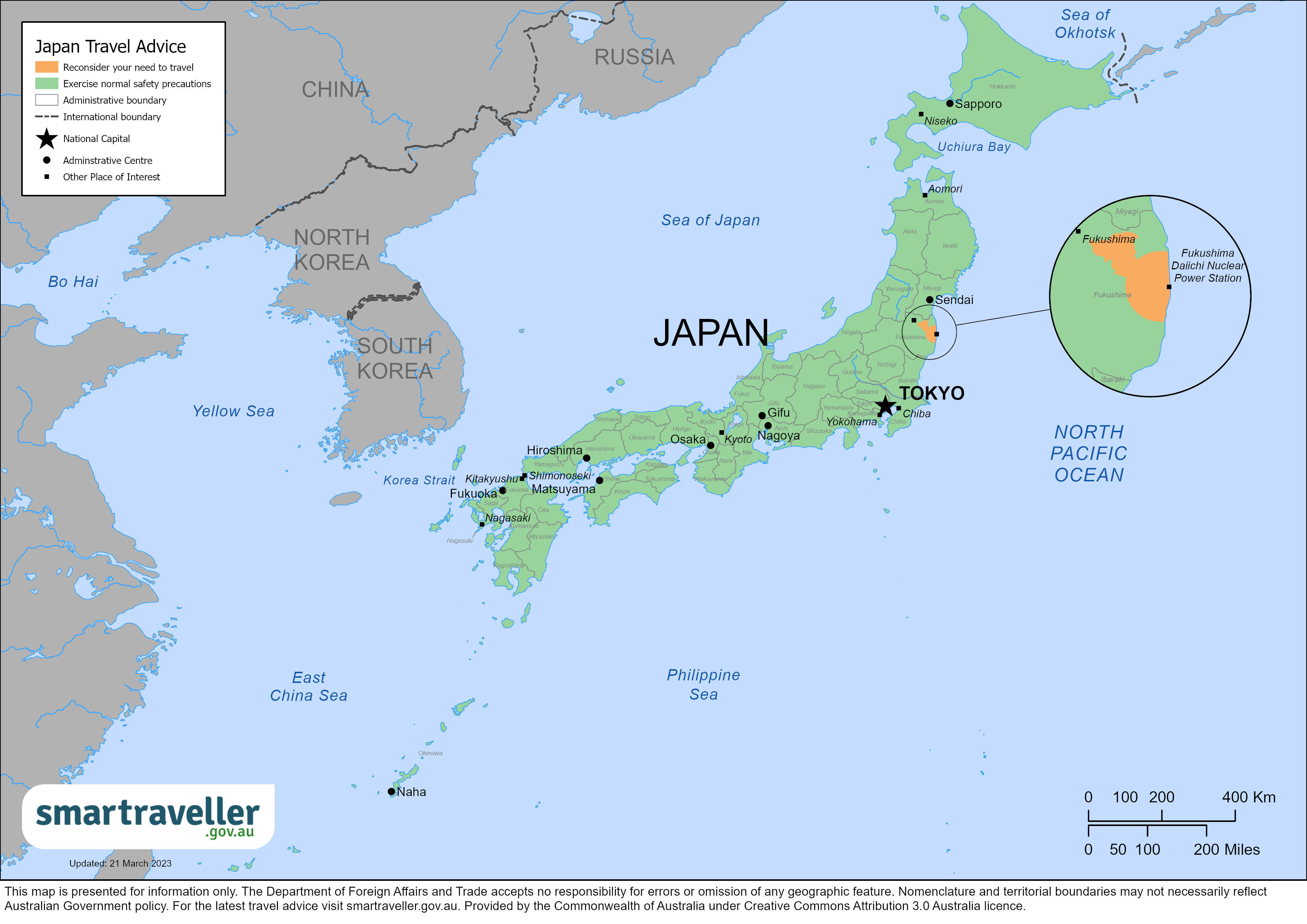
Japan (PDF 460.84 KB)
Asia (PDF 2.21 MB)
Local emergency contacts
Fire and rescue services, medical emergencies.
Call 110 or contact the local police at the nearest police station.
For Tokyo English-speaking Police, call 3501 0110 (Monday to Friday 8:30am to 5:15pm).
Advice levels
Reconsider your need to travel to the restricted areas near the Fukushima Dai-ichi nuclear power plant.
- Japan is prone to earthquakes and tsunamis. Japanese authorities have detailed plans to respond to natural disasters. In an earthquake, follow the advice of local authorities and emergency signage. Move to higher ground immediately if you're in a coastal region after a major earthquake. Check the Disaster Prevention Portal for more information.
- All major disaster warnings are published by the Japan Meteorological Agency . We recommend downloading NHK’s smart phone application to keep up to date with a natural disaster or other emergency alerts.
- A series of earthquakes occurred in Ishikawa Prefecture in Central Japan on and after 1 January 2024. Some infrastructure may remain impacted. Follow the advice of local authorities if travelling to affected areas.
- Regional tensions and the security situation, including with North Korea, could worsen with little warning. Tensions, which may affect Japan, could arise because of missile tests by North Korea. For advice see Japan's Civil Protection Portal Site .
- Japan has a low crime rate. Petty theft can happen, like bag snatching at popular tourist attractions. There's a risk of crime in bars and nightclubs. Crimes include overcharging, credit card fraud, forced withdrawal of large amounts of cash at ATMs, drink spiking and assault. Avoid taking large amounts of money and be vigilant in carrying your debit/credit card) when in bars or clubs and at parties.
Full travel advice: Safety
- Japan has strict rules about bringing medicine into the country, including some ingredients in ADHD and cold and flu medication. If you plan on bringing in medication, check if it's legal before you travel. See the Ministry of Health, Labour and Welfare website for more information.
- Restricted zones exist around the Fukushima Dai-ichi nuclear power plant. The 2011 earthquake caused the release of lethal radiation. Radiation levels in most parts of Japan, including Tokyo, are within the normal range.
- Medical facilities are of a high standard. You can find English-speaking medical staff in most major cities. You may need to pay upfront before you're treated.
Full travel advice: Health
- You must carry your passport (or Japanese residency card) with you at all times.
- Don't use or carry illegal drugs. Authorities can charge you if they find trace amounts of illegal drugs in your blood or urine.
- Japanese family law, including divorce and child custody, is very different to Australian law. For example, joint custody of a child after divorce is not a legal option, and there are limits to access for a non-custodial parent. The Family Courts in Japan generally consider that it is in a child's best interests for them to remain in their "usual place of residence". Courts, therefore, usually give sole custody to the parent who has taken care of the child most recently. If you're involved in custody or other family disputes, it is important to seek legal advice about your options both in Japan and in Australia. We have produced some general information about custody, child abduction and parental rights.
- Some employment agents mislead and encourage foreigners to work in Japan without the correct paperwork. If you want to work in Japan, verify the work offered and get the correct visa. Get legal advice before signing a contract.
- Japan has strict alcohol laws. The legal drinking age is 20. It's illegal to drive with any alcohol in your bloodstream. Allowing someone who has been drinking to drive is also illegal. Laws restrict alcohol consumption in specific areas on certain days, such as in Shibuya around Halloween night (31 October) and New Year's Eve. Smoking on the street is illegal in Tokyo and some other cities.
Full travel advice: Local laws
- Australians are eligible for Japan's visa exemption scheme for short-stay tourism and business travel. You don't need a visa to travel to Japan for up to 90 days. Entry and exit conditions can change at short notice. It is your responsibility to verify visa requirements from the nearest embassy or consulate of Japan.
- If you're travelling for any other reason, contact your nearest Japanese embassy or consulate to check if you need a visa, especially if you plan to work in Japan. Penalties may apply if you work in Japan on a tourist visa.
- It's dangerous to climb Mount Fuji from September to June.
- You can drive for up to 1 year with an Australian driver's licence and an International Driving Permit. If you're staying longer, you will need to obtain a local licence. Heavy snowfalls and ice in winter can make driving dangerous. It's illegal to drive with any alcohol in your bloodstream.
Full travel advice: Travel
Local contacts
- The Consular Services Charter details what we can and can't do to help you overseas.
- For consular help, contact the Australian Embassy in Tokyo or the Consulate-General in Osaka .
- To stay up to date with local information, follow the Embassy’s social media accounts
Full travel advice: Local contacts
Full advice
Terrorism is a threat worldwide.
Japan has security measures in place at key facilities, such as:
- public transport
- public event venues
- entry ports
More information:
- Terrorist threats
Regional Threats
Regional tensions and the security situation, including with North Korea, could worsen with little warning. Tensions, which may affect Japan, could arise because of missile tests by North Korea.
The Japanese Government has confirmed an increase in missile launch activity from North Korea towards Japan. At times, 'take shelter' alerts have been issued in some parts of Japan.
To stay safe:
- be alert to developments
- review the Civil Protection Portal Site advice from the Japanese Cabinet Secretariat for National Security Affairs and Crisis Management
- follow the instructions of local authorities
- check NHK World for the latest information
Japan has a low crime rate. Petty theft can happen, like bag snatching at popular tourist attractions from time to time.
There's a risk of crime in bars and nightclubs, especially in the Roppongi and Shinjuku (Kabuki-cho) entertainment areas of Tokyo. Both men and women have been targeted. You may be targeted with:
- overcharging
- fraudulent credit card charges
- forced withdrawal of large amounts of cash at ATMs
- drink spiking
- illegal drugs
You may be served drinks with higher alcohol content than normal. Some victims have woken in unknown places and discovered high credit card charges. Other victims have been taken to ATMs and forced to withdraw a large sum of cash while under the effects of drink spiking.
In these situations, you may find it hard to get a police report for your bank and travel insurer.
- never leave your drink unattended, and be cautious of accepting drinks from strangers or recent acquaintances
- don't take large amounts of cash to parties, bars, clubs or entertainment districts and be vigilant in carrying your debit/credit card
- Partying overseas
Cyber security
You may be at risk of cyber-based threats during overseas travel to any country. Digital identity theft is a growing concern. Your devices and personal data can be compromised, especially if you’re connecting to Wi-Fi, using or connecting to shared or public computers, or to Bluetooth.
Social media can also be risky in destinations where there are social or political tensions, or laws that may seem unreasonable by Australian standards. Travellers have been arrested for things they have said on social media. Don't comment on local or political events on your social media.
More information:
- Cyber security when travelling overseas
Mountain climbing and trekking
Trekking and mountaineering can be dangerous. Register your plans with local police before you go into the mountains, and take an emergency locator beacon with you.
Every year, a number of people die while trying to climb Mount Fuji.
Japanese Emergency Services warn against climbing from September to June when it's most dangerous. Check the official Mount Fuji Climbing website for each trail's climbing season dates.
Check your travel insurance covers you for extreme activities, such as mountain climbing.
Hikers and other travellers may encounter bears in parts of rural Japan. There have been incidents of fatal bear attacks. Some prefectural governments provide safety advice regarding bears.
If you plan to hike or camp in rural and mountainous areas of Japan:
- follow local safety advice and pay attention to
- warning notices
Snow sport safety
Back-country skiing (off-piste) and snowboarding is dangerous in most parts of Japan. You should stay within the boundaries of the ski resort.
Take an emergency locator beacon with you if you plan to explore other areas of the mountains.
Many travellers have suffered serious head injuries they could've prevented by wearing the right equipment.
Check your insurance policy covers you for snow sports.
Local ski resorts govern rules in each ski region. You can be arrested and detained for unruly behaviour.
If you're skiing in Japan:
- use a helmet and protective gear
- learn local rules and get weather updates from your hotel, a local tourism centre or the local ski resort
- obey local ski region rules
- only visit areas that local authorities mark as safe
- know what your travel insurance policy covers you for
Climate and natural disasters
A series of earthquakes occurred in Ishikawa Prefecture in Central Japan on and after 1 January. Some infrastructure may remain impacted. Exercise caution and follow local authorities' advice if travelling to affected areas.
Japan experiences natural disasters and severe weather , including:
- volcanic eruptions
- earthquakes
In an emergency, consular help may be severely limited.
Be prepared to deal with emergencies by:
- maintaining a basic emergency supply kit
- securing your passport in a safe, waterproof place
- follow the advice of local authorities, emergency services and local media updates. Make sure you react to any evacuation orders.
Disaster preparation
The Japan National Tourism Organization provides disaster preparation Safety Tips for visitors to Japan and other useful emergency information.
In any emergency or crisis, it's important to keep in contact with family and friends if possible.
The following stations broadcast emergency information in English:
- US Armed Forces station (810 AM)
- Inter FM (76.1 FM) in Tokyo
Japanese public broadcaster NHK provides a free smartphone app , which can be set to receive emergency notifications in English. This includes earthquake, tsunami, volcanic eruption, typhoon, and missile warnings.
If there's a natural disaster:
- follow local authorities' advice
- react to any evacuation orders
- monitor the media, other local information sources, and the Global Disaster Alert and Coordination System
- keep in contact with family and friends
Earthquakes and tsunamis
There's a constant risk of earthquakes and tsunamis.
The Japan Meteorological Agency provides information in English about earthquakes and tsunamis.
Know the dangers of a major earthquake and the emergency plan information in your area. Know where your local shelter is. This information is available from local or prefectural government offices, such as the Tokyo Metropolitan Government Disaster Prevention .
Local authorities are responsible during a crisis for helping people living or travelling within their jurisdictions.
If there's an earthquake:
- follow the advice of local authorities
- check the Japan Meteorological Agency for earthquake and tsunami information
- move to higher ground straight away if you're in a coastal region
Typhoons and severe weather
The typhoon season is from May to November, with most activity between July and September.
Local authorities broadcast current typhoon information through the local media and the Japan Meteorological Agency website.
If there's a typhoon approaching:
- check the latest typhoon information from the Japan Meteorological Agency’s website
- be alert to landslide risk areas
If there is heavy rain, stay indoors. If necessary, evacuate to a place on the second floor or higher. Find out the location of your nearest evacuation shelter and move there when safe to do so.
Keep away from areas with:
- steep hills at risk of landslides
- flooded streets
Be careful of fallen electrical lines.
Japan has 110 active volcanoes.
The Japan Meteorological Agency has a list of the latest volcano warnings.
If you plan to visit a volcanic area:
- be aware of alert levels, which can change at short notice
Winter weather
Parts of Japan experience heavy snowfalls and extremely low temperatures in winter.
Conditions can change suddenly.
Each year, people are injured or killed in snow-related incidents, including:
- motor vehicle accidents
- ice falling from roofs
- prolonged exposure to extreme cold
- ski accidents
Walking alone or under the effects of alcohol, or straying from marked trails, can be fatal.
Avalanches are common and heavy snowstorms can create deep powder snow drifts.
Travel insurance
Get comprehensive travel insurance before you leave.
Your policy needs to cover all overseas medical costs, including medical evacuation. The Australian Government won't pay for these costs.
If you are travelling while pregnant, confirm that your policy covers both your pregnancy and your baby in the event of a premature birth. Medical services for premature babies can cost over $A 150,000. See the advice for pregnant travellers page for more information.
If you can't afford travel insurance, you can't afford to travel. This applies to everyone, no matter how healthy and fit you are.
If you're not insured, you may have to pay many thousands of dollars up-front for medical care.
- what activities and care your policy covers
- that your insurance covers you for the whole time you'll be away
Physical and mental health
Consider your physical and mental health before you travel, especially if you have an existing medical condition.
See your doctor or travel clinic to:
- have a basic health check-up
- ask if your travel plans may affect your health
- plan any vaccinations you need
Do this at least 8 weeks before you leave.
If you have immediate concerns for your welfare, or the welfare of another Australian, call the 24-hour Consular Emergency Centre on +61 2 6261 3305 or contact your nearest Australian Embassy, High Commission or Consulate to discuss counselling hotlines and services available in your location.
Different environments, unfamiliar customs and language barriers may worsen existing mental health conditions. They may also trigger new issues.
Mental health treatment and services can differ to those in Australia.
If you need counselling services in English while in Japan:
- call TELL Lifeline (+81 3) 5774 0992
- call TELL Counselling (+81 3) 4550 1146
- General health advice
- Healthy holiday tips (HealthDirect Australia)
Not all medication available over the counter or by prescription in Australia is available in other countries. Some may even be considered illegal or a controlled substance, even if prescribed by an Australian doctor.
Japan has strict rules about bringing medication into the country. This affects both medication imports and medication you carry for personal use.
There are 4 categories (PDF 250 KB) of medicine. These are:
- psychotropic
You may need a permit or certificate to take medication into Japan. This will depend on the medication's classification, name and quantity.
Some medication is banned, including:
- the stimulant dexamphetamine, used to treat ADHD
- pseudoephedrine, found in some cold and flu tablets
Authorities could detain you if you're found with them.
For narcotic medications, including codeine, morphine and oxycodone, apply for a Narcotic Certificate. If you don't have this certificate when you enter Japan, authorities may confiscate the medication.
If you plan to bring medication, check if it's legal in Japan. Take enough legal medication for your trip. See the Ministry of Health, Labour and Welfare for more information.
Carry a copy of your prescription and a letter from your doctor stating:
- what the medication is
- your required dosage
- that it's for personal use
- Bringing medication into Japan
Health risks
Restricted areas exist around the Fukushima Dai-ichi nuclear power plant. The 2011 earthquake caused the release of lethal radiation. Radiation levels in almost all parts of Japan, including Tokyo, are within the normal range.
Monitor advice by the Japanese Government . There are ID checks points into the Restricted Areas . Do not enter without permission.
The Australian Radiation Protection and Nuclear Safety Agency (ARPANSA) provides details on radiation in Japan. ARPANSA has assessed the radiation levels in most parts of Japan, including Tokyo, to be within the normal range.
- Ministry of Health, Labour and Welfare
- Ministry of Economy, Trade and Industry
- Nuclear Regulation Authority
Insect-borne diseases
Japanese encephalitis can occur in Japan's rural areas. Get vaccinated against Japanese encephalitis before you travel.
To protect yourself from disease:
- make sure your accommodation is insect-proof
- use insect repellent
- wear long, loose, light-coloured clothing
Measles and rubella
Measles and rubella cases have been reported in Japan in recent years.
Make sure your vaccinations are up to date before you travel.
- Infectious diseases
- Measles immunisation service
- Rubella immunisation service
Medical care
Medical facilities.
Medical facilities are of a high standard. You can find medical facilities with English-speaking staff in most major cities, however, you may have difficulties finding English-speaking medical staff in some parts of Japan.
Medical care in Japan can be expensive. You may need to pay up-front or give a guarantee that you'll cover costs before you're treated.
The Japan National Tourism Organization lists hospitals with English and other foreign language-speaking staff.
There are many hospitals with decompression chambers in areas where diving is popular.
Medical information for Japan
You're subject to all local laws and penalties, including those that may appear harsh by Australian standards. Research local laws before travelling.
If you're arrested or jailed, the Australian Government will do what it can to help you within the scope of our Consular Services Charter , but we can't get you out of trouble or out of jail.
See the Australian Embassy Tokyo website for more information about arrests in Japan.
Be aware that you won't be allowed to make a phone call if you are arrested in Japan. You can also be detained for up to 23 days without any formal charge.
Authorities can arrest and charge you if they find trace amounts of illegal drugs in your blood or urine.
- Carrying or using drugs
- Tokyo Metropolitan Government
Japanese family law, including divorce and child custody, is very different to Australian law. For example, joint custody of a child after divorce is not a legal option, and there are limits to access for a non-custodial parent. The Family Courts in Japan generally consider that it is in a child’s best interests for them to remain in their “usual place of residence”. Courts therefore usually give sole custody to the parent who has taken care of the child most recently.
If you're involved in custody or other family disputes, consult a lawyer before you leave Australia or if you are already in Japan. We have produced some general information about custody, child abduction and parental rights.
Australia and Japan are both parties to The Hague Convention on the Civil Aspects of International Child Abduction.
If you're concerned that your child has been wrongfully removed to or detained in Japan, contact the Attorney-General's Department in Australia.
- Travelling with children
Employment law
Some employment agents may mislead and encourage foreigners to work in Japan without:
- the correct visa
- financial arrangements in place
This could leave you open to exploitation and prosecution.
Authorities have arrested Australians for working in the entertainment industry while in Japan on tourist visas.
If you want to travel to Japan for work:
- check the true nature of the work offered
- get the correct visa before arriving in Japan
- get legal advice before signing any contract
Living or working overseas
Police powers
Police can stop you on the street, demand identification and search you and your belongings.
If you're in a public place, police can seize:
- knives longer than 5.5cm, including blades and penknives
- any other weapons or things you could use as weapons
- any item they reasonably suspect you stole or have unlawfully
If they find any of these items on you, it’s likely that police will detain you.
If you're arrested, police can detain you for up to 23 days without charge, including for offences you might think are minor. Police might hold you for weeks or months while they investigate and undertake legal proceedings.
The initial police interview could last several hours. Police might record it in writing rather than electronically.
Under Japanese law, you can:
- remain silent
- access legal representation
- have an interpreter provided
However, in Japan police can question you without your lawyer present.
English interpreters may be substandard. Get a list of English-speaking lawyers around Japan from the Australian Embassy website.
If you're visiting Japan short-term as a tourist or for business, you must always carry your passport.
If you live in Japan, you must always carry your residence card.
It's illegal to:
- buy or drink alcohol if you're under 20 years old
- drive with any alcohol in your bloodstream
- allow someone under the influence of alcohol to drive a vehicle in which you're a passenger
The following activities are also illegal:
- importing or possessing firearms or other weapons without a permit
- smoking on the streets in some parts of Tokyo and other cities
- using UHF-CB radios (walkie-talkies) that don't meet Japanese standards, such as those purchased outside Japan
- resisting arrest or other actions that obstruct an official's duties
- flying a drone without a permit in many areas of Japan. Strict regulations apply under aviation laws
- having illegal drugs in your body (detected by urine testing).
Penalties for serious crimes, such as murder, include the death penalty.
Other sentences can include:
- heavy fines
- lengthy jail terms with hard labour
- deportation
Australian laws
Some Australian criminal laws still apply when you're overseas. If you break these laws, you may face prosecution in Australia.
- Staying within the law
Dual citizenship
Japan recognises dual nationality until the age of 20, after which the dual national must decide which nationality to retain.
- Dual nationals
Visas and border measures
Every country or territory decides who can enter or leave through its borders. For specific information about the evidence you'll need to enter a foreign destination, check with the nearest embassy, consulate or immigration department of the destination you're entering.
Australians are eligible for Japan's visa exemption scheme for short-stay tourism and business travel.
You don't need a visa if you're visiting for less than 90 days:
- as a tourist
- for a business trip or conference
- to visit friends and family
After entering under the visa exemption scheme, entry status cannot be changed to another visa status without departing and then re-entering Japan with the appropriate visa, such as a spouse, work, or study visa.
See the Embassy of Japan in Australia website for more information (including eligibility and required documents).
See the Ministry for Health, Labour and Welfare and the Ministry of Foreign Affairs websites for full details on entry requirements.
More information
- Immigration Bureau of Japan (Government of Japan)
- Customs and Tariff Bureau of Japan (Government of Japan)
Border measures
If you're transiting through Japan and your onward flight is leaving from a different airport, you must enter Japan. In order to transit between airports you will need to meet the entry requirements detailed above.
Please confirm any questions about transit directly with your airline.
Other formalities
You'll be photographed and fingerprinted electronically when you arrive, even if you're a permanent resident in Japan. If you refuse, immigration officers could deny you entry.
Travellers aged under 16 years, or who hold a diplomatic or official visa, are exempt.
If you'll be staying in Japan long term, you will need to register your details with the Immigration Bureau of Japan before arriving. Once you present the correct landing permission, you'll get a residence card. You must always carry it with you.
Ministry of Internal Affairs and Communication
Some countries won't let you enter unless your passport is valid for 6 months after you plan to leave that country. This can apply even if you're just transiting or stopping over.
Some foreign governments and airlines apply the rule inconsistently. Travellers can receive conflicting advice from different sources.
You can end up stranded if your passport is not valid for more than 6 months.
The Australian Government does not set these rules. Check your passport's expiry date before you travel. If you're not sure it'll be valid for long enough, consider getting a new passport .
Lost or stolen passport
Your passport is a valuable document. It's attractive to people who may try to use your identity to commit crimes.
Some people may try to trick you into giving them your passport. Always keep it in a safe place.
If your passport is lost or stolen, tell the Australian Government as soon as possible:
- in Australia, contact the Australian Passport Information Service .
- if you're overseas, contact the nearest Australian embassy or consulate .
If you lose your passport while travelling in Japan, try retracing your steps. Lost items are often handed into hotels, shop owners, train stations and police boxes.
It's important to look after your passport carefully. Passports that have gone through a washing machine or exposed to heavy rain will likely need to be replaced.
Passport with ‘X’ gender identifier
Although Australian passports comply with international standards for sex and gender, we can’t guarantee that a passport showing 'X' in the sex field will be accepted for entry or transit by another country. Contact the nearest embassy, high commission or consulate of your destination before you arrive at the border to confirm if authorities will accept passports with 'X' gender markers.
- LGBTI travellers
The Japanese currency is the Yen (JPY).
No restrictions apply to bringing foreign currency in or out of the country. Declare all amounts more than JPY 1 million or equivalent, when you arrive or leave. This covers all forms of currency, not only cash.
Cash is preferred in most places, but cards are becoming more widely used, especially in major cities.
Hotels accept major credit cards. Credit cards are still not widely accepted outside major cities.
Some ATMs at banks and convenience stores don't accept foreign cards.
Ask your bank if your cards will work in Japan.
Local travel
Check the Japan National Tourism Organization for emergency updates in English. The site also has advice on safe and hassle-free travel in Japan.
Fukushima and surrounding areas
There are some restricted areas around the Fukushima Dai-ichi nuclear power plant. This is due to the 2011 earthquake that resulted in the release of lethal radiation. The Japanese Government specifies these areas.
If you must stay overnight in restricted areas, ask local authorities for advice on how to minimise health risks.
Monitor and follow the advice from local authorities.
- Australian Radiation Protection and Nuclear Safety Agency (ARPANSA)
Travelling in Japan with a Disability
Japan has a number of resources available online with tips and advice on travelling around Japan as a tourist with a disability.
- Japan Travel – Traveling with a disability
- Japan Accessible Tourism Center
- Accessible Travel Japan
- Advice for travellers with a disability
Driving permit
To drive in Japan, you must hold either:
- a valid Japanese driver's licence, or
- a valid International Driving Permit (IDP) and a current Australian driver's licence
After 365 days, you need to get a Japanese licence.
Get your IDP before leaving Australia.
- Driving in Japan
- Tokyo Metropolitan Police Department
Road travel
Roads and vehicles are mostly well-maintained and traffic is orderly.
Vehicles travel is on the left-hand side like in Australia. In Japan it's illegal to drive with any alcohol in your bloodstream.
Heavy snowfalls and ice in the winter can make driving dangerous, especially if you are unaccustomed to driving in these conditions. Ensure your vehicle has the necessary equipment, including snow tyres, chains, and a dig-out kit. More information:
Driving or riding
Motorcycles
Check your travel insurance policy covers you for riding motorbikes.
Always wear a helmet.
It's safe to use taxis in Japan.
Taxi drivers usually open and shut the rear passenger doors remotely.
Public transport
Japan has modern and reliable rail and bus services.
Transport and getting around safely
DFAT doesn't provide information on the safety of individual commercial airlines or flight paths.
Check Japan's air safety profile with the Aviation Safety Network.
Passenger ferries depart from Tokyo (Yokohama) to many destinations across Japan as well as Asia.
Several international cruises stopover in Japan.
- Going on a cruise
Japan National Tourism Organization (JNTO)’s Tourist Information Center accepts telephone enquiries 24 hours a day. Call (+81 3) 3201 3331.
Contact your provider with any complaints about tourist services or products.
You can also contact the National Consumer Affairs Center of Japan’s Consumer Hotline for Tourists. Call (+81 3) 5449 0906 from Monday to Friday 10am to 4pm, excluding national holidays.
Emergencies
Depending on what you need, contact your:
- family and friends
- travel agent
- insurance provider
Always get a police report when you report a crime.
If a report is hard to get, seek advice from a lawyer or the English-speaking Police.
Your travel insurer should have a 24-hour emergency number.
Mental health services
Call TELL Lifeline services in English 5774 0992.
Call TELL Counselling services in English 4550 1146.
Living in Japan
English information on living in Japan is available from the:
- Japanese Cabinet Office
- Council of Local Authorities for International Relations
- Tokyo International Communications Committee
In Tokyo, for advice from the Foreign Residents' Advisory Centre , call (+81 3) 5320 7744.
Consular contacts
Read the Consular Services Charter for what the Australian Government can and can't do to help you overseas.
For consular assistance, contact the Australian Embassy in Tokyo or Australian Consulate-General in Osaka .
Australian Embassy, Tokyo
2-1-14 Mita, Minato-ku
Tokyo 108-8361
Phone: (+81 3) 5232 4111
Fax: (+81 3) 5232 4057
Website: japan.embassy.gov.au
Email: [email protected]
Facebook: Australian Embassy Japan
Instagram: @australianinjpn
X: @AustraliaInJPN
Check the Embassy website for details about opening hours and any temporary closures.
Australian Consulate-General, Osaka
16th Floor, Twin 21MID Tower
2-1-61 Shiromi, Chuo-ku
Osaka 540-6116
Phone: (+81 6) 6941 9271 or (+81 6) 6941 9448
Fax: (+81 6) 6920 4543
Website: japan.embassy.gov.au/tkyo/location_osaka.html
24-hour Consular Emergency Centre
In a consular emergency, if you can't contact an embassy, call the 24-hour Consular Emergency Centre on:
- +61 2 6261 3305 from overseas
- 1300 555 135 in Australia

Travelling to Japan?
Sign up to get the latest travel advice updates..
Be the first to know official government advice when travelling.
Nomadic Matt's Travel Site
Travel Better, Cheaper, Longer
The Perfect 7-Day Japan Itinerary for First-Time Visitors

Japan captured my heart from the moment I firs visited. The delicious food, the rich culture, breathtaking landscapes, vibrant history, and the very friendly and polite people – it all blew my mind.
But Japan often feels impenetrable, especially to first-time visitors. While I think Japan deserves a minimum of 10 days, I get that some people might only have a week, so I wanted to write this, my ideal seven-day itinerary for Japan for a first-time visitor.
With only a week, there’s not much you can see unless you really rush it. And I don’t think you should do that.
So this itinerary only focuses on Tokyo and Kyoto (the most popular destinations) as well as some day trips from each. If you wanted to rush things a little, you could add in Osaka (more on that at the end).
(Note: If you purchased a Japan Rail Pass , activate it on arrival. That way, you can take advantage of the free JR trains throughout the city.)
Table of Contents
Japan Itinerary Day 1: Tokyo
Japan itinerary day 2: tokyo, japan itinerary day 3: tokyo, japan itinerary day 4: kyoto, japan itinerary day 5: kyoto, japan itinerary day 6: nara, japan itinerary day 7: tokyo, an alternative itinerary.

Tsukiji and Toyosu Fish Markets Cure your jet lag with some food! In 2018, Tokyo’s main fish market moved to Toyosu. It is now twice the size of Tsukiji (the old one), making it the largest such market in the world. Here you can eat fresh sushi for breakfast, just a few feet from where it was hauled in from the sea, while marveling at the chaotic atmosphere.
You can still head to the old market in Tsukiji to eat, shop, and wander as well. I like it a lot, because there are more food options! Food and drink tours of the Tsukiji Outer Market are available for around 15,000 JPY.
Toyosu Fish Market is open Monday-Saturday 5am-5pm, though most shops don’t open until 7am. Admission is free, but you have to pick up a visitor’s pass when you enter. Tsukiji Fish Market’s hours vary by shop (usually 5am-2pm). Admission is free.
teamLab Planets This digital art installation is a multi-sensory and immersive experience in which you become part of the artwork, walking barefoot through the four exhibition spaces and gardens as you interact with the installations’ elements in unique ways. It’s really fun! TeamLab is generally sells out in advance, so I recommend getting your tickets online ahead of time .
Take a walking tour Walking tours are a great way to get the lay of the land while connecting with a local guide. I always go on one or two when I arrive somewhere. Tokyo Localized offers many free tours, including a classic overview and ones of both the famed Harajuku and Shinjuku neighborhoods. Its Imperial Palace tour would be the most convenient one after teamLab.
The Imperial Palace Formerly Edo Castle, the Imperial Palace was built in the 15th century, and some of the walls and moats from that time are still in use to this day. When the emperor moved from Kyoto to Tokyo in 1869, he took Edo for his new palace and renamed it. While you can’t go inside, it is surrounded by beautiful grounds, a moat, and a park worth wandering through. You can also see the changing-of-the-guard ceremony (though it’s relatively low-key and unassuming). Admission to the grounds is free.
Shinjuku Gyoen National Garden This park is over 144 acres and home to some 20,000 trees. Most of the original park was destroyed in World War II but was rebuilt and reopened in 1949. During spring, it is one of the best places to see cherry blossoms. My favorite area is the landscape garden, which has several ponds with bridges and islands. It’s a peaceful oasis away from the urban hustle and bustle.
Depending on how you feel relative to your jetlag, you could fit a few more activities before you end your day. Check out this post for suggestions .

- Senso-ji – This is Tokyo’s most popular and famous temple. Beautifully painted, it sits in a scenic spot near a pagoda and the lovely Kaminari Gate. There’s a huge statue of Kannon, the goddess of mercy, inside the main hall. It’s very busy during the day, so maybe check out the grounds in the evening.
- Asakusa Shrine – This nearby Shinto shrine is much more peaceful, with fewer visitors, but with people praying, meditating, or performing traditional rituals. It was built during the Edo period (1603–1868) and survived the air raids of World War II.
Afterward, head to Ueno Park . Spanning over 133 acres, Ueno Park was established in 1873 on land formerly owned by a 17th-century Buddhist temple. It gets super busy in cherry blossom season, as there are over a thousand trees here. Throughout, you’ll find various stalls and vendors selling snacks, drinks, and souvenirs. On weekends, there are usually cultural events or festivals showcasing traditional arts, music, and dance. Four of Tokyo’s main museums are here:
- Tokyo National Museum – Established in 1872 on the north end, this massive building is the oldest and largest art museum in Japan. It houses one of the world’s largest collections of art and artifacts from Asia, particularly Japan.
- Tokyo Metropolitan Art Museum – This museum showcases rotating exhibitions of contemporary and traditional Japanese art.
- National Museum of Nature and Science – This museum features a wide range of permanent and temporary exhibitions covering natural science and history.
- Tosho-gu Shrine – This beautiful 17th-century Shinto shrine has carved gold doors and other ornate carvings. It’s worth seeing up close!
Afterward, walk down to Akihabara to explore the video game parlors, arcades, and anime shops. This very buzzy area is ground zero for all things electronic, and it’s fun to play many of the games. This is where you’ll find the famous maid cafés, where servers dress up as maids and serve you food and drinks. These range from big touristy ones to holes-in-the-wall (the girls on the street are promoting the latter, which are a lot more culturally fun). They aren’t cheap, though, as you have to buy drink packages and pay a fee, but they’re kitschy and fun.
In the evening, visit Shinjuku and then drink in Golden Gai . In Shinjuku, you’ll find a plethora of cool bars, bright lights, and tiny hole-in-the-wall eateries. Be sure to wander down Memory Lane (aka Piss Alley) for tiny izakaya joints and bars. Afterward, head over to Golden Gai, a warren of narrow alleyways with a bit of a red-light-district feel, flanked by diminutive backstreet bars. It’s quite touristy but also a lot of fun. I’ve had some wild nights here!
With Arigato Tours , you’ll learn about the neighborhood while stopping to sample Japanese classics like sushi, yakitori, and ramen. The 23,900 JPY cost includes a drink and dishes at four stops.

Kamakura Here you can see a 13-meter (43-foot) bronze statue of Buddha that was built in 1252. It was initially constructed within Kotoku-in Temple, but that has since been washed away by several storms, so it now sits in the open air. Admission to enter the temple grounds is 300 JPY, while it’s 20 JPY to go inside the statue. The journey there — around an hour — is free with a Japan Rail Pass .
Tokyo Disneyland I’m a sucker for Disney. You’ll find many of the same classic rides from Disney World here, like Splash Mountain, Big Thunder Mountain, The Haunted Mansion, and everyone’s favorite teacup ride, The Mad Tea Party. But there are several unique attractions as well, like Pooh’s Hunny Hunt and Journey to the Center of the Earth.
Ticket prices vary depending on the day and time, but full-day admission begins at 7,900 JPY for adults and 4,400-6,200 JPY for children. It’s best to book in advance .
Mount Fuji Mount Fuji is located an hour outside of Tokyo. An active stratovolcano (which last erupted in 1708) and covered in snow for almost half of the year, it stands an impressive 3,776 meters (12,389 feet) and provides one of the most iconic views in the country. One of the Three Holy Mountains of Japan, Mount Fuji is both a Special Place of Scenic Beauty and a UNESCO Cultural Site. In the summer, the mountain is open to hikers, who take 5-12 hours to reach the summit (traditionally, they depart at night to arrive at the top for the sunrise).
If you don’t want to hike, you can simply visit on a day trip. There are buses that can take you partway up, where you’ll be offered sweeping vistas of the surrounding area. Guided day tours from the city cost around 12,000 JPY.

Wander the Bamboo Forest For a relaxing break, head to Arashiyama and let the dense and towering stands of bamboo envelop you. Located near the famous Tenryu-ji temple, it’s one of the most beautiful places in the entire country. It’s not that big, but there are some hidden areas to explore. Just make sure to arrive early if you want to enjoy it without the crowds (it fills up fast after sunrise).
While there, I would also recommend visiting the Okochi Sanso Garden, which (along with the home) belonged to the famous Japanese actor Denjir? ?k?chi (1898–1962). It’s not free (it’s 1,000 JPY), but it’s really nice and has some wonderful views.
Visit the Golden Pavilion Originally built in the late 14th century as a retirement villa for the shogun (military governor), this iconic structure was later converted into a Zen Buddhist temple. The present-day edifice dates only to the 1950s, however, when a monk attempting to kill himself burned the historic original to the ground. The rebuilt temple is covered in brilliant gold leaf, symbolizing purity and enlightenment. Each of the three stories exhibits a different architectural style. Completing the scene are the serene reflecting pool and traditional Japanese gardens that contain lush foliage, manicured trees, and scenic walking paths.
1 Kinkakuji-cho, Kita-ku, Kyoto-shi, Kyoto, +81 075-461-0013, shokoku-ji.jp. Open daily 9am-5pm. Admission is 500 JPY.
Admire Ryoan-ji Temple This is my favorite temple in Kyoto. Originally established in 1450 as a residence for a high-ranking samurai, it was soon converted into a Zen temple and is now a UNESCO World Heritage Site, with a mausoleum that houses the remains of seven emperors. Its traditional rock and sand garden is considered one of the best in the country. There’s also a teahouse where you can experience the traditional Japanese tea ceremony ( chanoyu ) as you overlook the Kyoyochi reflecting pool.
There are other temples in the area to check out as well:
- Daitoku-ji Temple – This massive complex dating back to 1315 covers almost 60 acres. It contains several dozen temples and is a good place to see a variety of Zen gardens and architectural styles. It’s also deeply linked to the Japanese tea ceremony, as several of the country’s most noteworthy masters studied here.
- Toji Temple – This is home to Japan’s tallest pagoda (five stories high). Founded in 796, just after Kyoto became the capital, it was one of only three Buddhist temples allowed in the city.
Go on a sake brewery tour Kyoto has a sake (rice wine) brewing tradition going back 400 years and is known for some of the best in the world, due to using the area’s pure natural spring water in the brewing process. Arigato Tours offers an excellent three-hour tour of Fushimi (the brewing district) for 23,320 JPY, including stops at several breweries, a guided tour of the Gekkeikan Okura Sake Museum, and tastings.

See the Fushimi Inari Shrine This mountainside Shinto shrine, dating back to 711, is dedicated to Inari, the god of rice and prosperity. It’s known for its thousands of vibrant orange torii gates that form a network of trails leading up Mount Inari. You can hike the trails on your own while enjoying panoramic views of Kyoto below or join a guided hiking tour , on which you’ll get off the paved paths and into hidden bamboo groves. Get here as early as possible to avoid the crowds.
68 Fukakusa Yabunouchicho, +81756417331, inari.jp. Open 24/7. Admission is free.
Walk around Higashiyama Spend an afternoon walking along the narrow streets of one of the oldest and best preserved districts on your own or on a walking tour . The traditional machiya buildings (traditional wooden townhouses) are filled with small shops selling local specialties and handicrafts, as well as restaurants and teahouses. It’s a popular area in which to participate in a tea ceremony . Another nice place to stroll in this neighborhood is the Philosopher’s Path, which follows a cherry-tree-lined canal that’s beautiful and meditative even when the blossoms aren’t in season.
Visit Kiyomizu-dera One of a number of UNESCO sites in ancient Kyoto, Kiyomizu-dera (meaning “pure water temple”) is located in the foothills of Mount Otowa in the eastern part of the city. It’s one of the most famous temples in all of Japan. It was established in 778, but most of the existing buildings date to the 17th century. There’s not a single nail used in the construction, which becomes all the more impressive once you see how large the temple is, which is best known for its wooden terrace that juts out over the hillside. The temple’s name comes from the nearby waterfall whose waters (from which you can still drink today) are said to have wish-granting and healing powers.
1 Chome-294 Kiyomizu, +81 75-551-1234, kiyomizudera.or.jp. Open daily 6am-6pm. Admission is 400 JPY.
Explore Shorin-ji Temple This small temple dates back to the 16th century. What makes it worth visiting is its meditation classes. You’ll get to tour the temple and then be instructed in zazen , the Japanese style of meditation. It’s a very unique experience and something that I think will add a lot of depth and nuance to your visit (especially if you’ve seen a lot of temples). Just make sure to dress comfortably.
15 Chome-795 Honmachi, +81 75-561-4311, shourin-ji.org. Open daily 10am-4pm. Admission is 800 JPY.
Wander the Nishiki Market Nishiki Ichiba is now one of the biggest indoor markets in town. Known as “Kyoto’s Kitchen” and spanning over five blocks, it is full of vendors selling traditional dishes from the region, classic Kyoto souvenirs, and really just about anything else. There are over a hundred stalls here, many of which have been in the same family for generations. Opening hours depend on the shop but are typically from 9am to 6pm.
To dive deeper into Japanese food culture, you can take a food tour of the market . It’s the best way to learn about all the food you’ll see, as well as the market’s history.
Explore Gion Gion, the historic geisha district, is renowned as being one of the most iconic and atmospheric areas of town. It’s known for its traditional wooden machiya houses, narrow alleyways, cobblestone streets, and preservation of geisha (known locally as geiko) culture. Lining the main street are ochayas (teahouses where geishas entertain), small shops, and many restaurants, ranging from upscale kaiseki restaurants serving traditional Kyoto cuisine to casual eateries.
To really learn more about this amazing party of town and its past, take a walking tour of Gion . You’ll learn a ton and get a lot of context. They cost around 1,800 JPY.
At night, go to the Pontocho Row , a narrow street lined with restaurants, hole-in-the-wall bars, and jazz clubs. It’s one of the more lively areas in Kyoto.

Nara was the capital of Japan in the eighth century, so there are lots of buildings and temples here that are upwards of a thousand years old (which is rare in Japan, due to the prevalence of fires and earthquakes, as well as World War II). Some things to do:
- Frolic with deer – The real draw in Nara are the deer. Since the 17th century, those in and around the city have been considered sacred. You can buy crackers to feed them or just watch them stroll around carefree.
- See the Buddha – Don’t miss a visit to Todai-ji, the world’s largest wooden building, home to a 16-meter (52-foot) Buddha statue. It was built in 738 and is now a UNESCO World Heritage Site.
- Take a walking tour – This guided half-day walking tour for 11,500 JPY includes all of Nara’s highlights as well as a traditional lunch.

Ryogoku Kokugikan, Japan’s most famous sumo wrestling arena, hosts tournaments three times each year, in January, May, and September. Tickets sell out quickly, so book online in advance. Prices vary but start around 3,200 JPY for arena seats. You can book a ticket online here (you’ll be accompanied by a guide too, so you can learn more about the tradition as it unfolds before your eyes).
To learn more about the sport in in the off-season, book a tour of a sumo stable .

So, if you want to add another city to this itinerary you can follow this breakdown:
- Days 1 & 2: Tokyo
- Days 3 & 4: Kyoto
- Day 5: Nara
- Days 6 & 7: Osaka
Tokyo, Kyoto, and Nara are all covered above. As for Osaka, some of my favorite things to see and do:
Take a food tour Known as “the Kitchen of Japan,” Osaka boasts a diverse culinary scene. Mouthwatering sushi and sashimi, Kobe beef and Japanese BBQ, and flavorful ramen can all be found here in abundance. Plus, there are local specialties like okonomiyaki (a savory pancake with egg and vegetables) and kushikatsu (kebab skewers). You can take a food tour for around 13,000 JPY, a ramen and gyoza cooking class for 9,500 JPY, or just wander and eat.
Osaka Castle One of the most famous landmarks in the country, the castle was originally built in the late 16th century by Toyotomi Hideyoshi and played a pivotal role in the unification of Japan during the Sengoku period (1467-1615). Over the centuries, it has been destroyed and rebuilt multiple times due to wars, fires, and natural disasters. The current version dates to 1931. The castle is situated amid sprawling grounds and surrounded by a moat. It’s also home to a small but insightful museum and an observation deck that offers some picturesque urban views.
Dotonbori This is arguably Osaka’s most iconic district, known for its vibrant nightlife (bars, clubs, theaters, and music venues), colorful signage, and delicious food. It’s best seen at night due to the plethora of huge neon lights and signs lining both the canal and streets, which have become symbols of Osaka’s nightlife. A guided walking tour that includes Dotonbori as well adjacent neighborhoods is 6,500 JPY.
Shitennoji Temple This temple is one of the oldest Buddhist temples in Japan, founded in 593. The architecture is a blend of traditional Japanese and East Asian styles, featuring impressive pagodas, gates, and shrines set amid serene gardens. Stroll through the tranquil grounds, admire the beautiful architecture, and learn about the temple’s historical and cultural significance at the museum. The temple is 300 JPY to enter, the garden is 300 JPY, and the museum is 500 JPY.
Japan is one of my favorite countries. While it’s relatively small, it offers an amazing array of things to see and do (as well as some of the best food in the world). With seven days, you can easily see a good number of the main highlights and get a taste for the incredible history and culture. It will be a busy week, but this itinerary ensures you’ll still have some time to slow down, relax, and take in the local pace of life.
Just make sure you get a Japan Rail Pass before you go. While it’s not as cheap as it used to be, it will likely save you time and money!
Book Your Trip to Japan: Logistical Tips and Tricks
Book Your Flight Find a cheap flight by using Skyscanner . They are my two favorite search engines, because they search websites and airlines around the globe, so you always know no stone is being left unturned!
Book Your Accommodation You can book your hostel with Hostelworld as they have the most comprehensive inventory so they are best for booking a hostel. If you want to stay in a hotel or guesthouse in Japan, use Booking.com as it consistently returns the cheapest rates for guesthouses and hotels.
Don’t Forget Travel Insurance Travel insurance will protect you against illness, injury, theft, and cancelations. It’s comprehensive protection in case anything goes wrong. I never go on a trip without it, as I’ve had to use it many times in the past. My favorite companies that offer the best service and value are:
- Safety Wing (best for everyone)
- Insure My Trip (for those over 70)
- Medjet (for additional evacuation coverage)
Looking for the Best Companies to Save Money With? Check out my resource page for the best companies to use when you travel! I list all the ones I use to save money when I travel — and I think they will help you too!
Be sure to check out the Japan Rail Pass if you’ll be traveling around the country. It comes in 7-, 14-, and 21-day passes and can save you a ton of money!
Looking for More Travel Tips for Japan? Check out my in-depth Japan travel guide for more ways to save money, information on costs, tips on what to see and do, suggested itineraries and reading and packing lists, and much, much more!
Got a comment on this article? Join the conversation on Facebook , Instagram , or Twitter and share your thoughts!
Disclosure: Please note that some of the links above may be affiliate links, and at no additional cost to you, I earn a commission if you make a purchase. I recommend only products and companies I use and the income goes to keeping the site community supported and ad free.
Related Posts

Get my best stuff sent straight to you!
Pin it on pinterest.
We’re sorry, this site is currently experiencing technical difficulties. Please try again in a few moments. Exception: request blocked

15 Essential Travel Hacks When Visiting Japan
A sk anybody what's on their travel bucket list, and their response is sure to include "Japan." Thanks to a combination of rich heritage, lush landscapes, and labyrinth cities packed with skyscrapers, temples, and tourist traps alike, the country has soared in popularity, with American Express claiming that the number of bookings has increased by 1,300% since 2019 (via Bloomberg ).
Part of what makes Japan so alluring is that its culture and customs are so distinct and unique to those of other countries. That's also what makes it an overwhelming travel destination, especially for first-time visitors. If you start your journey in a major city like Tokyo, Yokohama, or Osaka, you're instantly immersed in a world of neon lights, bustling crowds, loud noises, a million different smells, and sensory overload.
With so much to see, do, and eat, a trip to Japan really isn't the kind of vacation you can make up as you go along. The last thing you need is to run into an easily avoided stumbling block like a lack of internet or 30 minutes spent figuring out the route to your next destination — which is why you'll want to arrive armed with as much knowledge as possible.
Read more: 28 Bucket List Destinations That Everyone Needs To Experience At Least Once
Get Quick Meals At 7-Eleven
It's tough to walk for longer than 20 seconds without stumbling upon a convenience store in Japan. Also known as conbini, these stores are usually open 24 hours a day and are packed full of affordable tasty treats that will keep you going without the time (and money) it takes to eat at an actual restaurant.
For as cheap as 200 yen ($1.34), you can enjoy the likes of onigiri rice balls, chicken karaage, sandos, oden, and bento boxes. We also recommend picking up taiyaki for a quick sugar boost. Shaped like fish and made of pancake or waffle batter, they're usually filled with red bean paste, custard, and chocolate and make for an endlessly addictive snack.
The most common store is 7-Eleven, which has over 20,000 locations throughout Japan and is miles above its U.S. counterpart in the culinary department. There are also over 15,000 FamilyMarts scattered across the country, but they typically don't offer as much variety.
Get Pocket Wi-Fi
Public Wi-Fi is surprisingly scarce in Japan, which can put you in some tough spots if you get lost mid-metro commute. Fortunately, pocket Wi-Fi exists -- and it is a lifesaver. For as cheap as $5 a day, you can rent a portable device that will allow you to access the internet on the go, even on the train. The majority will allow you to connect multiple devices at the same time and come in a variety of different speeds and GB, with some even offering unlimited data throughout your stay.
If you rent in advance through a website like Ninja WiFi or Japan Wireless , you can pick up the device (also known by the much cuter name of a Wi-Fi Egg) at a designated counter once you've got through customs at airports including Haneda and Narita in Tokyo, Chubu Centrair, Kansai International, Fukuoka, and more. Once you're done, you can just pop it into the returns box at the airport on the way back. Easy.
Buy A JR Pass
Sadly, the JR (Japan Rail) Pass isn't as cheap as it once was. It surged in price by 70% in July 2023 as the yen continued to decline in value against other currencies around the world. However, if your itinerary includes extensive train travel, it's still worth the purchase.
The Japan Rail Pass will allow you to ride the rail to your heart's desire -- including the country's infamous, lightning-speed Shinkansen bullet trains (for a supplementary fee) and the Narita Express. It's more expensive to purchase once in Japan, so we recommend buying yours in advance on the JRailPass website where it costs $340.65 for seven days, $544.45 for 14 days, and $680.35 for 21 days.
If your visit is limited to just one or two cities, such as Tokyo and Osaka or Tokyo and Kyoto, then it probably isn't necessary. For example, a trip between Tokyo and Osaka typically costs $120 each way, which is considerably cheaper than forking out a few hundred dollars for a JR Pass.
Download Train Schedules And Maps
Japan has incredible public transportation. It also happens to be extremely overwhelming if it's your first (or second, or third) time in the country. Tokyo's metro can be especially confusing, with nine different train lines and 180 different stations to navigate. Its roads are even more complex with the majority not even having names, baffling even the city's own taxi drivers.
With that in mind, future-proofing for any situation where you may end up lost in an unknown place is always a good idea. Download or screenshot train schedules ahead of time through the JRailPass website, which offers both interactive and PDF versions of Tokyo, Osaka, and Kyoto's transportation systems. You can also download an offline version of the local area on Google Maps. This will also help if you face the aforementioned pesky issue of scarce public Wi-Fi, or if your portable Wi-Fi runs out of juice midday.
Use Citymapper
If you're visiting Tokyo, Citymapper is a must. Just like it does for multiple other cities across the globe, the award-winning app analyzes public transportation, congestion, and distance to figure out all the different ways you can reach your destination, and precisely how many minutes each option will take.
Whether it's walking, cycling, taxis, metro, or a combination of everything, all you need to do is select your chosen route and follow Citymapper's step-by-step instructions. When we say step-by-step, we mean it. The app's so smart that it will even tell you which exits and entrances to use at each station to make your journey as stress-free as possible. If you miss your stop or don't quite make your train, the app will also take that into account to restrategize your trip ASAP. You'll need to be online to request a new route, but if you check your journey ahead of time, you can save it to your homepage for offline use.
Visit Between January And March
There is no one "best" time to visit Japan, but there is a most convenient time. January to March tends to attract less crowds and will also usually bring the cheapest flights of the year. While it'll almost certainly be cold, you'll skip typhoon season and be in with a chance of seeing Japan in the snow.
If you do choose to visit at this time, just be sure to check the dates of the Lunar New Year (AKA Chinese New Year). This tends to be a public holiday across the region and will see cities across Japan packed with tourists. As it's such a popular time to travel, this will also be the exception to the "January to March is cheaper" rule with hotels and airlines driving up their prices over the holiday. The same is true of the end of March, which marks the beginning of cherry blossom season.
Make Advanced Reservations
There's a lot to enjoy in Japan. The problem is that everybody else wants to enjoy these things, too. Tourist attractions often book up months in advance, and a lot of them don't sell tickets at the gate, which doesn't leave much space for spontaneity for the average tourist visiting Japan .
If you plan on visiting the likes of the Warner Bros. Studio Tour Tokyo - The Making of Harry Potter, Tokyo Disney Resort, Ghibli Park, Shibuya Sky observation deck, Teamlab Planets, or the Studio Ghibli Museum, it's best to sort your tickets sooner rather than later. The Ghibli Museum is especially challenging, with tickets for the next month going on sale at 10 a.m. on the 10th of the month prior.
The same is true of the hotels at Tokyo Disney Resort . With one of the most impressive Disney hotel lineups in the world (including the MiraCosta, a hotel that is actually inside Tokyo DisneySea), rooms are in extremely high demand. These go on sale from 11 a.m. four months before the dates you hope to stay and are bookable through the Tokyo Disney Resort Online Reservations & Tickets website.
Download The Japan Connected-Free Wi-Fi App
If you don't want the responsibility of carrying around and charging pocket Wi-Fi, download the Japan Connected -free Wi-Fi app. Whether you need to double-check directions or just have a quick midday TikTok break, this handy tool will search over 170,000 internet hotspots to find the closest location to you. The majority of these will likely be at a 7-Eleven, where you'll almost always be able to go online.
As if that feature isn't useful enough, the app eliminates the need to fill in the registration forms that typically serve as a barrier before you can access public Wi-Fi. Fill out your name and email once and the app will complete each form on your behalf. While you used to need to be online to find the Internet (which kind of defeats the app's entire purpose), you can now download the offline map to ensure you can always find a connection. Just remember to be careful with what data you enter or share while using any public Wi-Fi network .
Japan has been a "cash is king" country for years, meaning paying with notes and coins is the default over ApplePay and credit cards. This attitude has slipped in recent years, but cash still has a strong grip on the country's residents with only 36% of people preferring cashless payments.
While you should be able to use your card in most major outlets and tourist locations -- such as department stores, malls, theme parks, supermarkets, and even taxis -- a lot of restaurants, cafes, and bars still prefer to be paid in cash. This number will be much higher outside of major cities, and many local restaurants, markets, or temples won't have the facilities to accept card payments even if they want to. Exchanging at least a chunk of your spending money into Japanese yen ahead of time will save you in sticky situations (plus it helps you control your spending, which is always a bonus).
Choose Taxis Over Ubers
Although Uber exists in Japan, it's not as widespread or commonplace as in countries like the United States, Canada, or the United Kingdom. Journeys tend to be more expensive than those taken with local cabs, making the latter the service of choice for locals and tourists alike.
The upside to Uber is, of course, the fact that it's so familiar for many tourists. It's easy to order your taxi and pay via card, and the entire process is in English. However, your cheapest option is to hail taxis on the street, as you won't need to pay a base fare for the pick-up service. It'll say on the front of a car in Japanese if it's occupied. It's also color-coded so tourists can understand. Red means it's taken. Green means it's available. If you do want to pre-book, most locals prefer to use the Go app for journeys anywhere within Japan's 47 prefectures. This works similarly to Uber, except it allows you to pay with both cash and card and will give you a flat rate for journeys to and from the airport.
Purchase A Suica Card
The question isn't so much what a Suica card can do ; what can't it do? This prepaid, contactless card can be repeatedly loaded up with more cash to pay for public transport, including the metro, trains, buses, and taxis. Beyond transportation, Suica is also accepted in many shops, restaurants, cafes, and even vending machines. Just look out for the Suica symbol to know if they do -- and if you can't spot it, it's at least worth asking.
You can purchase your card before arriving in Japan and return it at the end of your trip to recover your 500 yen ($12) deposit. Due to a manufacturing shortage, the sale of new Suica cards is temporarily on hold as of June 2023, but if you're on a temporary visa, you can still purchase a Welcome Suica card. This doesn't require a deposit, doesn't need to be returned, and is valid for 28 days. These can only be purchased inside Japan at locations such as Narita and Haneda airports and will come with a reference paper which you'll need to keep on your person at all times.
Utilize Storage Lockers
For security reasons, storage lockers are a rarity at train stations around the world. Japan is an exception. You'd be hard-pressed to find a major station without coin lockers (which, despite the name, can actually be used with a Suica card, too), and in Tokyo, most stations come equipped with storage facilities.
Baggage storage is one of those things you don't realize you'll need until you desperately need it. These lockers are useful if you only have a few hours before heading to your hotel or next destination and want to stow away your belongings so you can freely explore. They also happen to be extremely cheap, typically costing between $1 and $5. There's usually no problem finding a vacant locker, but if you are struggling, you can download the SPACER app , which will allow you to find and reserve a locker at major stations such as Shinjuku, Osaka, and Shibuya in advance. This is currently only available in Japanese, but there are plans for an English version in the near future.
Avoid National Holidays
Lunar New Year isn't the only holiday worth skipping if you want to avoid the crowds. National holidays bring in huge crowds anywhere, but especially Japan, where workers get little annual leave and want to take advantage of the break. If you do decide to brave big attractions like Shibuya Crossing, Senso-ji Temple, or Tokyo Skytree, you'll likely find yourself shoulder-to-shoulder with fellow tourists.
For a quieter vacation, April 29 to May 6 -- or, Golden Week -- is one of Japan's busiest holiday periods. This tends to be the most hectic season for the likes of Tokyo Disney Resort and Universal Studios Japan, where you can expect to wait in long lines for everything, from the park entrance to the restrooms. While Christmas isn't a national holiday in Japan, it is for many other countries, meaning the festive season can also bring an influx of tourists to both of these locations. Late September (Silver Week), New Year, and the Obon Week in August are typically also very busy.
Claim Your Tax Refund
From clothes to gadgets, Japan is one of the most unique places for retail therapy in the world. If you're a tourist, you can also shop with the peace of mind that you'll get at least some of your money back. Any non-resident visiting Japan for less than six months can enjoy tax-free shopping, meaning you can reclaim 10% of the value of your purchase.
There are a few catches. First, you'll need to check that the store is in fact a "tax-free shop" by checking for a logo stating as such at the entrance. They're extremely common and can be found in the likes of Namba City, Echika Ikebukuro, and Seibu Shibuya. You'll also need to have spent more than 5,000 yen ($33) in the same store on the same day. Some stores will let you pay tax-free from the offset if you present your passport, while others will require you to present your receipt at a tax exemption counter on the same day to get your money back.
Download A Good Translation App
If you know Japanese, you're good to go. For those of us who aren't bilingual, Japan can be tough to navigate at times. While most signs in major cities will have translations, less than 30% of people living in Japan speak English, which means it's inevitable you'll hit the language barrier at some point during your stay.
A good translation app is a must, especially one that's able to translate pictures. Google Translate is always a go-to, but one of the best choices is iTranslate Translator . Not only can it tackle text, but you can also use it to scan and translate menus, signs, labels ... you name it. Best of all, it can work offline if you download the Japanese pack ahead of time. It's free to download but will cost you $5.99 a month to unlock its full potential. Considering how useful it is, it's better to spend $5.99 than find yourself stranded in a restaurant blind-ordering a dish because you can't read the menu.
Read the original article on Explore .
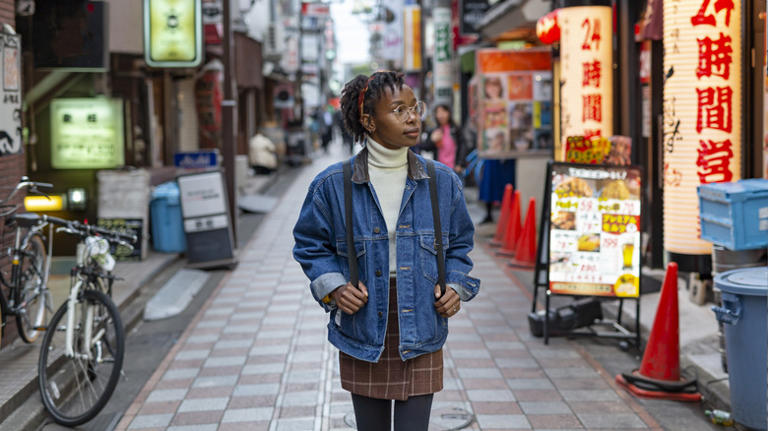
We earn a commission for products purchased through some links in this article.
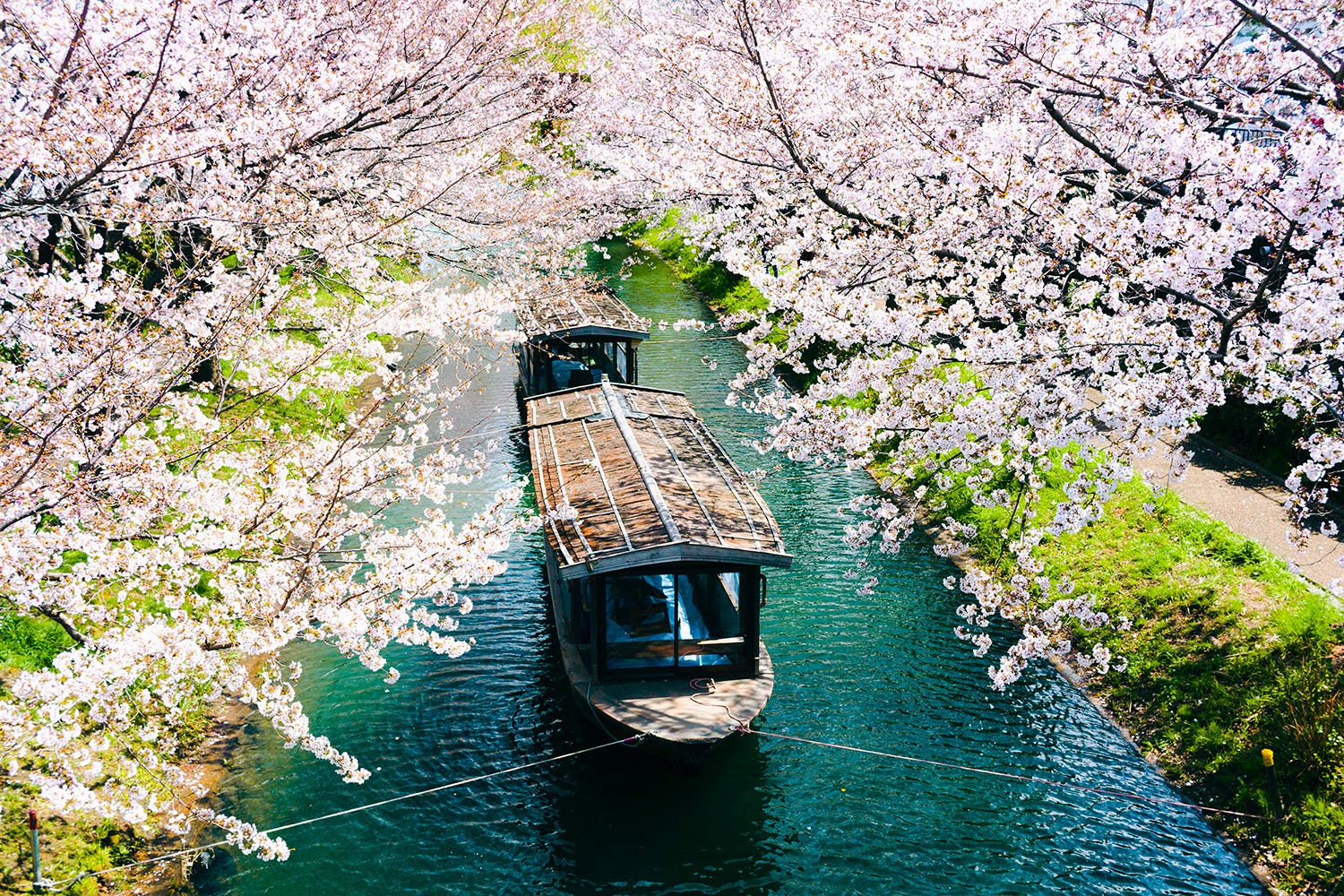
12 of the best places to visit in Japan
From Tokyo to Yokohama, these are the Japanese destinations to tick off your bucket list
There's plenty to see and do in Japan - from staring at the bright lights of Tokyo to finding peace in the scenic Japanese Alps . Many will agree that one of the best times to explore Japan is during the cherry blossom season . Its spectacular spring-time displays can be enjoyed around the country and are celebrated with picnics in the parks and seasonal parties.
While Tokyo and Kyoto are two of the most popular places to visit Japan (and rightly so as they are also some of the most beautiful destinations), there are many places beyond these hotspots, whether it's Japan's cities, islands or mountains you want to explore.
A cruise to Japan is an excellent way to visit multiple regions on one trip and can take you to some undiscovered places. If you're planning ahead for Japan's sell-out cruises, you'll want to check out Good Housekeeping's incredible spring 2025 sailing during the cherry blossom season . It's perfect for getting to know the lesser-known, underrated places, such as Niigata and Toyama.
For any traveller who has always dreamed of visiting Japan, now is the time to get planning and to help inspire your next trip, we've rounded up the best places to visit in Japan in 2024 and beyond.
Check out our favourite Japanese destinations below and visit the Japan National Tourism Organization website for more ideas on places to go.
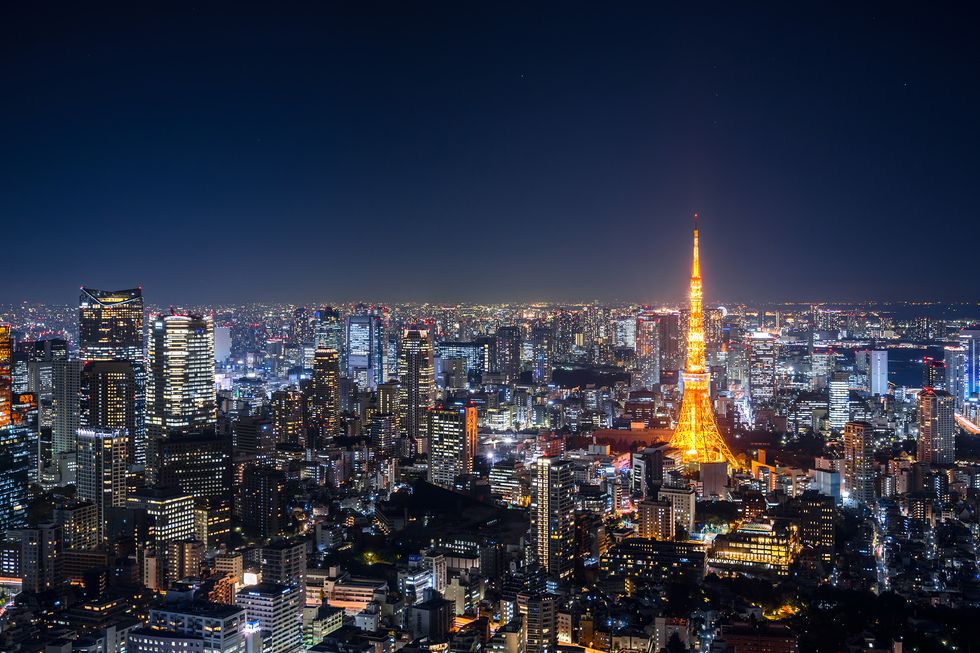
The first stop for many foreign tourists is Japan's vibrant capital and it's not hard to see why. The world’s most populous metropolis, Tokyo offers tradition and innovation, and unlimited opportunities to eat, shop and explore.
Located on Tokyo Bay in the Kanto region of Honshu, Tokyo is known for its fashion and shopping, from the trendy shopping districts of Harajuku and Shibuya, to the luxury flagships of Ginza. Want to know where to go? Shinjuku is a thriving business district; a mix of gleaming skyscrapers and atmospheric back streets with tiny bars. Asakusa is the heart of Tokyo’s downtown, with ancient temples and traditional stores.
Tokyo is a foodie's paradise too, with more Michelin-starred restaurants than any other city in the world, along with hundreds of cheap and delicious ramen shops. You'll want to explore Tokyo's dizzying array of restaurant and dining options, from themed cafés to haute cuisine.
EXPLORE TOKYO ON A 2025 JAPAN CRUISE

Japan’s second largest metropolitan area after Tokyo, Osaka is renowned as one of the most multicultural and cosmopolitan cities in the country. It's only a short shinkansen ride from Tokyo, making it a great place to visit in Japan if the capital city is your base. Visitors can step off the bullet train and into a bright and enticing city. Osaka Castle is a must-visit and home to beautiful grounds you can wander through, especially during the cherry blossom season when the spectacular blooms appear.
You'll want to explore other areas in the city too, including the neon lights of Dotombori Bridge and Osaka’s Minami area. Foodies can indulge in the famous culinary delights found in neighbourhoods such as Tenma and Ura Namba. Okonomiyaki, a savoury pancake made with shredded cabbage, flour, egg and dashi is either cooked at the table for diners or left for you to cook yourself.
Discover Osaka during a 17-day cruise holiday to Japan in spring 2025, when you might witness the spectacular cherry blossom displays in the city.
FIND OUT MORE
OSAKA HOTELS
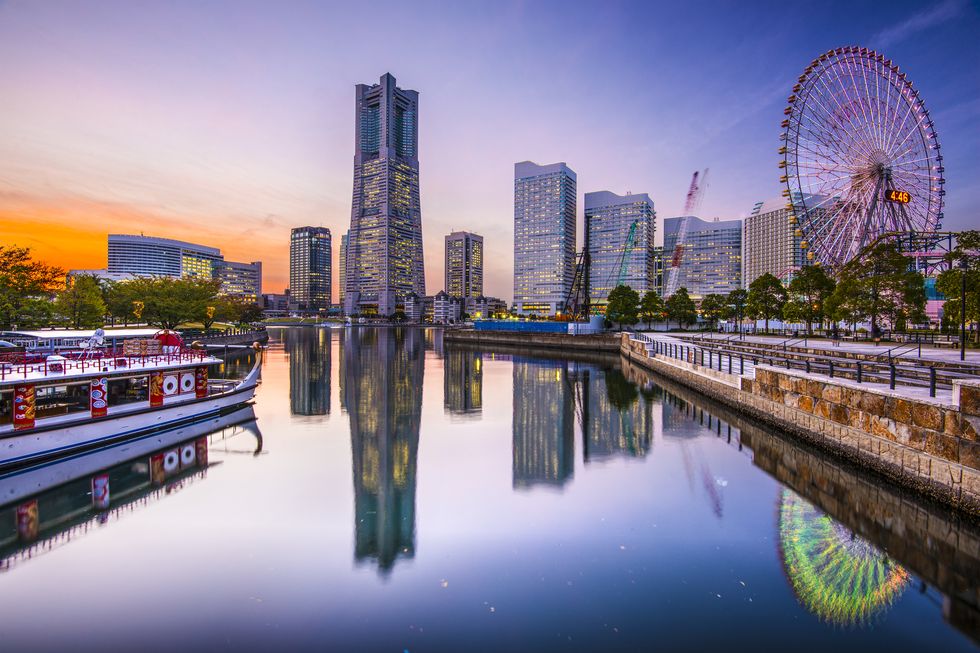
The capital of Kanagawa prefecture, Yokohama grew from a small fishing village during the Edo Period into Japan’s second largest city. A popular city among expats, Yokohama is also home to one of the world’s largest Chinatowns, and preserves some former Western residences in the Yamate district. While here, you must visit one of the city’s traditional and serene Japanese landscape gardens, Sankeien Garden, where you'll find winding trails set among historic buildings.
Another highlight is the bustling new city centre, Minato Mirai, which sits along the water. There's something for everyone here, from shopping centres and an amusement park to museums and relaxing hot spring baths.
Visit Yokohama on the last day of Good Housekeeping's cruise around Japan during the cherry blossom season in 2025.
YOKOHAMA HOTELS
Japanese Alps
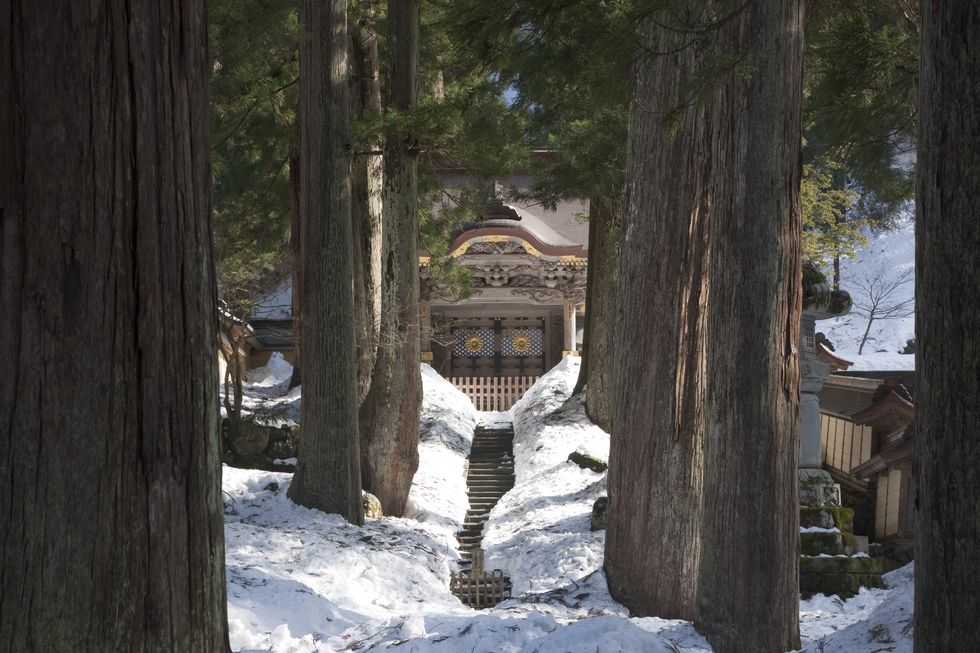
The Japanese Alps are a series of spectacular mountain ranges in central Honshu, which are perfect for those who wish to escape the buzz of the country's most popular cities. Think thick pine forests, snow-tipped peaks and teal rivers. Only two hours from Tokyo, this natural paradise offers an excellent place to explore rural Japan.
The Alps are just the place for climbers, skiers, hikers and nature fans. Yamanaka Onsen is set in the mountainous area of Kaga Onsen, situated along a beautiful gorge. The hot spring resort is not only a top-spot for wellness but for traditional crafts – it's Yamanaka lacquerware has a 400-year history in the region. You can discover the contemplative heart of Zen Buddhism's Soto sect at Eiheiji (pictured), a massive temple complex just outside the city of Fukui. Built by the Buddhist monk Dogen (1200-1253), it has over 70 buildings set amid cedars in the mountains.
Meanwhile, the city of Kanazawa offers rich cultural heritage and a history of artistic innovation and excellence. One of the most important centres for culture and art during the Edo period, it remains a superb place for art lovers and culture enthusiasts.
KANAZAWA HOTELS
See the stunning Japanese Alps on a Good Housekeeping tour from Tokyo to Osaka in 2024 or 2025.
EXPLORE THE JAPANESE ALPS
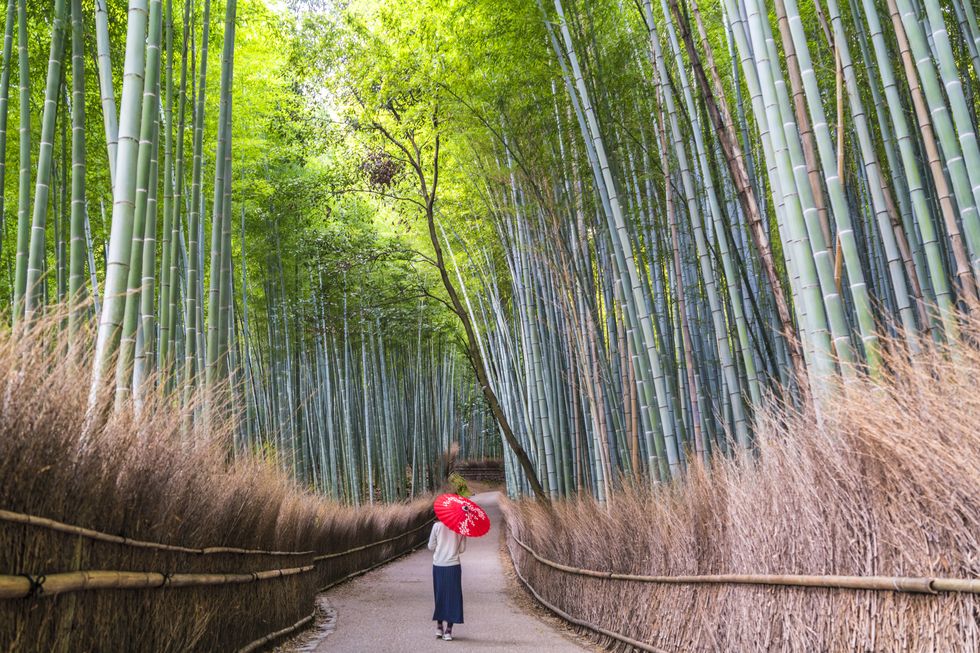
Ancient temples, traditional teahouses and peaceful gardens: Kyoto is all about exploring historic Japan. A city of nearly 2,000 temples and shrines, it's Japan's spiritual heart and a true embodiment of Old Japan. Beyond the futuristic Kyoto Station, modern shopping complexes and sleek luxury hotels lies a city with celebrated centuries-old wonders, breathtaking temples and serene Zen gardens.
Kyoto effortlessly blends the past and present and is a must-see destination for history buffs, art lovers and outdoor enthusiasts.
While here, you'll want to visit the grand temples, shrines, palaces and gardens in and around the city. Be sure to dine on delicious multi-course kaiseki cuisine and stay in a traditional ryokan (Japanese inn), too.
Visit ancient Kyoto as part of our Good Housekeeping 13-day tour across the Japanese Alps.
READ MORE ABOUT OUR JAPAN TOUR
KYOTO HOTELS
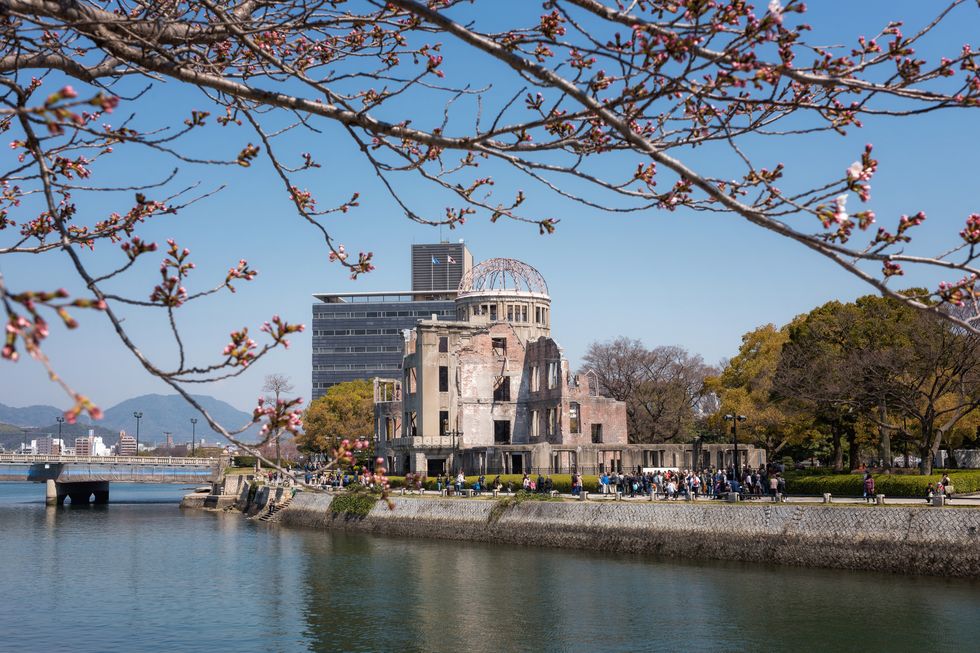
The vibrant city of Hiroshima has a complicated history, great food and friendly locals. While it's probably most famous for being devastated by a nuclear attack during World War II, Hiroshima as a city promotes peace and understanding.
Every year on 6 August, a memorial service is held to commemorate the victims of the 1945 attack. Thousands write messages of peace on paper lanterns that are lit at sunset to float down the river past the iconic remains of the Atomic Bomb Dome.
During a visit, be sure to check out the Peace Park and Atomic Bomb Dome. You should also taste Hiroshima's version of okomiyaki, a local delicacy. Another highlight is going to nearby Miyajima to see its deer and picturesque floating shrine.
Explore Hiroshima during a 2025 spring-time cruise to Japan, where you'll have time to visit the war memorials, shrines and temples.
HIROSHIMA HOTELS

Japan's Tohoku region is home to unspoiled rural landscapes and historical treasures. This northeastern wilderness is a huge region encompassing six rural prefectures that boast custom and heritage. The devastating earthquake and tsunami that struck in 2011 brought out the resilient nature of Tohoku's people, and local passion and pride are putting the area back on its feet.
There's a lot to be proud of, too – dramatic landscapes, history-rich sites, craft sake and a host of outdoor activities like rafting, hiking and skiing.
During a trip to the region, you can enjoy the explosive sound, colour and drama of the Aomori Nebuta Festival in summer. Or wander the temples, gardens and archeological sites of World Heritage-listed Hiraizumi in Iwate.
Don't miss an adventure along Hachinohe's section of the Michinoku Coastal Trail and foodies will want to taste the sweet cherries of Yamagata and the juicy peaches of Fukushima.
TOHOKU HOTELS
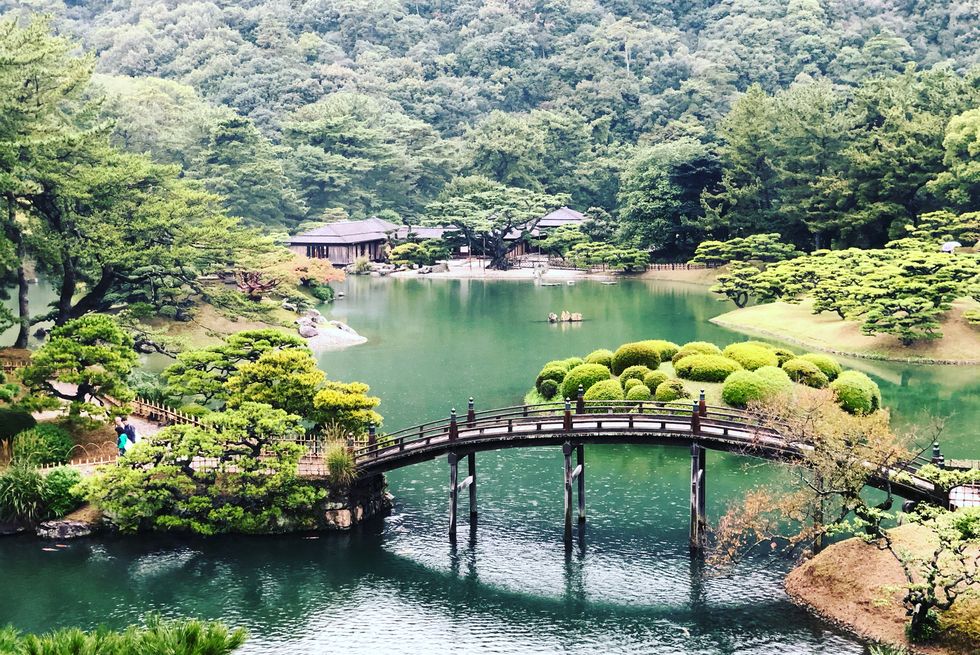
Shikoku might be the smallest of Japan's four main islands, but there are plenty of natural and culture sites to explore. Traditionally remote, Shikoku is now easy to access from Honshu.
The island offers picturesque coastline on the glittering Seto Inland Sea, legendary udon noodles and picture-perfect onsen. Its stunning Iya Valley, Pacific coastline and free-flowing rivers are best explored on hiking, kayaking and surfboarding adventures.
While here, you can sample the famous udon noodles of Kagawa, take the first steps of the 88 Temple Pilgrimage at temple number one, Ryozenji, in Tokushima, and relax in the hot waters of Dogo Onsen.
SHIKOKU HOTELS
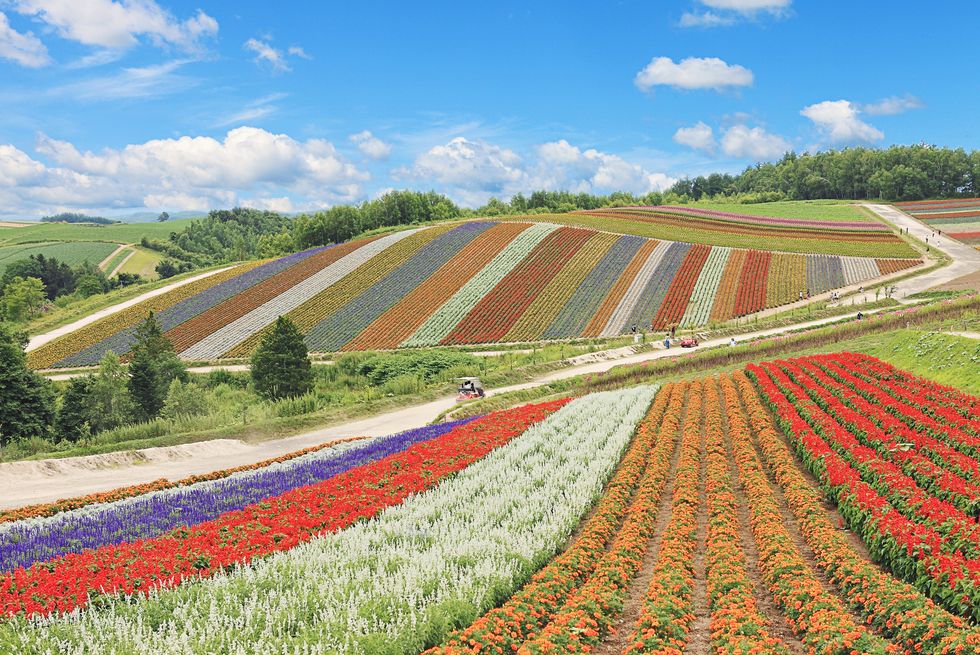
The island of Hokkaido is a popular destination for skiing and snowboarding in winter, thanks to top resorts like Niseko, Rusutsu and Furano. Sapporo, its main city, is also famous for beer, ramen and the annual Sapporo Snow Festival. It's not all about winter fun here, though.
Hokkaido’s mild summers also provide relief from Japan’s humidity, and offer ideal conditions for hiking and exploring the many national parks. Much of Hokkaido is wild and unspoiled, with hot springs and volcanic lakes, so you're never too far from nature.
While here, explore the culture and traditions of the indigenous Ainu people at Lake Akan, and journey to the Shiretoko Peninsula to see free-roaming brown bears, foxes and deer. Visiting in the summer? Everyone will be dazzled by the rolling hills of Furano's lavender farms, while foodies will love dining on fresh seafood including succulent crab, salmon and fresh sushi in Hokkaido, too.
Get to know Hokkaido on Good Housekeeping's 2025 cruise, which stops in the city of Hakodate, which is overlooked by the 334-metre Mount Hakodate.
HOKKAIDO HOTELS
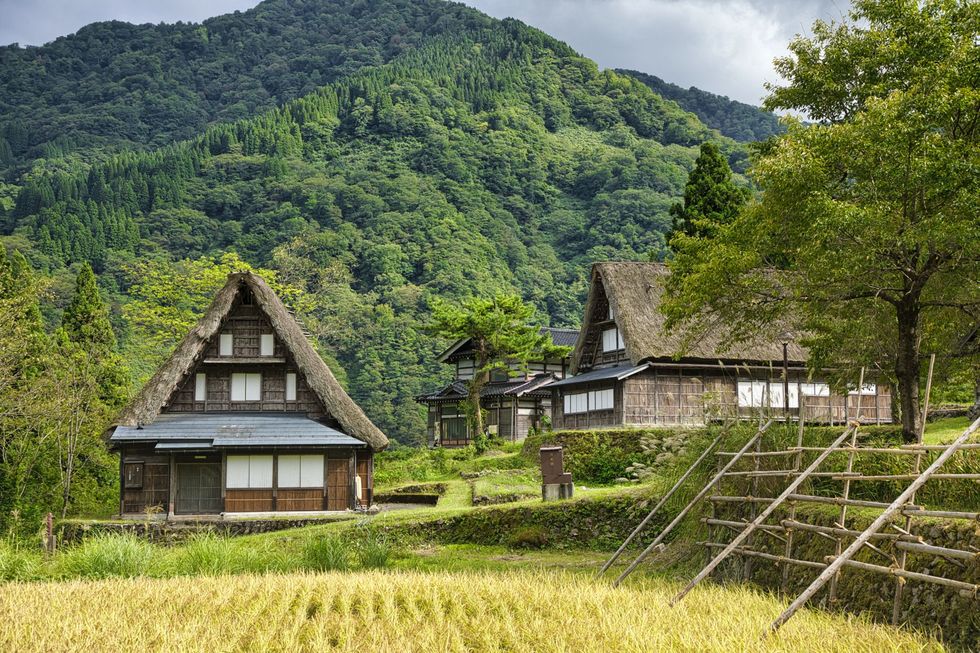
We love the distinct seasons in the Toyama region. It lies around two hours north of Tokyo, blanketed by snow in winter and blooming with cherry blossoms in spring. While Toyoma City is renowned for its fresh seafood, the wider region is particularly lovely. Perhaps unsurprisingly, given it's surrounded by rushing rivers and lush mountains.
This beautiful pocket of Japanese countryside is home to the UNESCO-listed area of Gokayama, which comprises the two villages of Ainokura and Suganuma, known for their carefully preserved thatched buildings called gassho-zukuri . The roofs are designed to resemble the hands of Buddhist monks’ pressed together in prayer. In winter, the snow-covered gassho-zukurie take on the look of a magical, fairy tale scene.
Join a Japanese cruise departing in spring 2025, and you’ll call at Toyama as the cherry blossom emerges. On an excursion, you can make the scenic hour-long journey from the cruise terminal to Gokayama, passing through the Nanto area of Toyama, where the Shogawa River and Oyabegawa rapids flow.
VISIT TOYAMA ON A 2025 JAPAN CRUISE
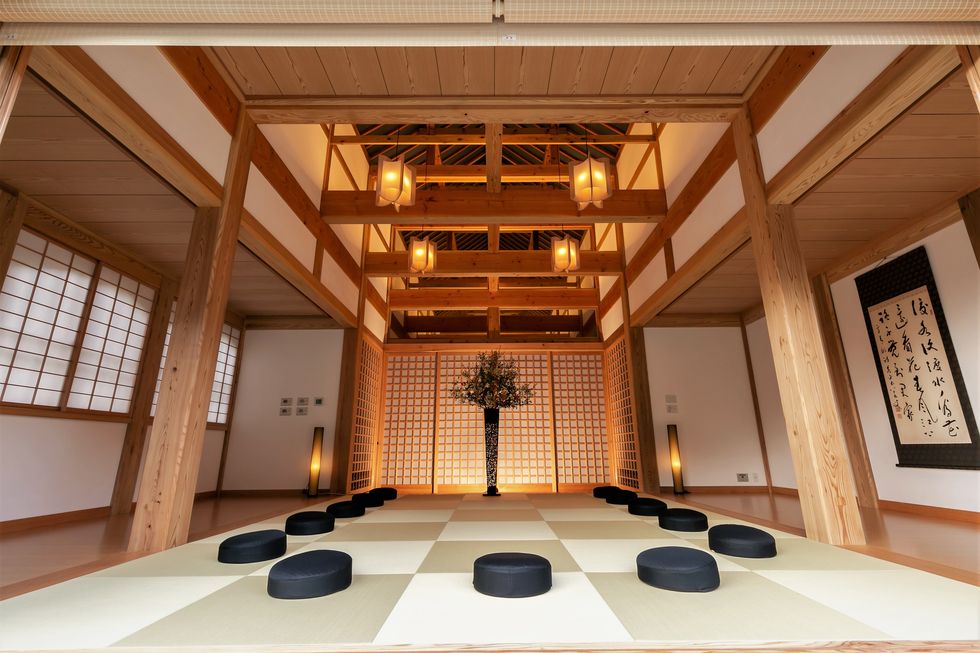
A 2024 extension to Japan's bullet train network makes access to a beautiful region deep in the mountains of the Fukui Prefecture much more accessible for visitors. It offers the chance to visit locations where you can join in with traditional rituals and learn more about Japanese culture in more remote pockets of the country.
The new train journey whisks visitors to locations like Eiheiji, where you’ll find one of the main temples of Zen Buddhism, founded in 1244. It’s a spiritual place amid mountainous scenery and ancient woodland, and guests are invited to join the practice. On departure, guests are presented with a goshuin , a traditional document written in exquisite Japanese calligraphy to certify their visit.
Next to the temple is the Zen Village, where you'll find the beautiful Hakujukan hotel, a sustainably built ryokan. As part of their stay, guests can partake in Zen meditation, known as zazen , before soaking in an open-air bath.
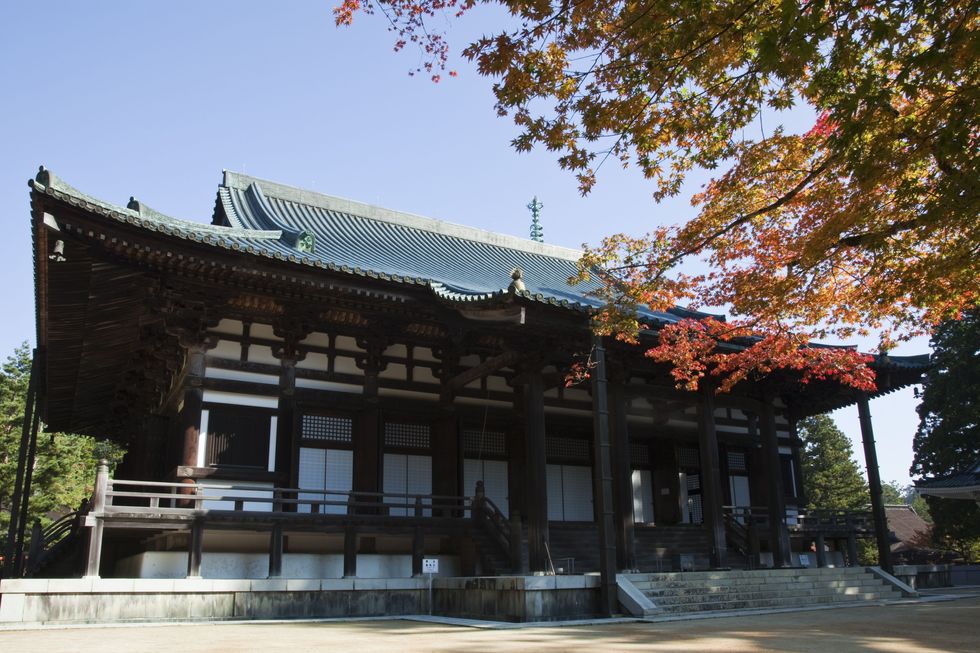
Koyasan, also known as Mount Koya, is thought by many as the most sacred place in all of Japan. Home to the centre of Shingon Buddhism, a sect that was brought to Japan in 805 by Kobo Daishi, one of the country's most prominent Buddhist monks, this mountain settlement comprises over 100 monasteries and temples.
The Shingon headquarters sit within the Kongobuji temple, which is open to visitors. Here you can learn about how Daishi founded the settlement and visit peaceful Banryutei Rock Garden, Japan’s largest rock garden.
Thanks to its verdant peaks and winding valleys, Koyasan is a popular place for hiking and is the starting point for the Shikoku Pilgrimage, a holy route that stretches roughly 750 miles and takes in 88 temples.
Koyasan is easy to access from Osaka via train for a day trip, but stay the night in shukubo (traditional temple lodgings) and you can enjoy a more immersive experience, interacting with monks and sampling their vegetarian cooking.
Visit serene Kōyasan part of Good Housekeeping's 13-day Japan tour.
EXPLORE KOYASAN ON A JAPAN TOUR
KOYASAN HOTELS

@media(max-width: 64rem){.css-o9j0dn:before{margin-bottom:0.5rem;margin-right:0.625rem;color:#ffffff;width:1.25rem;bottom:-0.2rem;height:1.25rem;content:'_';display:inline-block;position:relative;line-height:1;background-repeat:no-repeat;}.loaded .css-o9j0dn:before{background-image:url(/_assets/design-tokens/goodhousekeeping/static/images/Clover.5c7a1a0.svg);}}@media(min-width: 48rem){.loaded .css-o9j0dn:before{background-image:url(/_assets/design-tokens/goodhousekeeping/static/images/Clover.5c7a1a0.svg);}} Travel
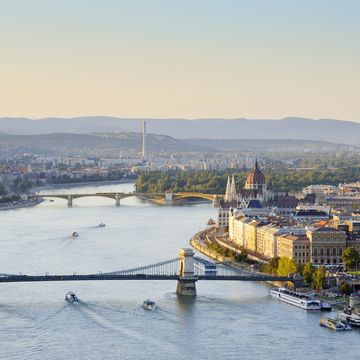
The best river cruises

The best cruises for 2024
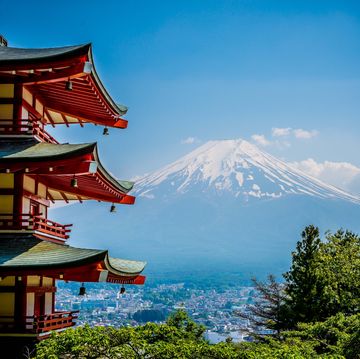
5 amazing holidays to Japan

The best spring holidays for 2024
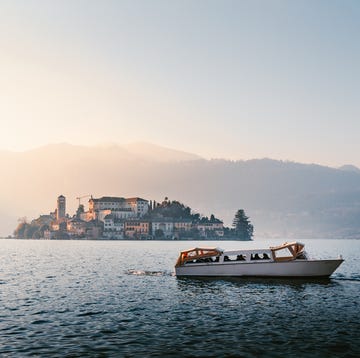
Lake Orta is the hidden gem of the Italian Lakes

Best time to visit Japan: Here's when to go
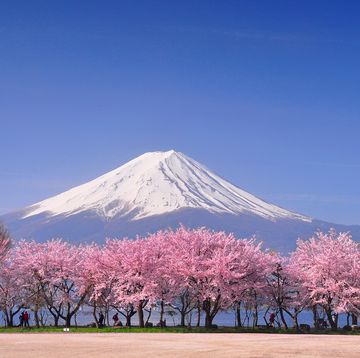
Surprising things about Japan's cherry blossom
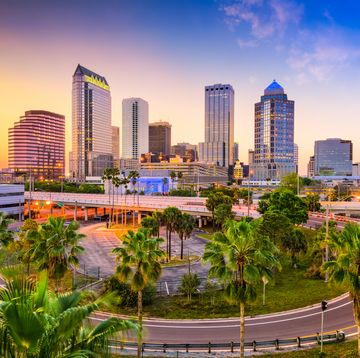
A guide to Tampa, the overlooked city in Florida

The best hotels in Wiltshire for a bucolic break

Michael Portillo is back with a new travel series

A look inside Highclere Castle
Mountain View, CA
Mountain View
Around the Globe
Hurricane tracker.
Severe Weather
Radar & Maps
News & features, winter center, news / weather news, minor damages reported after 6.6 magnitude earthquake hits japan.
By Doug Cunningham, UPI
Published Apr 18, 2024 4:38 AM PDT | Updated Apr 18, 2024 4:38 AM PDT

Partner Content

(Credit: Getty images)
April 17 (UPI) -- A 6.6 magnitude earthquake hit Japan at 11:14 p.m. Wednesday local time, off the west coast of Shikoku Island.
Initial reports said there was no threat of tsunami and only minor injuries and damage reported.
The quake's epicenter, where the 6.6 magnitude was recorded, was in a strait called the Bungo-Suido Channel between Kyushu and Shikoku Islands.
According to news conference statements from Chief Cabinet Secretary Yoshimasa Hayashi, light injuries were reported, along with minor damage like broken water pipes, downed streetlights and some landslides onto a national highway.
The 6.6 measurement was on the Japanese scale of zero to 7.
The strongest measured impacts were in Ainan Town, Sukumo City, and Uwajimia City, according to Japan's Meteorological Agency.

Weather News

Heat caused record-high rates of health emergencies last year
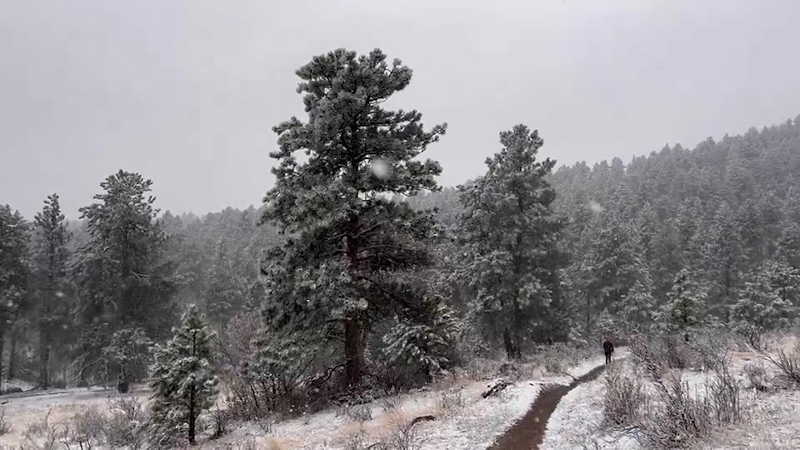
April snow blankets Colorado landscapes

How to keep frost from killing your garden
Top Stories
Trending Today
Accuweather early, accuweather prime, solar eclipse 2024.
Winter Weather
Potentially damaging frosts and freezes coming to Midwest, Northeast
2 hours ago

Tornadoes, storms to escalate as 'dangerous pattern' evolves over US
18 hours ago

Meteor shower drought to end as Lyrids peak this weekend
16 hours ago

Weather Forecasts
Water-logged areas of south-central US facing renewed flooding risk

Warmest weather since 2023 to build over Southwest into next week

Featured Stories
AccuWeather Ready
Top 3 tips on lightning safety from a leading safety expert
19 hours ago

Some bumblebees can survive underwater for up to a week, study shows

More than 100 killed across Pakistan and Afghanistan as flash floods a...

Camels evolved from a cold-weather ancestor

5 ways the Columbia disaster changed spaceflight forever

We have updated our Privacy Policy and Cookie Policy .
Get AccuWeather alerts as they happen with our browser notifications.
Notifications Enabled
Thanks! We’ll keep you informed.
We use cookies on this site to enhance your user experience. If you continue to browse you accept the use of cookies on our site. See our Cookie Policy for more information.
- Media & PR
- Meetings & Events
- School Groups
- Travel Trade
- Select Language 简体中文 繁體中文(香港) 繁體中文(臺灣) India (English) Bahasa Indonesia 한국어 ภาษาไทย Tiếng Việt Singapore (English) Philippines (English) Malaysia (English) Australia/New Zealand (English) Français Deutsch Italiano Español United Kingdom (English) Nordic countries(English) Canada (English) Canada (Français) United States (English) Mexico (español) Português العربية Japan(日本語) Global (English)
- India (English)
- Bahasa Indonesia
- Singapore (English)
- Philippines (English)
- Malaysia (English)
- Australia/New Zealand (English)
- United Kingdom (English)
- Nordic countries(English)
- Canada (English)
- Canada (Français)
- United States (English)
- Mexico (español)
- Global (English)
- Fujiyoshida
- Shimonoseki
- Ishigaki Island
- Miyako Island
- Kerama Island
- Tokyo Island
- Koka & Shigaraki
- Hida Takayama
- Ginza, Nihonbashi
- Beppu & Yufuin (Onsen)
- Ginzan Onsen
- Nagasaki Islands

- Kumano Kodo
- Shikoku Karst
- Amami Oshima
- Hachimantai
- Omihachiman
- Aizuwakamatsu

- Diving in Japan
- Skiing in Japan
- Seasonal Flowers in Japan
- Sustainable Outdoors
- Off the Beaten Track in Japan
- Scenic Spots
- World Heritage
- Home Stays & Farm Stays

- Japanese Gardens
- Japanese Crafts
- Temple Stays
- Heritage Stays
- Festivals and Events
- Theater in Japan
- Japanese Tea Ceremony
- Cultural Experiences in Japan
- Culture in Japan

- Local Cuisine Eastern Japan
- Local Cuisine Western Japan
- Local Street Food
- Japan's Local Ekiben
- Japanese Whisky
- Vegetarian and Vegan Guide
- Sushi in Japan Guide
- Japanese Sake Breweries

- Art Museums
- Architecture
- Performing Arts
- Art Festivals
- Japanese Anime and Comics
- Japanese Ceramics
- Local Crafts

- Scenic Night Views
- Natural Wonders
- Theme Parks
- Samurai & Ninja
- Iconic Architecture

- Wellness Travel in Japan
- Japanese Ryokan Guide
- A Guide to Stargazing in Japan
- Relaxation in Japan
- Forest Bathing (Shinrin-yoku)

- Experiences in Japan
- Enjoy my Japan
- National Parks
- Japan's Local Treasures
- Japan Heritage
- Snow Like No Other
- Wonder Around Japan

- Visa Information
- Getting to Japan
- Airport Access
- COVID-19 Practical Information
- Anime Tourism
- Countryside Stays
- Sustainable Travel
Accommodation
- Sample Itineraries
- Travel Agents
- Deals and Tours

- Traveling by Rail
- How to Travel by Train and Bus
- JR Rail Passes
- Train Passes and Discounted Tickets
- Scenic Railways
- Renting a Car
- Yokohama Cruise Port Access
- Travel Brochures
- Useful Apps
- Accommodation Types
- Online Reservation Sites
- Eco-friendly Accommodation
- Luxury Accommodations
- Traveling With a Disability
- Hands-free Travel
- How to Book a Certified Tour Guide
- Volunteer Guides
- Tourist Information Center

- Japanese Manners
- Sustainable Travel in Japan
- Spring in Japan
- Summer in Japan
- Autumn in Japan
- Winter in Japan
- Seasonal Attractions
- Monthly Events Calendar
- Cherry Blossom Forecast
- Autumn Leaves Forecast

- Japan Visitor Hotline
- Travel Insurance in Japan
- Japan Safe Travel Information
- Accessibility in Japan
- Vegetarian Guide
- Muslim Travelers
- Safety Tips

- All News & Blog
- Travellers Blog
- Guides to Japan
- Stories of Japan
- The Other Side of Japan
- Media Releases
- JAPAN Monthly Web Magazine

My Favorites
${v.desc | trunc(25)}
Planning a Trip to Japan?
Share your travel photos with us by hashtagging your images with #visitjapanjp
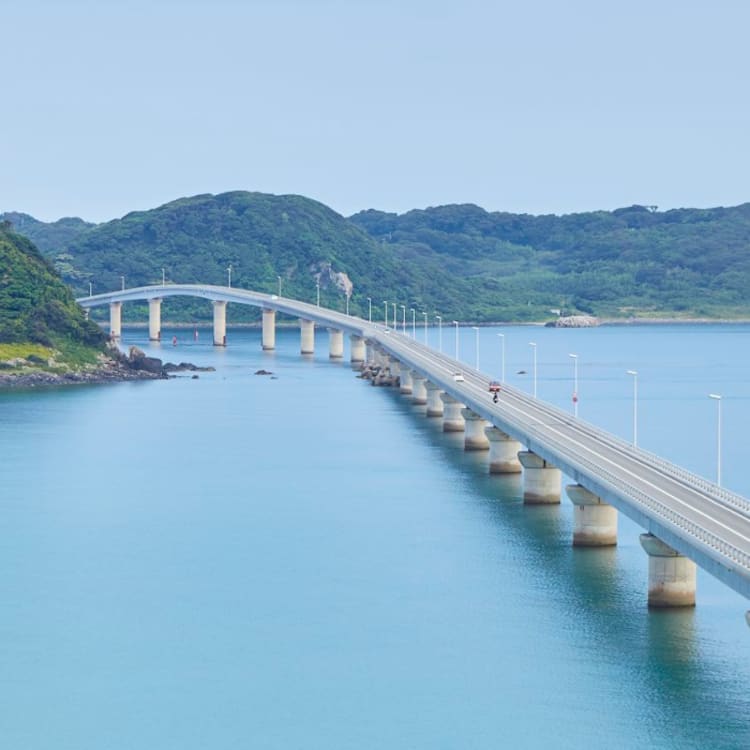
COVID-19 Health & Safety Information
Please note this page is no longer being updated..
For the latest information on entry to Japan, please visit the following page: COVID-19: Practical Information for Traveling to Japan
Information on the easing of travel restrictions to Japan (as of 11 November 2022)
*For passport holders from other countries, please see the links below for the Embassies and Consulates-General of Japan for more information.
PCR tests or quarantine on arrival are not required, regardless of vaccination status. For more information on the process and entry requirements, refer to the below image or visit this page to view the information in checklist form.
Process Map
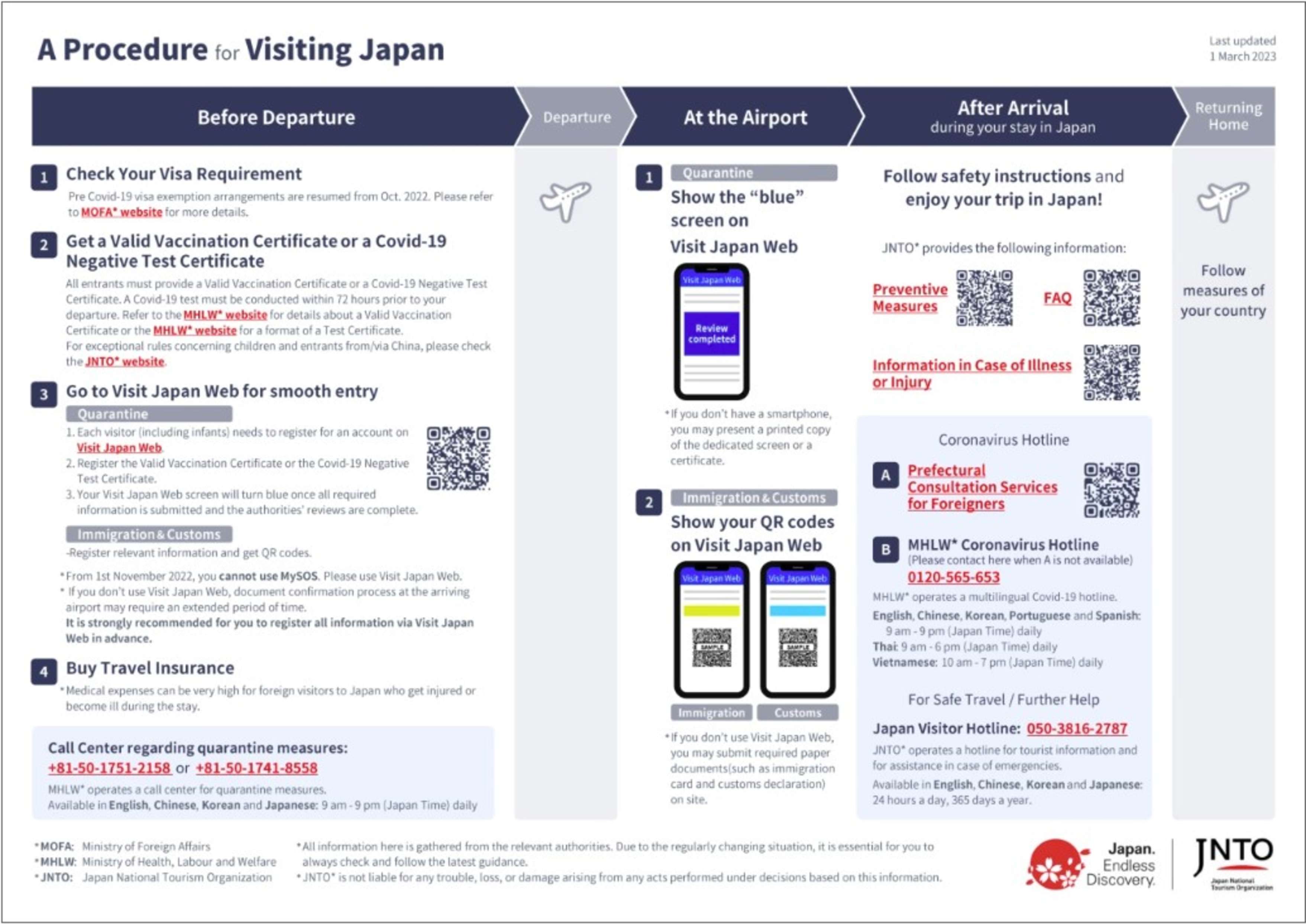
Useful Resources
Au / nz government travel advisories , visit japan / jnto sites .
The Coronavirus travel restrictions page is a travel advisory updated regularly in line with the official information provided by the Government of Japan.
COVID-19: Practical Information for Traveling to Japan is an information page built to help travellers plan a safe trip around Japan.
See specific measures taken by Japanese organisations below.

Airlines & Airports

The ANA Care Promise set of health and safety initiatives has been awarded a 5-Star COVID-19 Safety Rating from SKYTRAX, the highest possible rating, and one that only a few airlines worldwide has achieved.

The JAL FlySafe set of health and safety initiatives has been recognised by Skytrax with a 5-Star COVID-19 Airline Safety Rating, along with a Diamond Certification by APEX Health Safety powered by SimpliFlying.
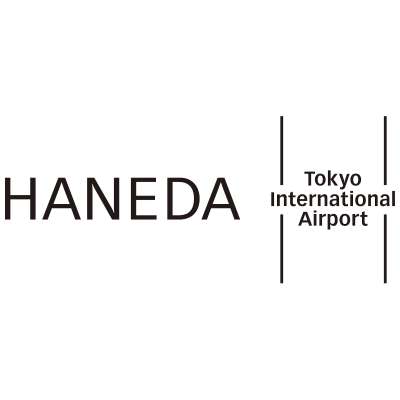
Haneda Airport’s webpage includes information on how to use airport facilities safely and measures to prevent the spread of infection, especially in regards to the 3 Cs: closed spaces, crowded spaces, close-contact settings.

Narita Airport has implemented nine key initiatives to prevent the spread of infection including the installation of transparent barriers, ensuring optimum air ventilation and stringent cleaning practices.
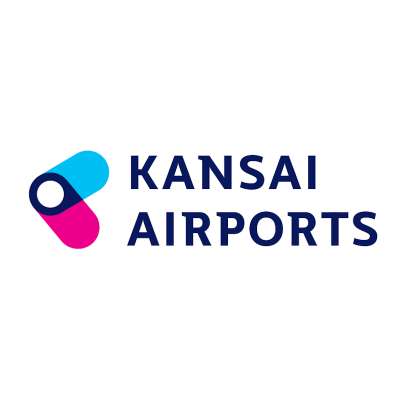
Kansai International Airport has a number initiatives in place to prevent the spread of infection including the use of thermographic cameras, increased cleaning and disinfection of surfaces and social distancing measures.

Railway Companies
Japan has an expansive railway network that is owned and operated by many companies. Japan Railways (JR) is the most well-known thanks to the popular JR Pass and high-speed shinkansen (bullet trains). Its vast and elaborate network can be a bit daunting to navigate at first - it's actually operated by six separate companies: JR Hokkaido, JR East, JR Central, JR West, JR Shikoku, JR Kyushu.
In particular, please note the popular Tokaido-Sanyo Shinkansen (Tokyo to Hakata) is run by both JR Central and JR West – JR Central operates the section from Tokyo to Osaka, and JR West operates the section from Osaka and Hakata.

JR Hokkaido services the northern island of Hokkaido and also operates the section of the shinkansen route between Shin-Aomori Station on Honshu and Shin-Hakodate-Hokuto Station in southern Hokkaido. Download the ‘Major actions on preventing the spread of novel coronavirus’ PDF from their website for more information.

JR East services eastern Japan including the capital of Tokyo and the north-eastern region of Tohoku. It also operates the Hokuriku Shinkansen which stops at cities such as Nagano, Kanazawa and Niigata.

JR Central services central Japan and operates the Tokaido Shinkansen, a popular route that runs between Tokyo and Osaka travels through major cities such as Yokohama, Nagoya and Kyoto. The ‘COVID-19 Protective Measures’ PDF is available to download from their website.

JR West services western Japan, including well-known cities such as Nara, Osaka, Kyoto, Wakayama, Kobe and Hiroshima. It operates the Sanyo Shinkansen which runs from Shin-Osaka Station to Hakata Station in Fukuoka Prefecture on the southern island of Kyushu.
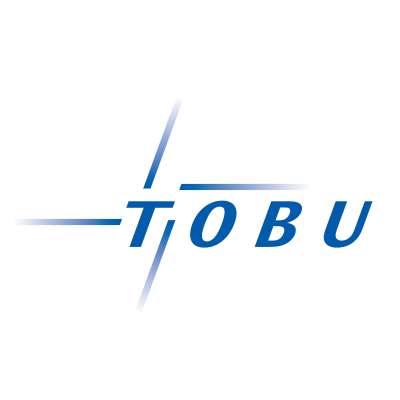
Tobu services the area of Tokyo and surrounds, providing connections to popular destinations such as Nikko, Asakusa, Tokyo Skytree and Kawagoe. Information on the latest measures to prevent the spread of infection is available to download from their website.
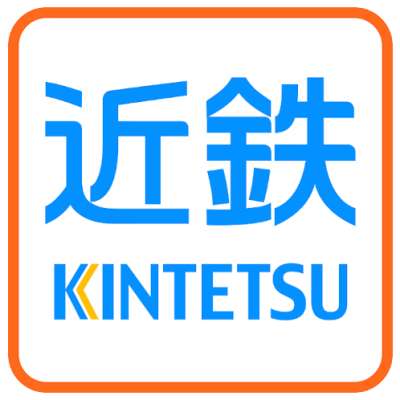
Kintetsu Railway services the areas of Osaka, Kyoto, Nara, Ise-shima (Mie Prefecture) and Nagoya. As part of a number of measures implemented to prevent the spread of infection, Kintestsu has sprayed the interior of its train carriages with an antiviral and antibacterial treatment.
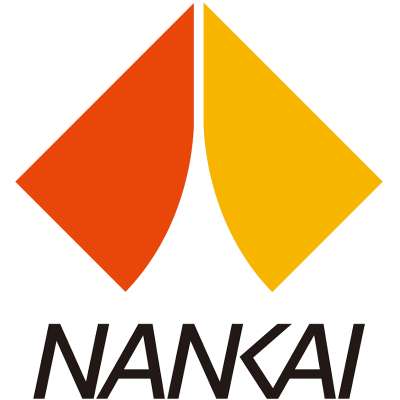
Nankai Electric Railway services southern Osaka Prefecture and Wakayama Prefecture. It connects the southern hub of Namba to Kansai International Airport, Wakayama and Koyasan. Information on health and safety measures that have been implemented is available to download from their website.

JR-West Hotels have implemented new 'Clean & Safety' hygiene standards, and have received the coveted Trusted Cleanliness Badge, a certificate issued by Trust You, one of the top class platforms in the hotel industry. (JR-West Hotels brands include Hotel Granvia, Hotel Vischio by Granvia, Nara Hotel and Potel.)

Prince Hotels has developed the Prince Safety Commitment, a set of new protocols for hygiene and disinfection to be applied to all the hotels under their brands. These will enable Prince Hotels to provide guests with a safe and clean environment during their stay.

Palace Hotel Tokyo has achieved the GBAC STAR™ Facility Accreditation and has become Sharecare Health Security VERIFIED™ with Forbes Travel Guide. These accreditations show Palace Hotel Tokyo is committed to implementing best practices and operating as safely as possible.

Imperial Hotel Osaka has received GBAC STAR™ accreditation and is Sharecare Health Security VERIFIED™ with Forbes Travel Guide. These demonstrate the hotel meets international hygiene standards for infectious disease prevention measures and is committed to following best practices to ensure the safety and comfort of its guests.

Destinations

Miyazaki Prefecture Tourism Association has produced a video to introduce the safety measures taken by the Miyazaki Tourism Industry for the post-COVID-19 era.

Attractions

Read about the health and safety measures that are in place at Tokyo Disneyland and Tokyo DisneySea as well as update on the status of rides, attractions, restaurants and other facilities at each theme park.
- JNTO Sydney
- COVID-19 Health & Safety Information
Please Choose Your Language
Browse the JNTO site in one of multiple languages

IMAGES
VIDEO
COMMENTS
U.S. citizens needing urgent assistance should contact us by using our inquiry form or phone (03-3224-5000). If you need after-hours assistance in an emergency, please call 03-3224-5000 and ask to speak with the Embassy's duty officer. Emergency Contact Information for U.S. citizens.
Last updated: Wednesday, May 31st, 2023. Get ready for your dream trip to Japan! Japan is now open to travelers from all countries or regions! Those who enter Japan on or after April 29th 2023 are not be required to present a valid vaccination certificate or a Covid-19 negative test certificate.
The official site of Japan National Tourism Organization is your ultimate Japan guide with tourist information for Tokyo, Kyoto, Osaka, Hiroshima, Hokkaido and other top Japan holiday destinations. We offer travel information to make your Japan travel more comfortable and enjoyable.
CDC recommends that travelers avoid all nonessential travel to Japan. Widespread ongoing transmission of a respiratory illness caused by a novel (new) coronavirus (COVID-19) has been reported in Japan. Widespread ongoing transmission means that people have been infected with the virus, but how or where they became infected is not known, and ...
Japan will reinstate visa-free travel on October 11 for travelers from more than 68 countries, including the US, Canada, the UK, Ireland, Australia, Mexico, Argentina, Singapore, Thailand and more. If a passport holder a country on the visa-waiver list, you won't need a visa to travel to Japan if you're staying for less than 90 days.
Since October 11th 2022, Japan has fully reopened its borders to tourists, allowing visa-free, independent travel to Japan once again 🙌. A visa is no longer required for short stays (up to 90 days). It's not necessary to book through a travel agency. Daily entry caps have been phased out entirely.
The basics. It's official: Japan will reopen to tourism on October 11. Ad Feedback. Prime Minister Fumio Kishida announced the news in September at a press conference. "We will lift the ...
Call us in Washington, D.C. at 1-888-407-4747 (toll-free in the United States and Canada) or 1-202-501-4444 (from all other countries) from 8:00 a.m. to 8:00 p.m., Eastern Standard Time, Monday through Friday (except U.S. federal holidays). See the State Department's travel website for the Worldwide Caution and Travel Advisories.
Who is currently allowed to travel to Japan? Entry to Japan is back to pre-pandemic visa arrangements. In other words, passport holders of countries including the UK, most of Europe, USA, Canada, Australia and New Zealand can make use of Japan's 90-day visa-free short term stay arrangements just as it was before March 2020. During the pandemic, the Japanese government separated all countries ...
Japan - Level 1: Exercise Normal Precautions. Reissued after periodic review without changes. Exercise normal precautions in Japan. Read the country information page for additional information on travel to Japan. If you decide to travel to Japan:
Japan is now open to travelers from all countries or regions. Travelers are required to provide either a valid COVID-19 vaccination certificate (3 doses) of WHO-approved vaccines or a certificate of negative result of pre-departure COVID-19 test conducted within 72 hours prior to departing from the originating country/region.
Tourists from all countries or regions can visit Japan on a package tour (including non-guided package tour). Learn about the current situation, checklist for tourists, entry restrictions and safety measures before you travel.
Japan travel restrictions have been eased but travelers are asked to follow guidelines with regard to masks, social distancing, dining etiquette, and more. As of April 2023, a proof of vaccination or a negative Covid-19 test are no longer required for all travelers arriving in Japan.
The effect of Pre-Clearances (i.e. visa exemptions) granted by the Japanese Government to APEC Business Travel Card (ABTC) issued by the following countries was also resumed on October 11, 2022. For more information on the APEC Business Travel Card (ABTC), please refer to the link below: APEC Business Travel Card (ABTC)(Japanese)
If your travel plans in Japan include outdoor activities, take these steps to stay safe and healthy during your trip: Stay alert to changing weather conditions and adjust your plans if conditions become unsafe. Prepare for activities by wearing the right clothes and packing protective items, such as bug spray, sunscreen, and a basic first aid ...
An estimated 23.3 million people in Japan are expected to travel during the Golden Week holidays, marking a robust resurgence to 90% of pre-pandemic levels, according to survey results from travel ...
1. They must now be from a "blue" country to be allowed to visit Japan as a tourist. This includes the US, UK, Australia, Thailand, Singapore and many other countries. 2. To travel to Japan now, you must book a guided tour. You do not need to join a group tour. You can travel alone, as a couple, as a family, or with friends, but you must ...
What are the current travel restrictions in Japan due to the COVID-19 pandemic? Source: The Japan Times. As the COVID-19 pandemic continues to affect countries around the world, including Japan, travel restrictions have been put in place to control the spread of the virus. These restrictions vary depending on the country of origin and the ...
When planning a trip to Japan, make sure you know if there are any travel restrictions in place and any entry requirements you need to follow.. Japan has now completely removed all COVID-19 entry restrictions.Immigration rules have returned to normal from May 8, 2023.. If you are thinking about traveling to Japan, you can check this regularly updated page and find out what you need to visit ...
Still current at: 16 April 2024 Updated: 21 February 2024 Latest update: Removal of outdated information about earthquakes and tsunami at Noto Peninsula ('Warnings and insurance' page) and ...
Japan is prone to earthquakes and tsunamis. Japanese authorities have detailed plans to respond to natural disasters. In an earthquake, follow the advice of local authorities and emergency signage. Move to higher ground immediately if you're in a coastal region after a major earthquake. Check the Disaster Prevention Portal for more information.
9. Visit Japan Web. Visit Japan Web is a convenient way to register information for quarantine, immigration and customs procedures before you enter Japan. You can upload an electronic certificate of a negative COVID-19 test result for a test conducted within 72 hours of travel, and generate a QR code. The service is available in English and ...
Completing the scene are the serene reflecting pool and traditional Japanese gardens that contain lush foliage, manicured trees, and scenic walking paths. 1 Kinkakuji-cho, Kita-ku, Kyoto-shi, Kyoto, +81 075-461-0013, shokoku-ji.jp. Open daily 9am-5pm. Admission is 500 JPY. Admire Ryoan-ji Temple.
People needing consultation services related to COVID-19 vaccines may contact the Tokyo Metropolitan Government COVID-19 Vaccine Side Effects Consultation Center at 03-6258-5802. Assistance: Follow us on Twitter and Facebook . U.S. Embassy Tokyo. Telephone: 03-3224-5000, After-Hours: 03-3224-5000. Email: [email protected].
Public Wi-Fi is surprisingly scarce in Japan, which can put you in some tough spots if you get lost mid-metro commute. Fortunately, pocket Wi-Fi exists -- and it is a lifesaver. For as cheap as $5 ...
Tokyo. Yongyuan Dai. The first stop for many foreign tourists is Japan's vibrant capital and it's not hard to see why. The world's most populous metropolis, Tokyo offers tradition and innovation ...
A 6.6 magnitude earthquake hit Japan at 11:14 p.m. Wednesday local time, off the west coast of Shikoku Island.
The Coronavirus travel restrictions page is a travel advisory updated regularly in line with the official information provided by the Government of Japan. COVID-19: Practical Information for Traveling to Japan is an information page built to help travellers plan a safe trip around Japan. See specific measures taken by Japanese organisations below.
Dubai International Airport, one of the world's busiest aviation hubs, remained in disarray Thursday after unprecedented heavy rain led to airliners having to negotiate flooded runways.